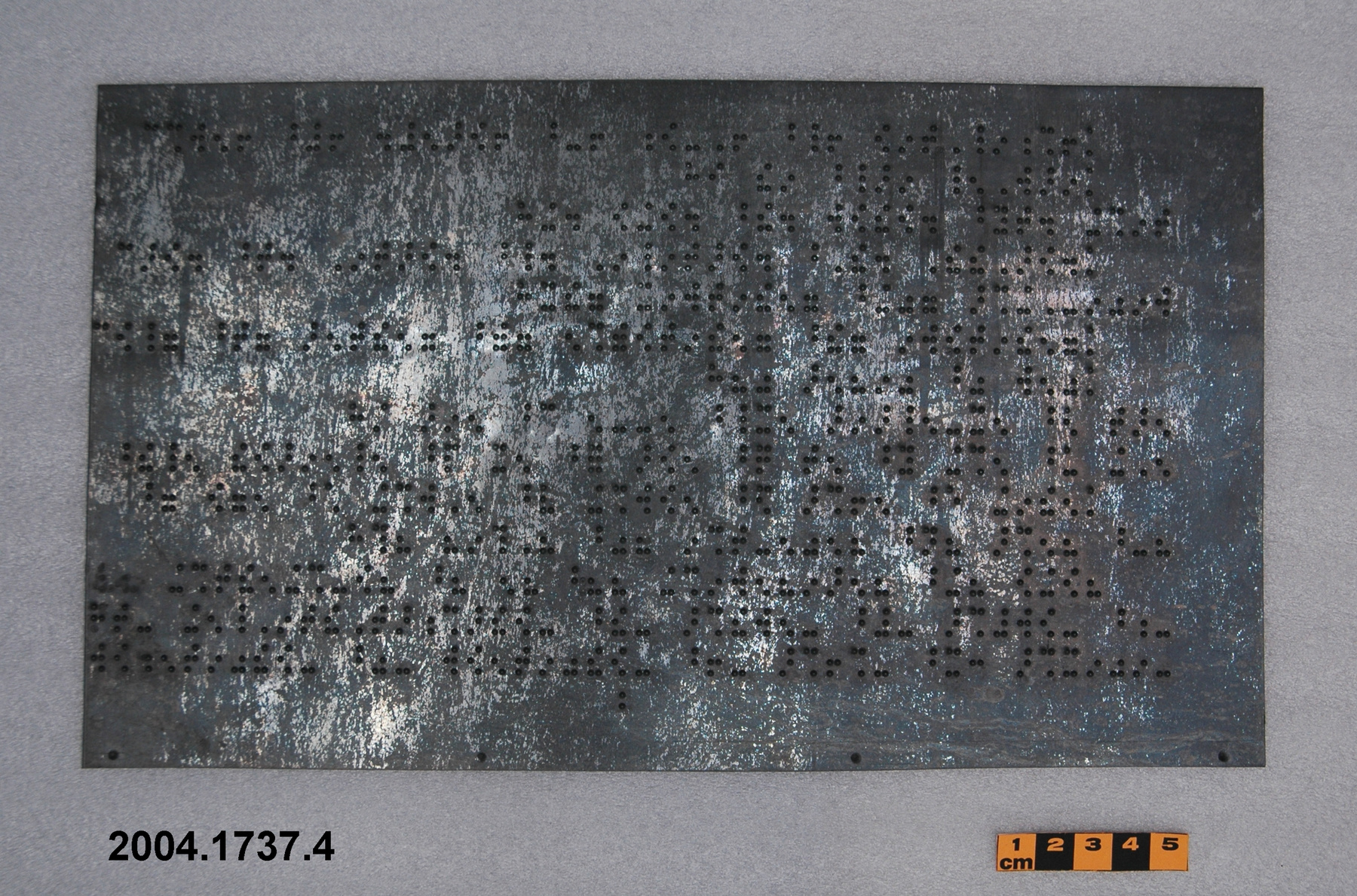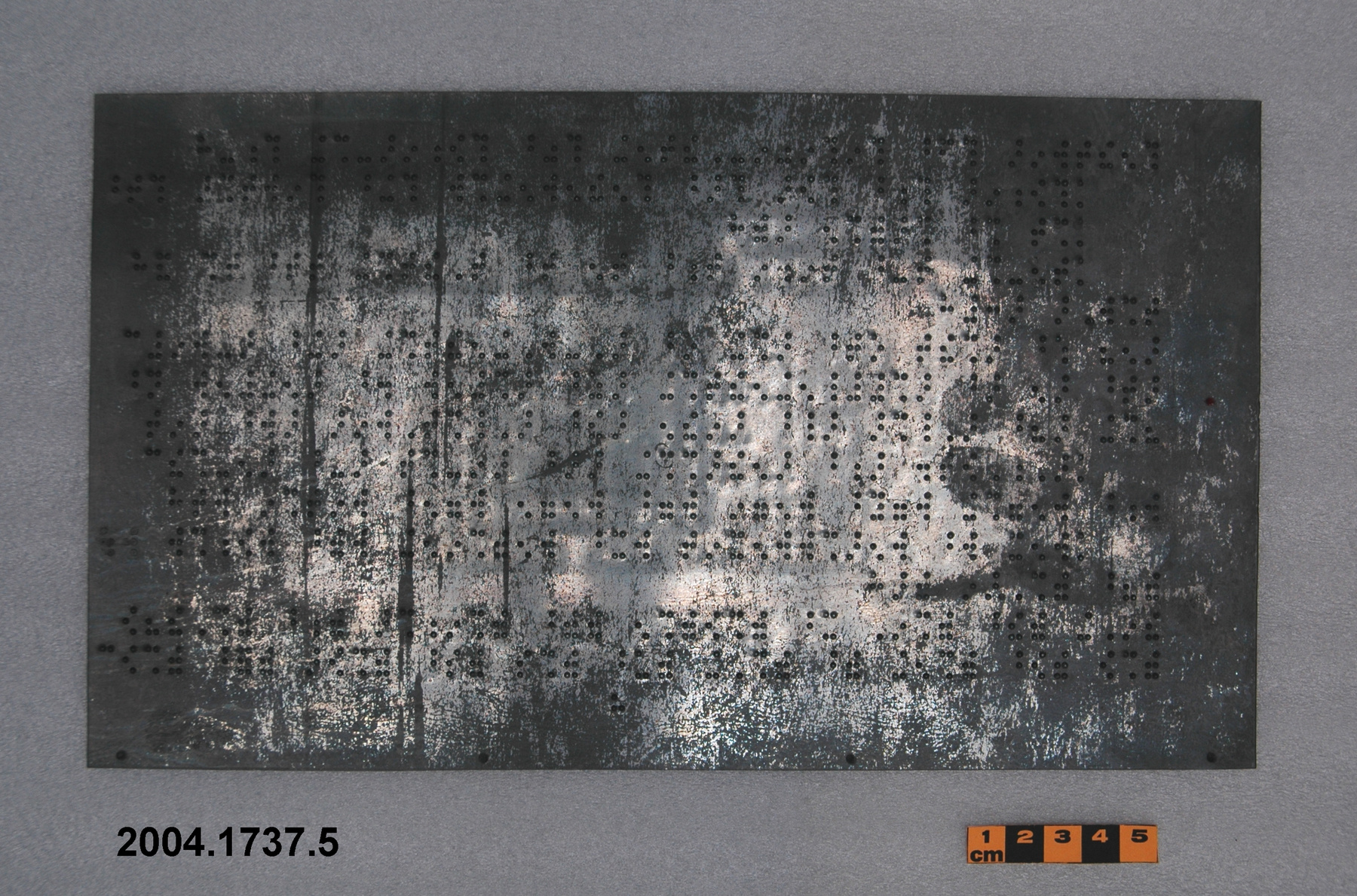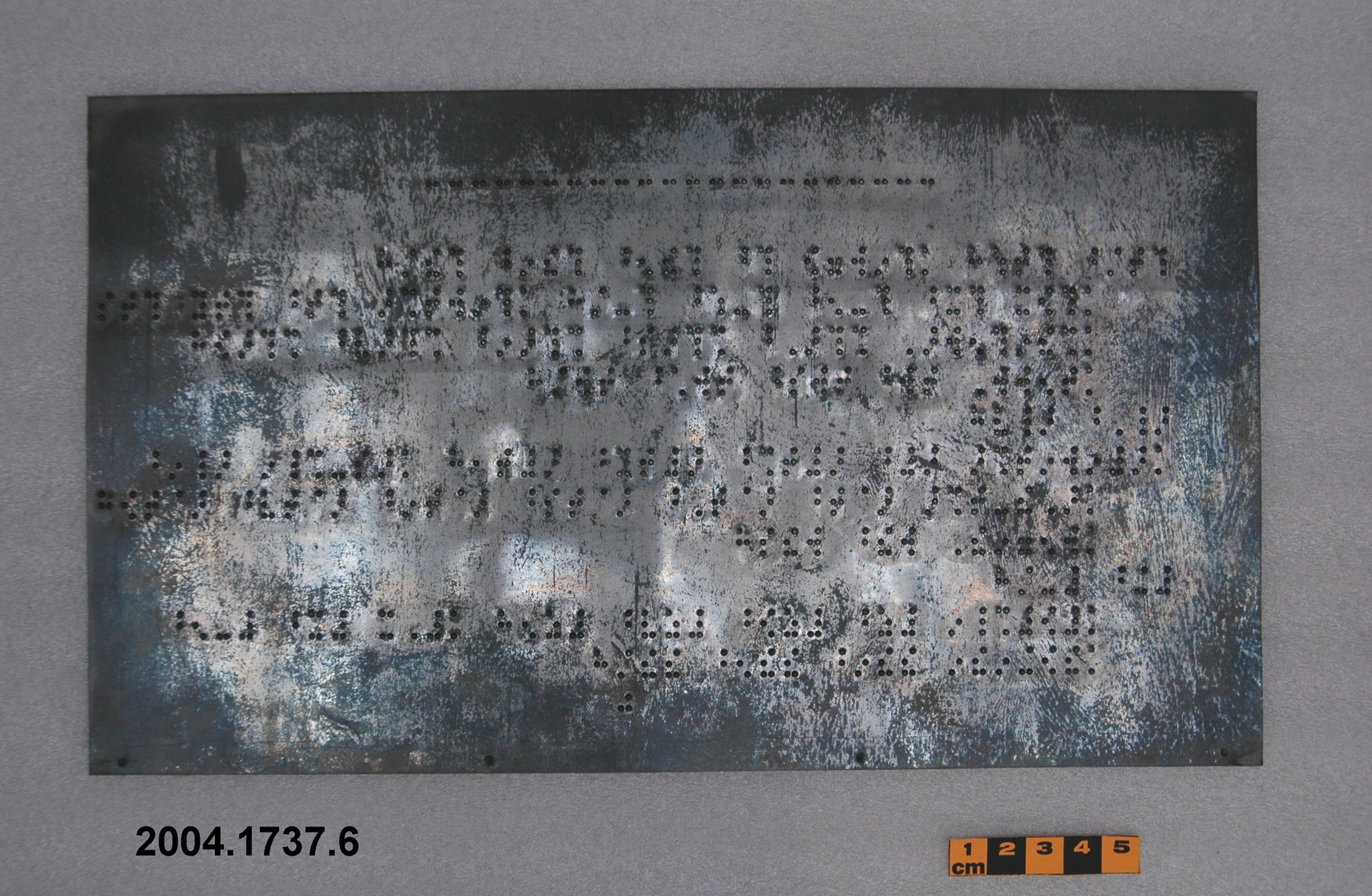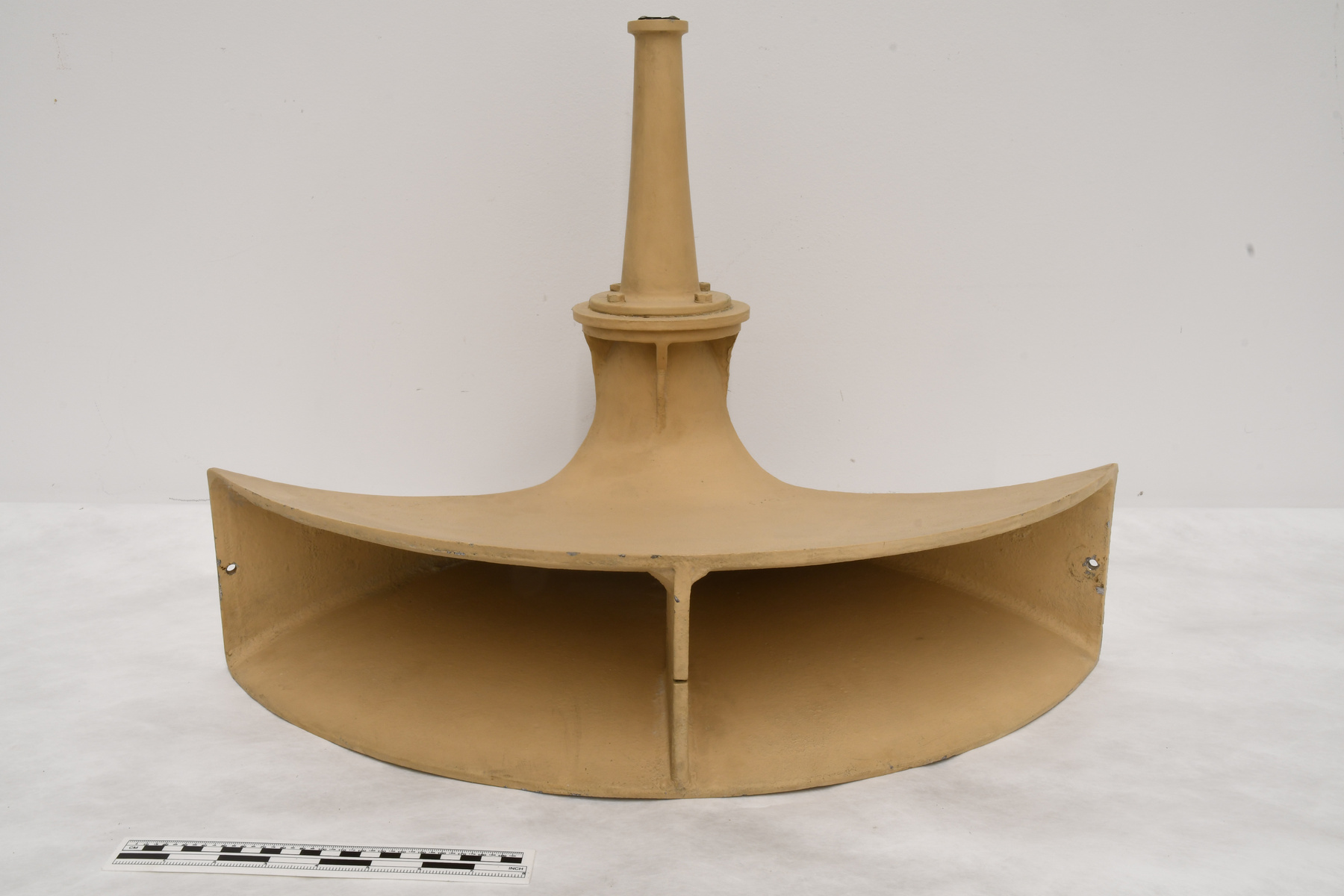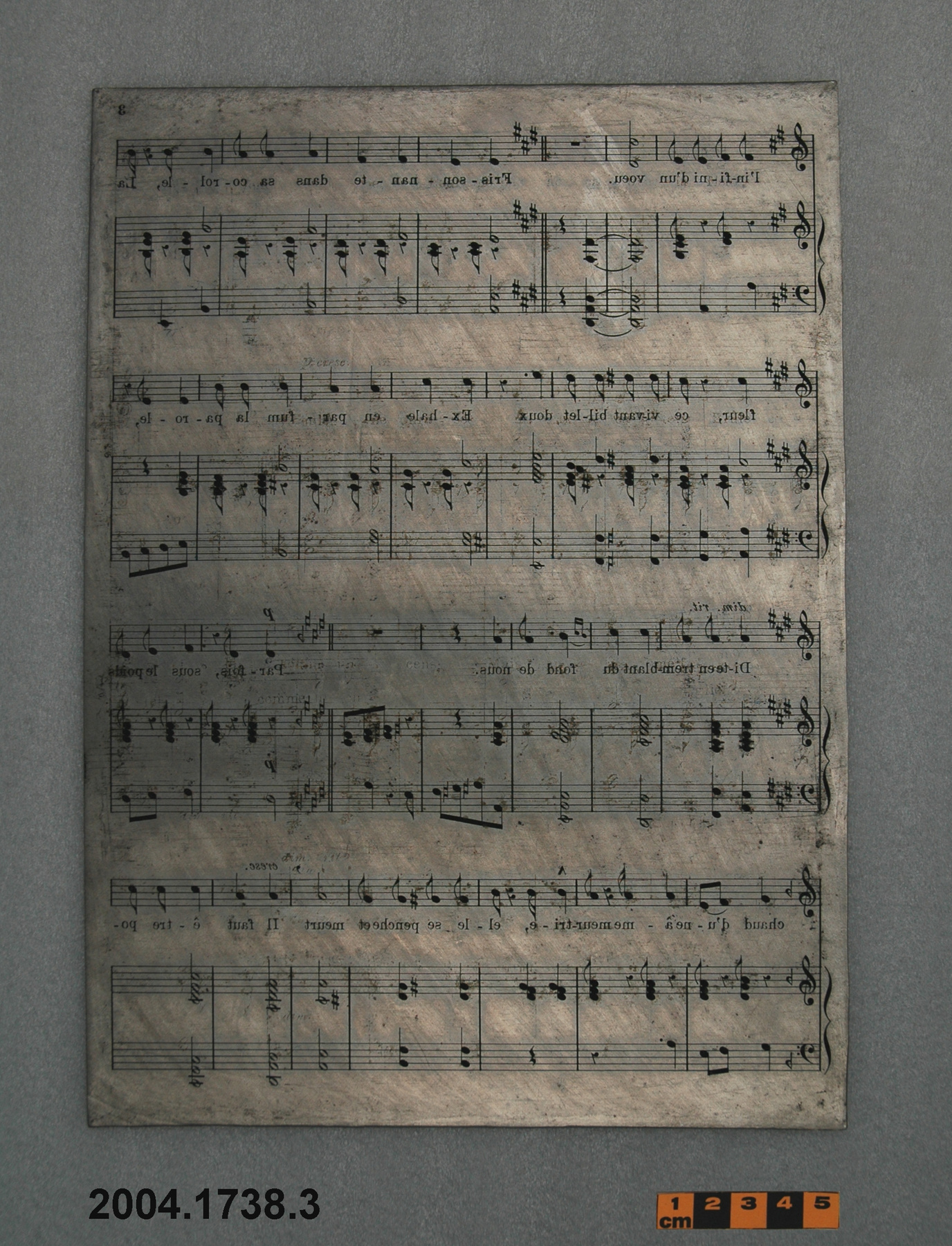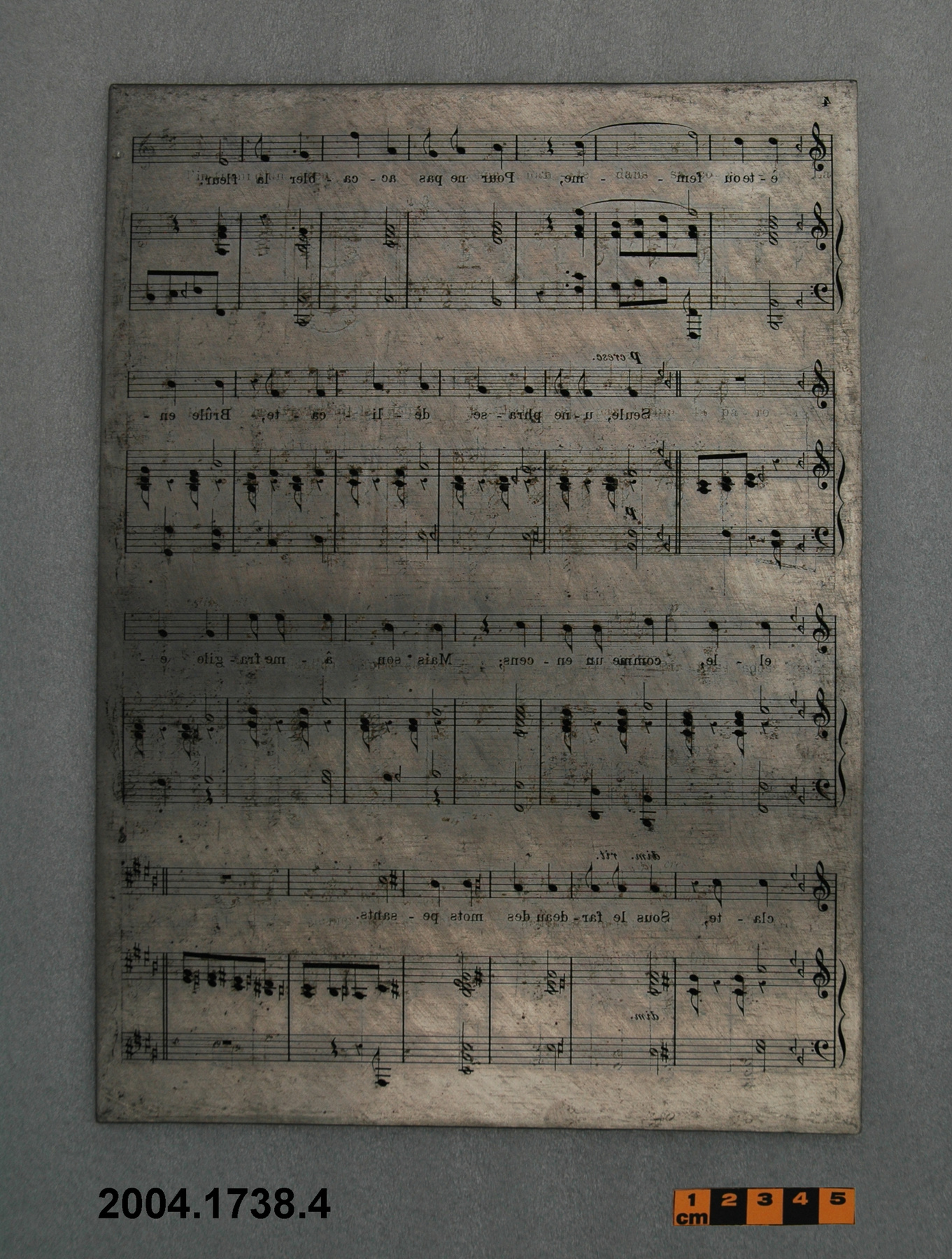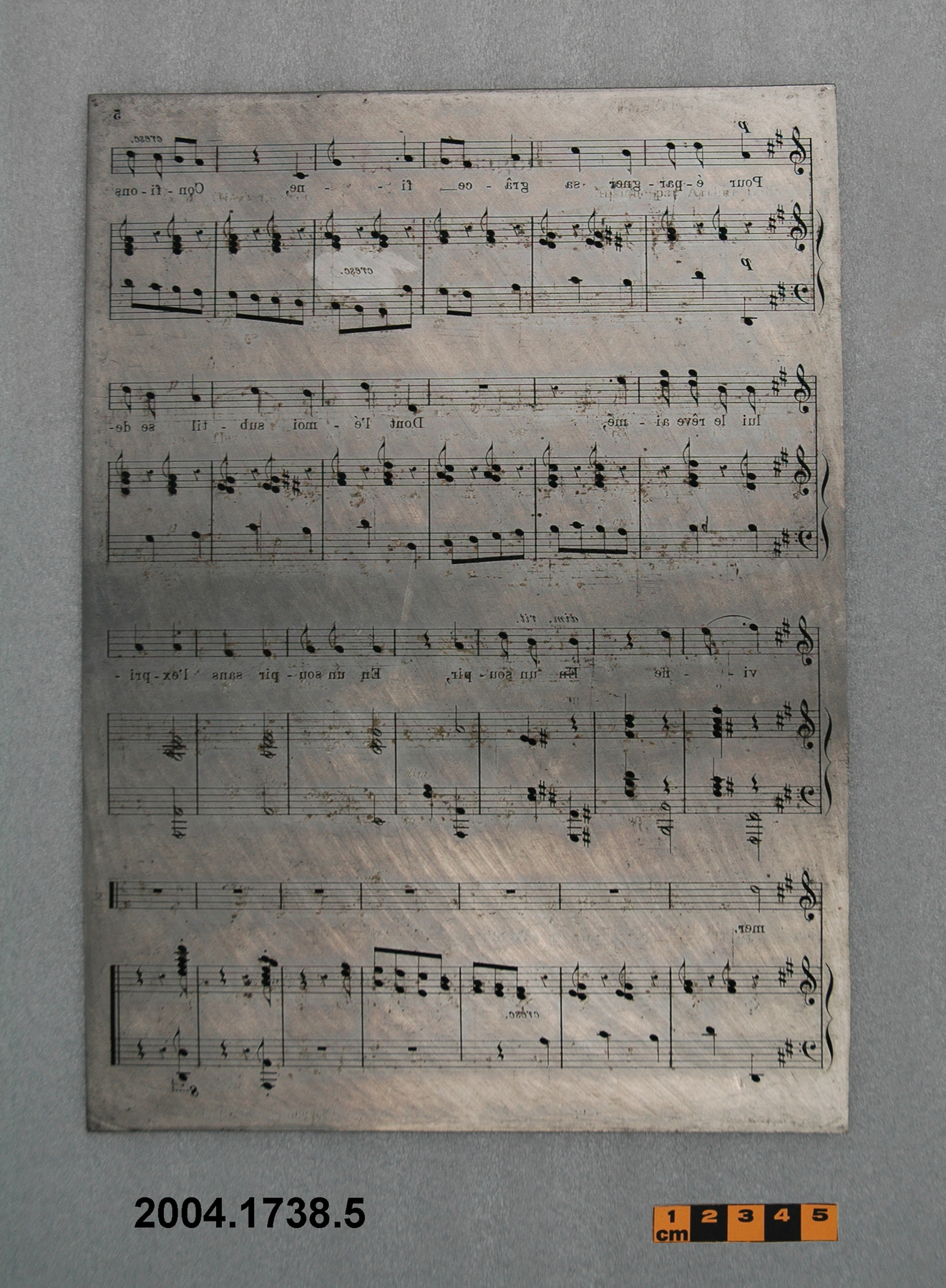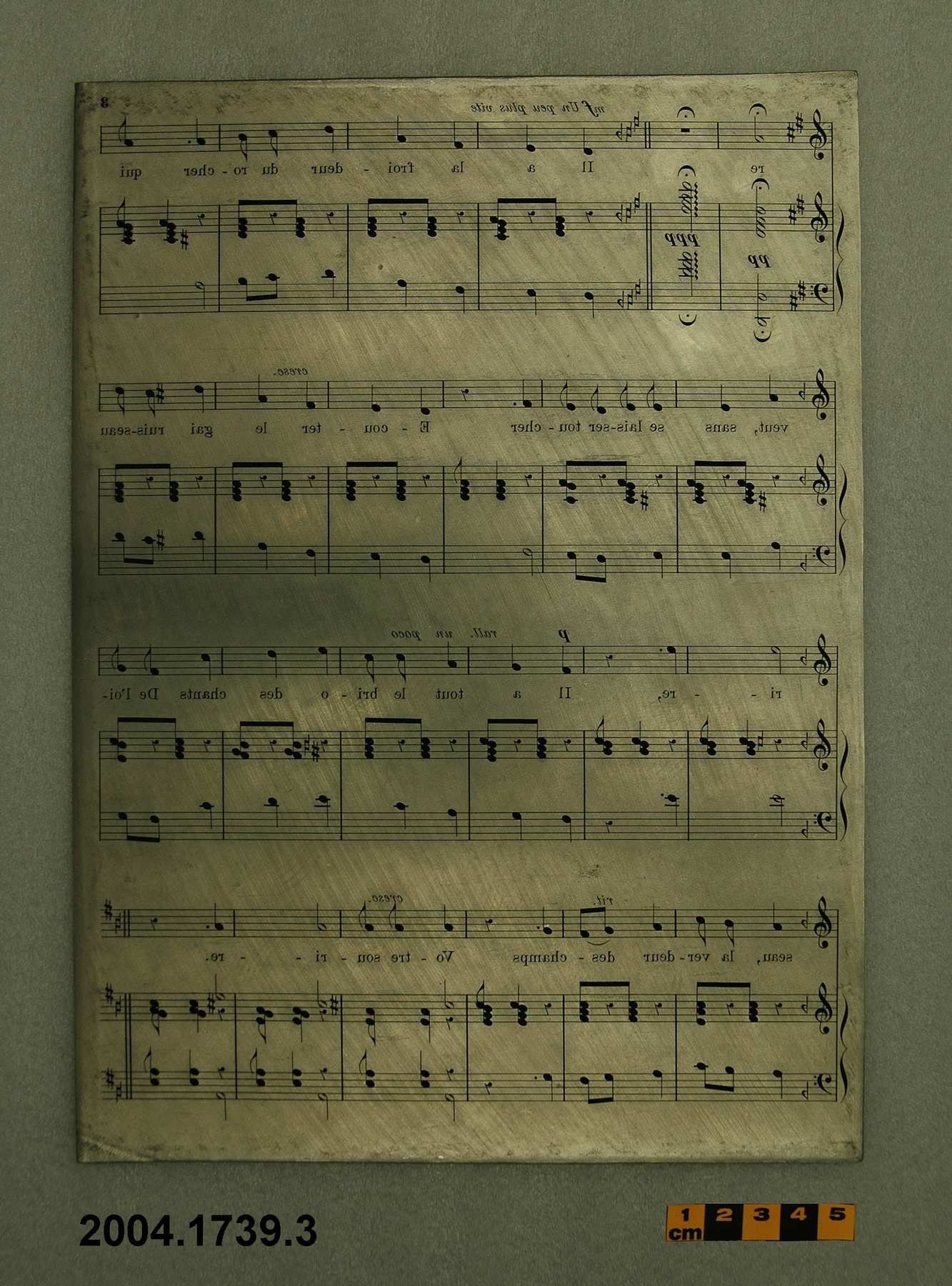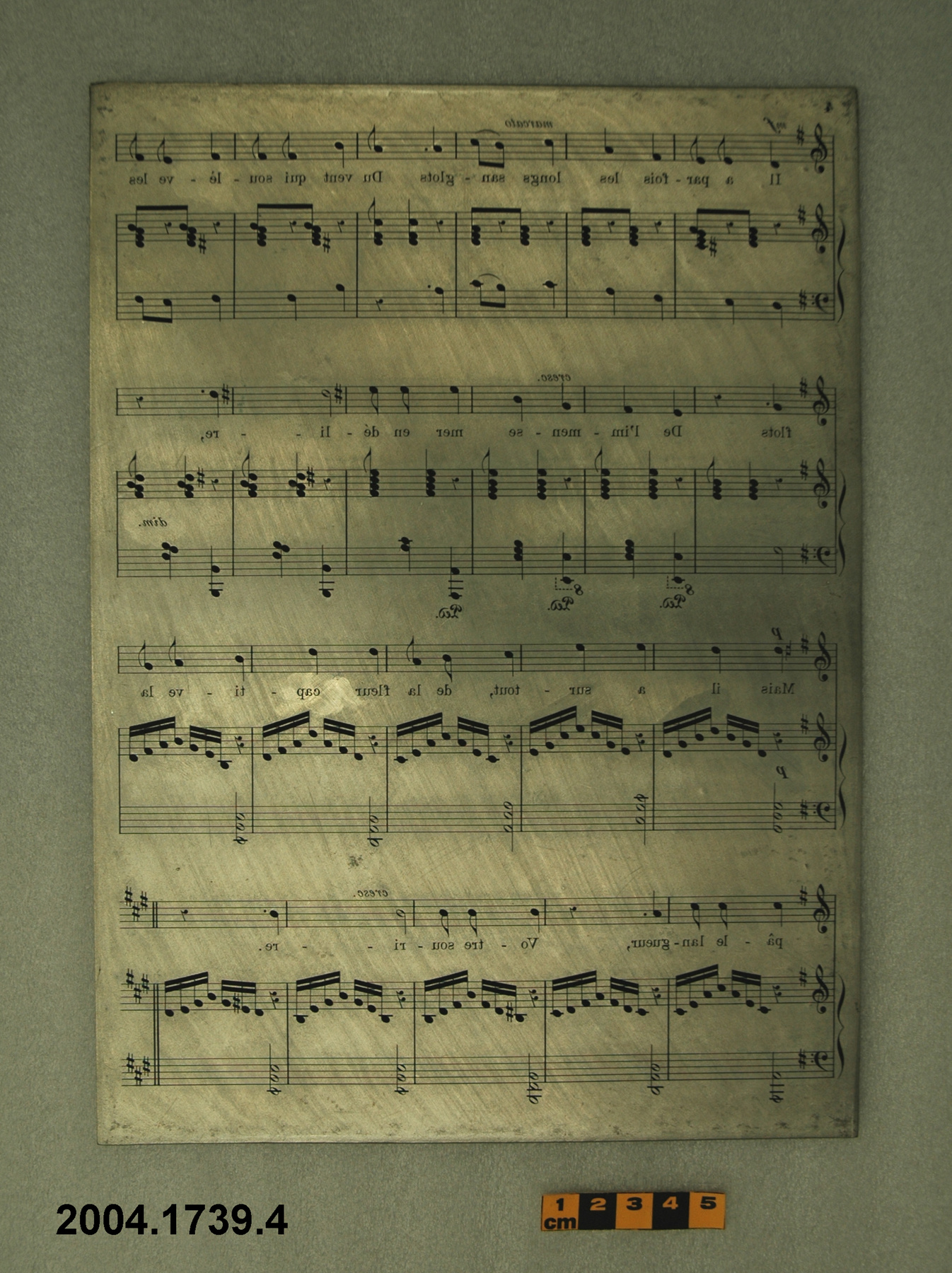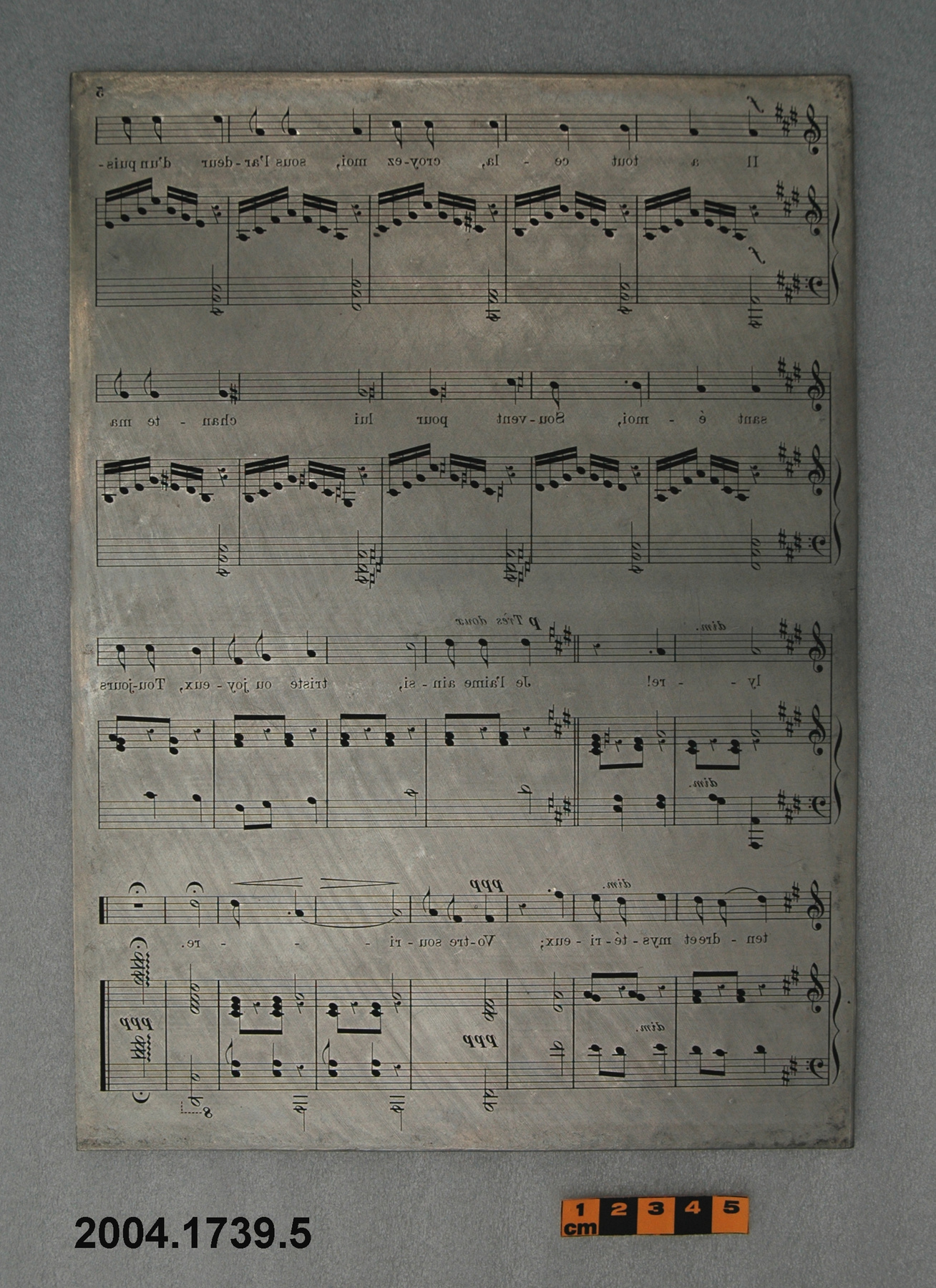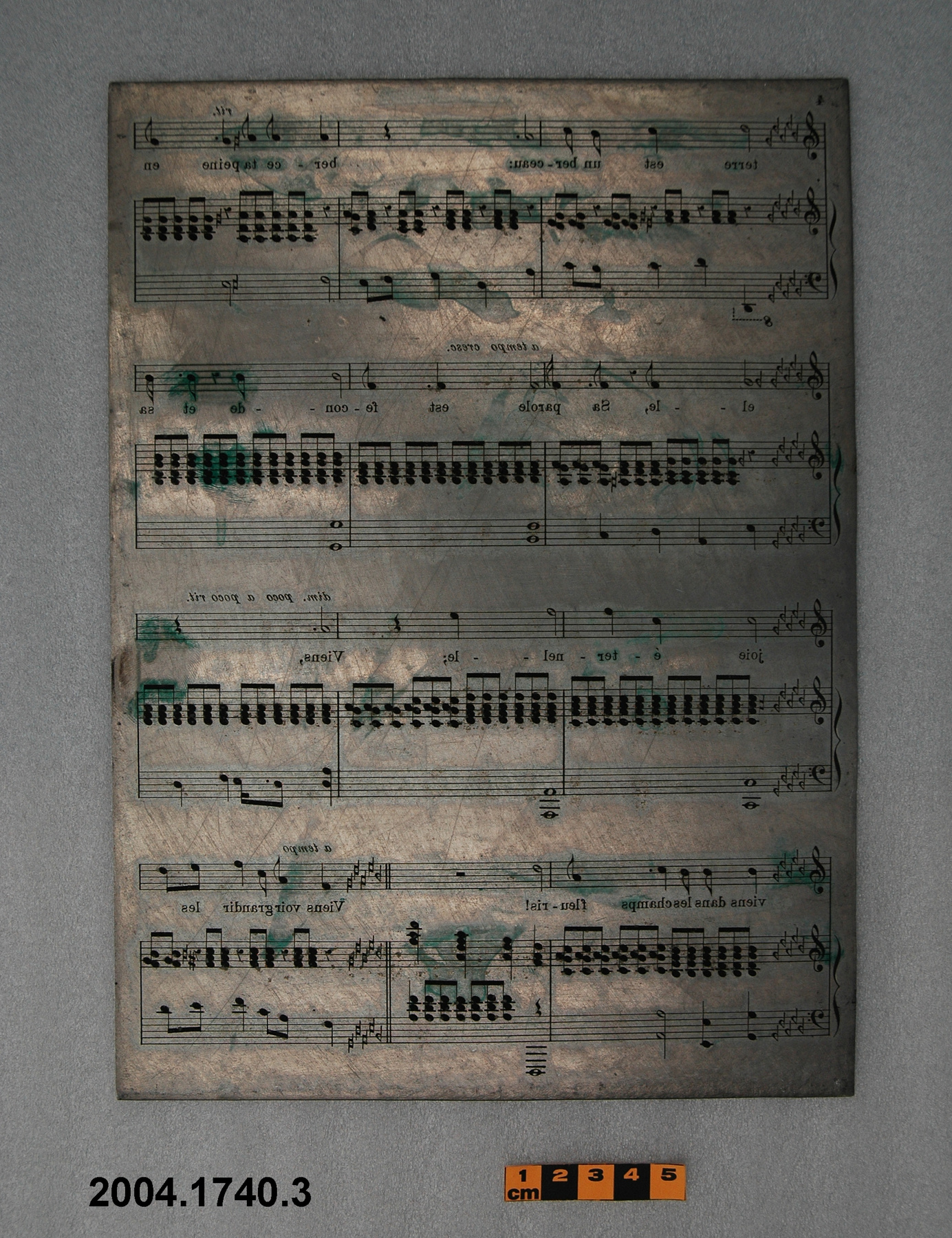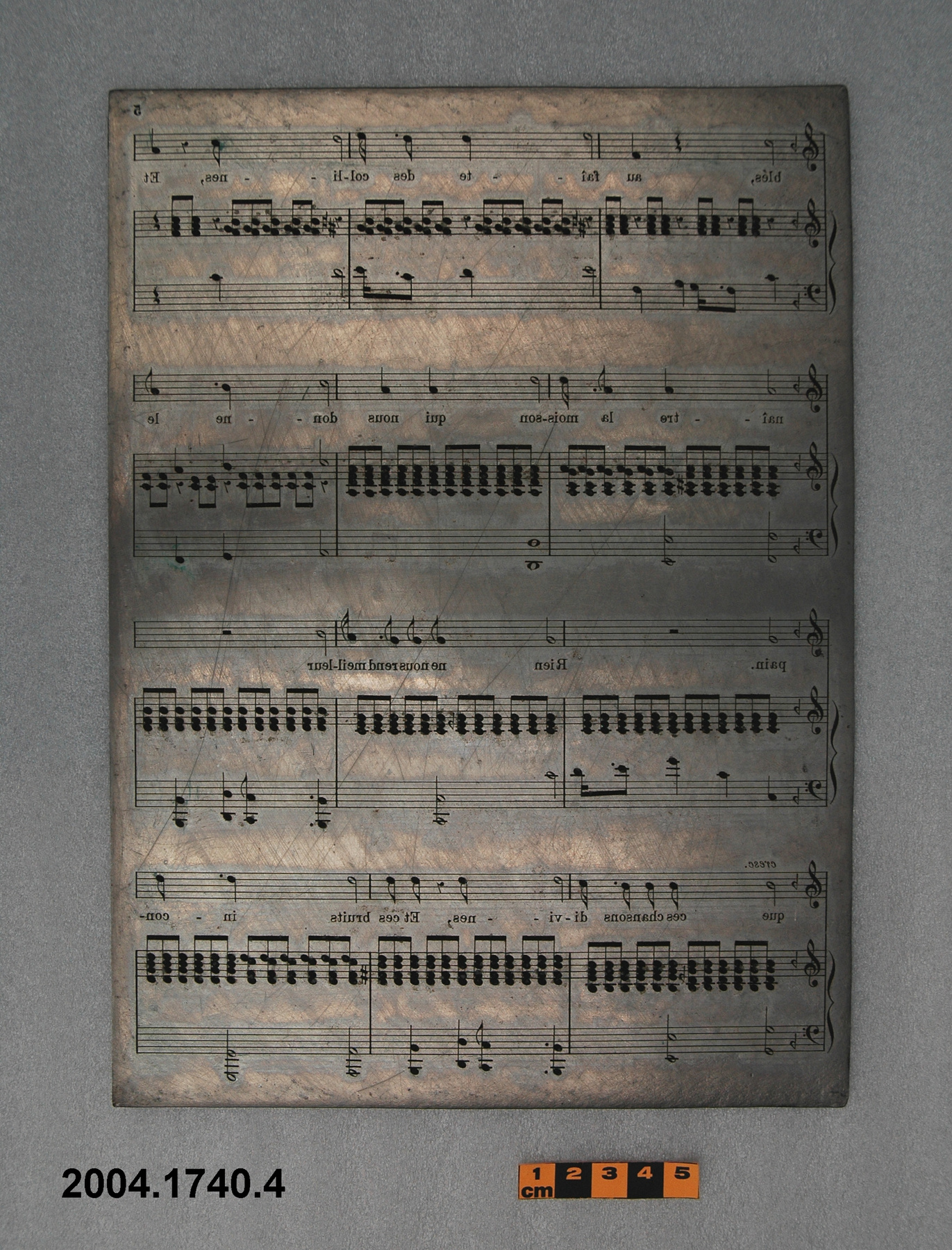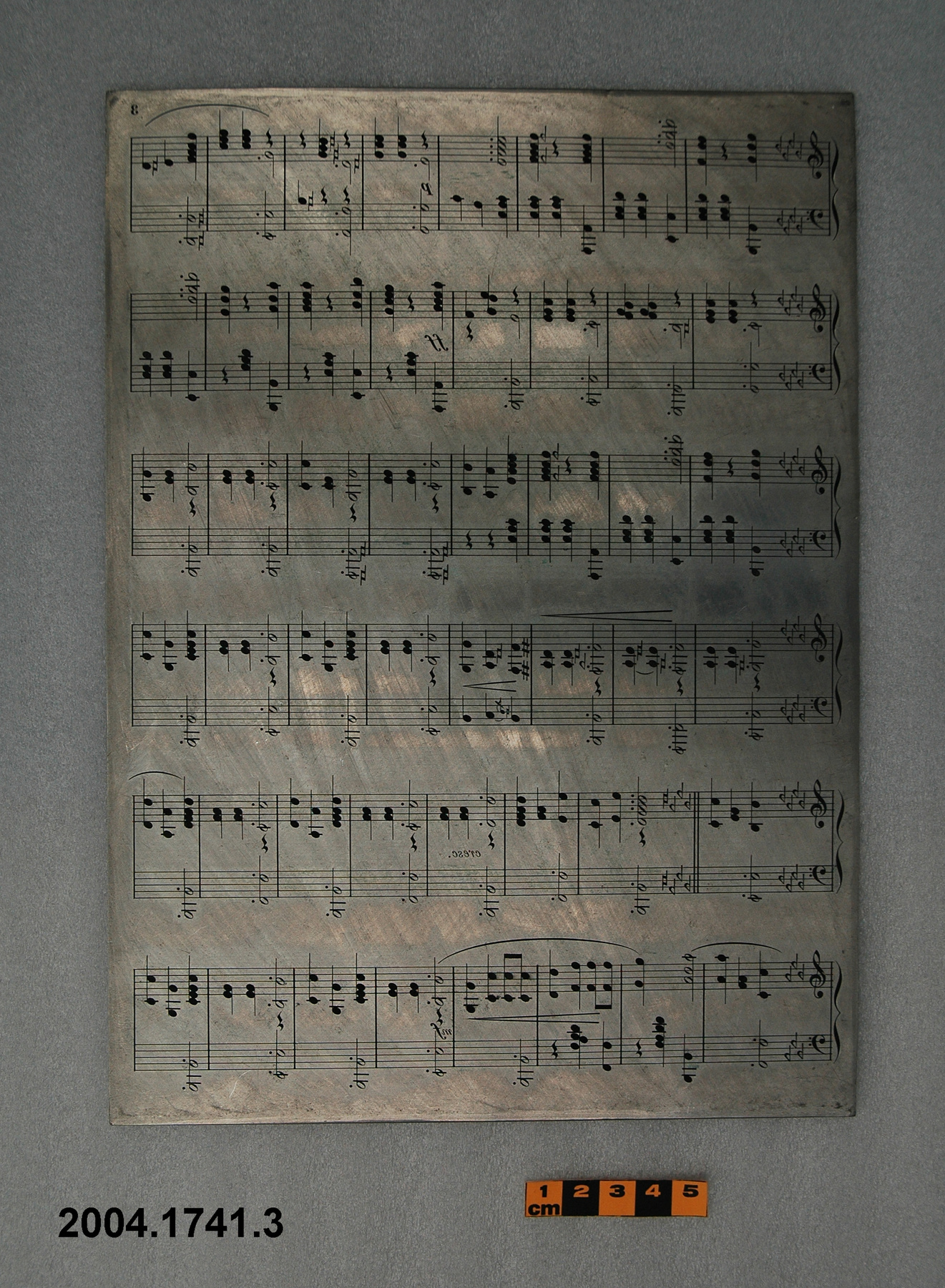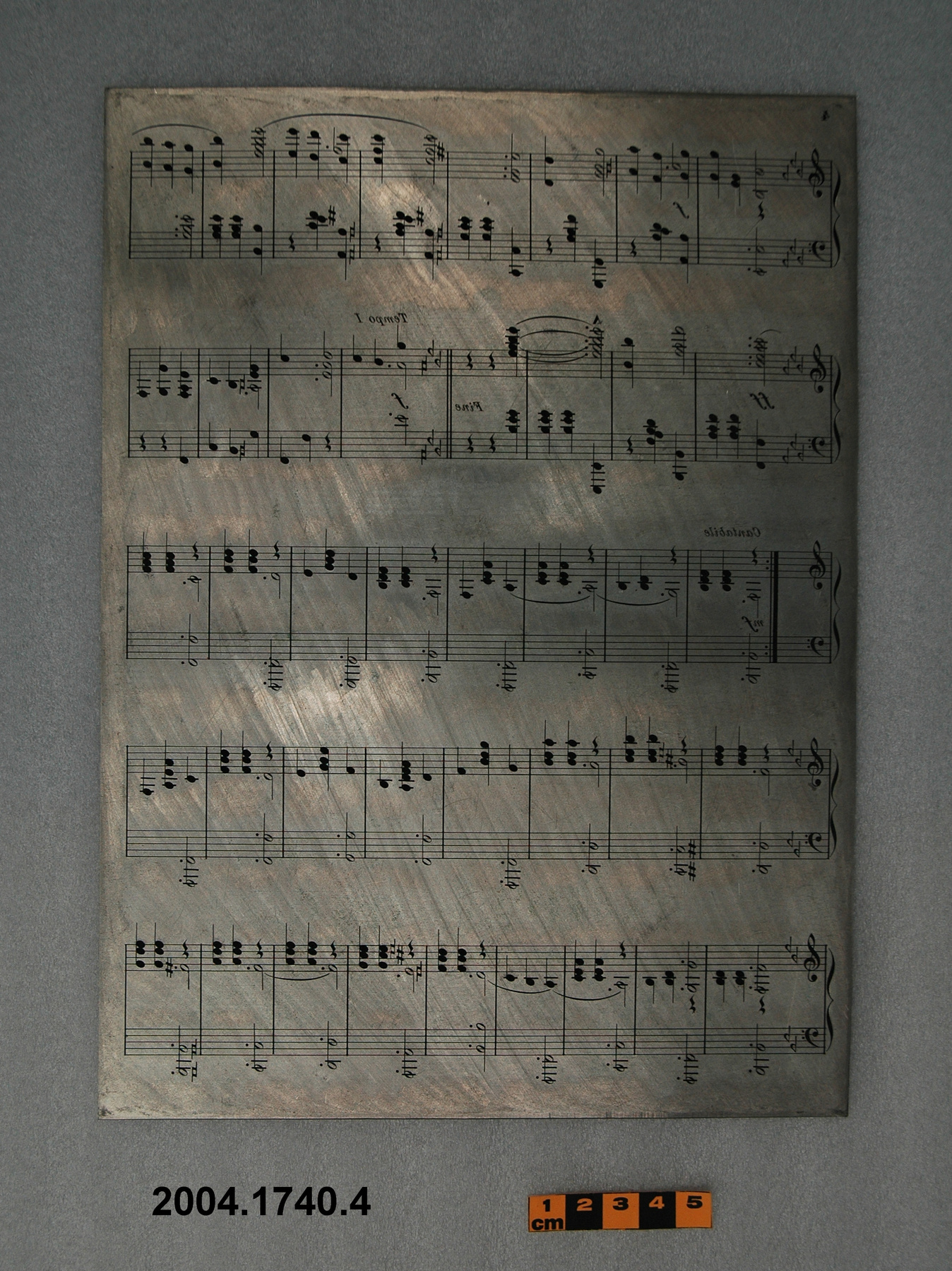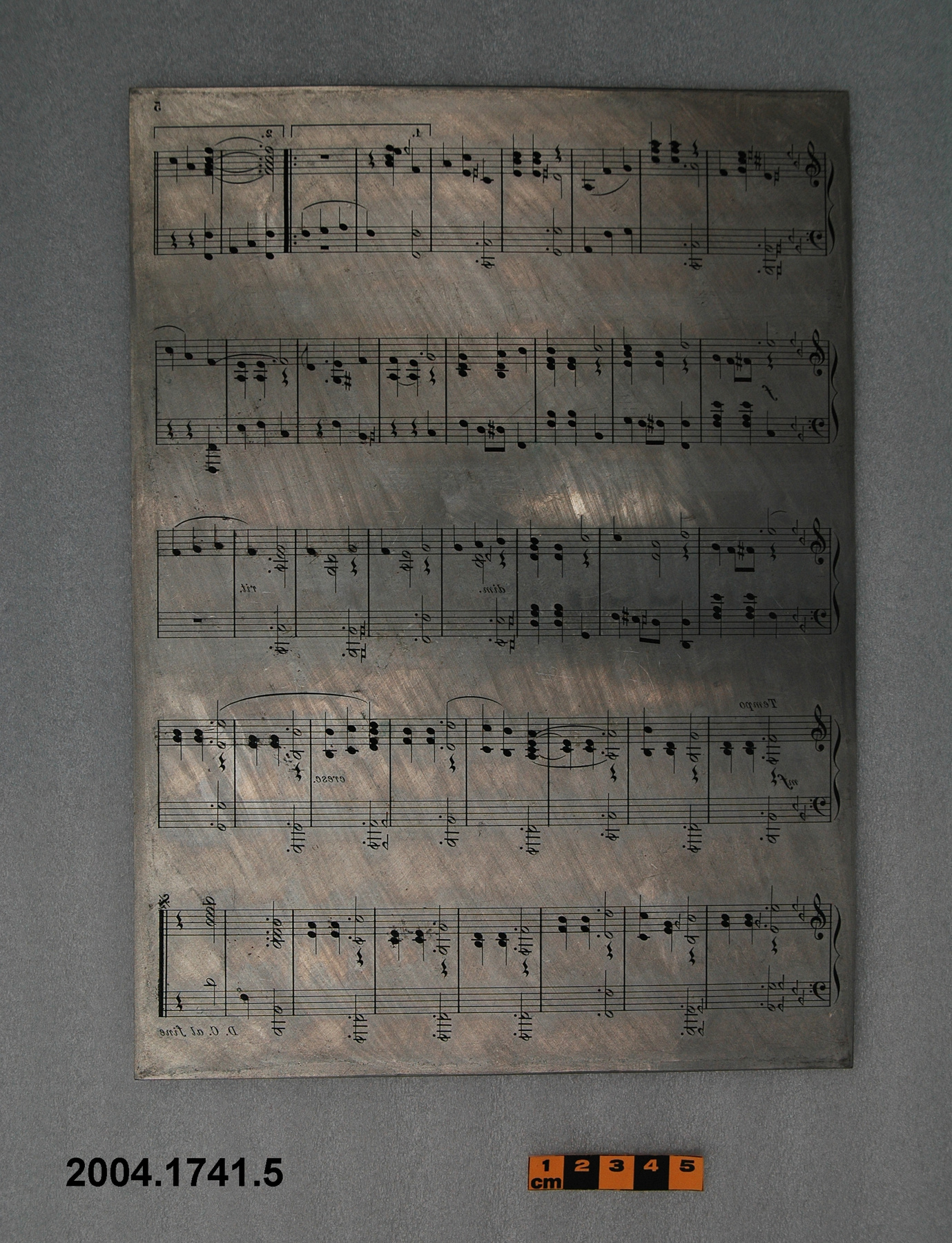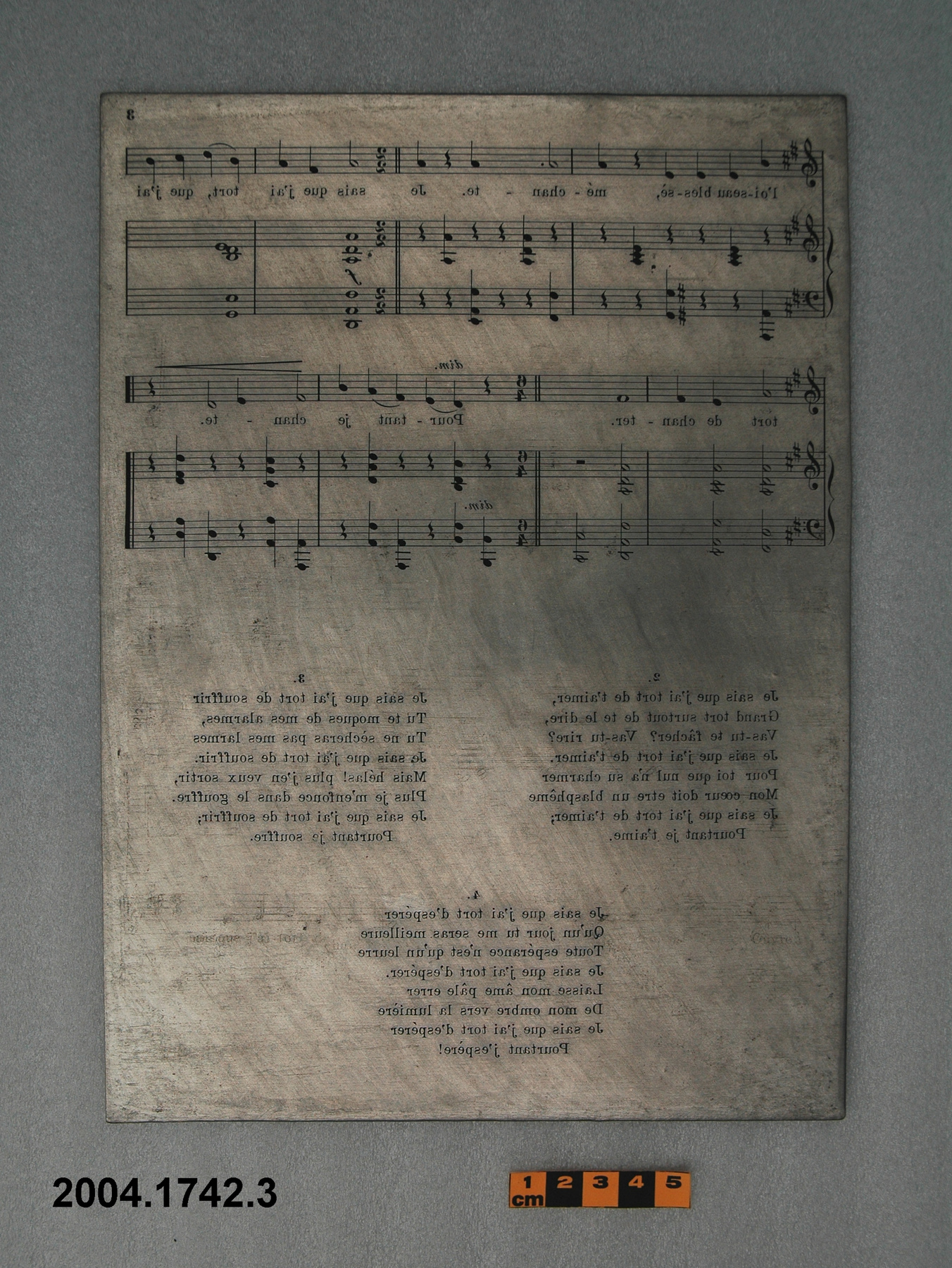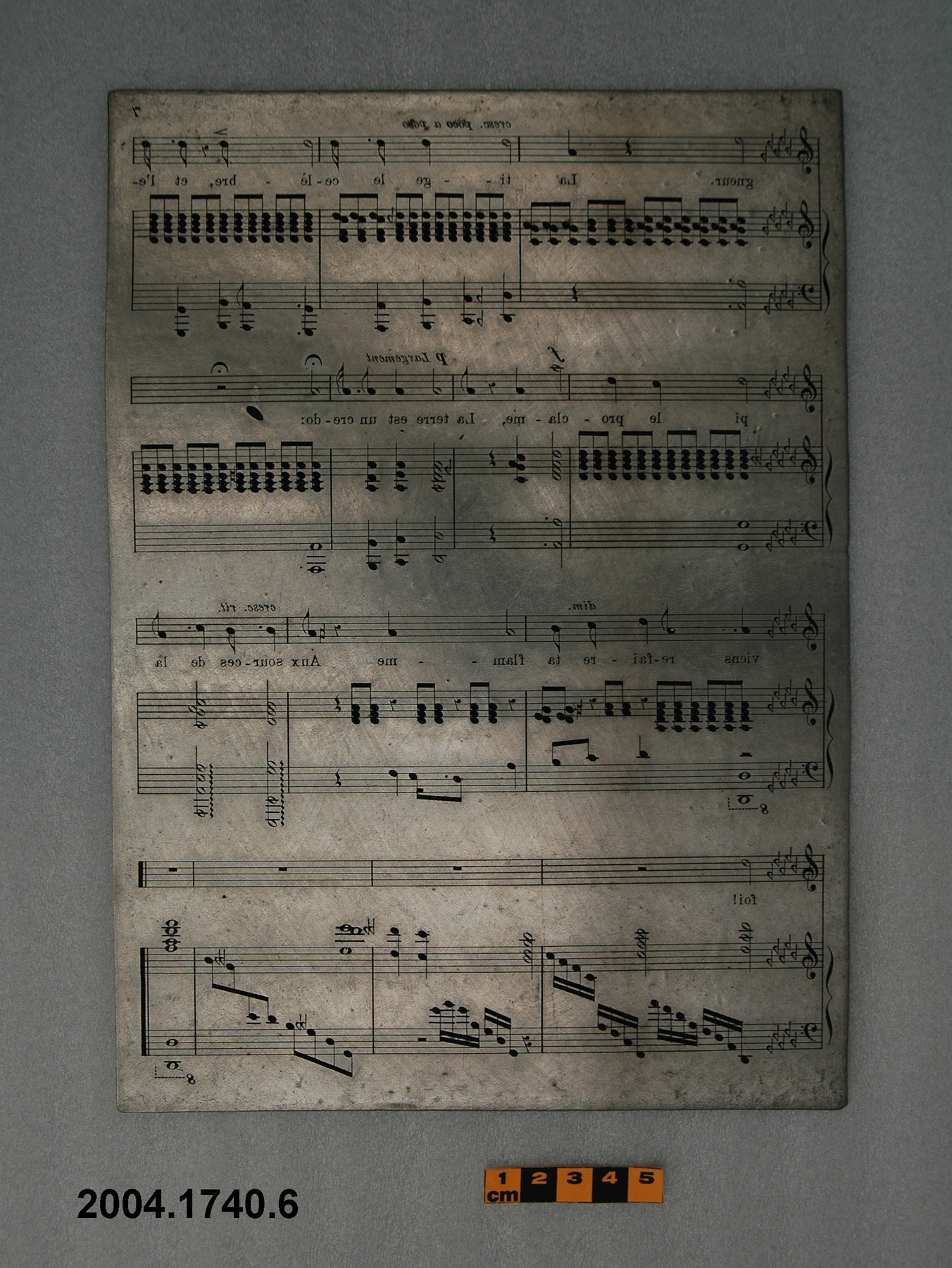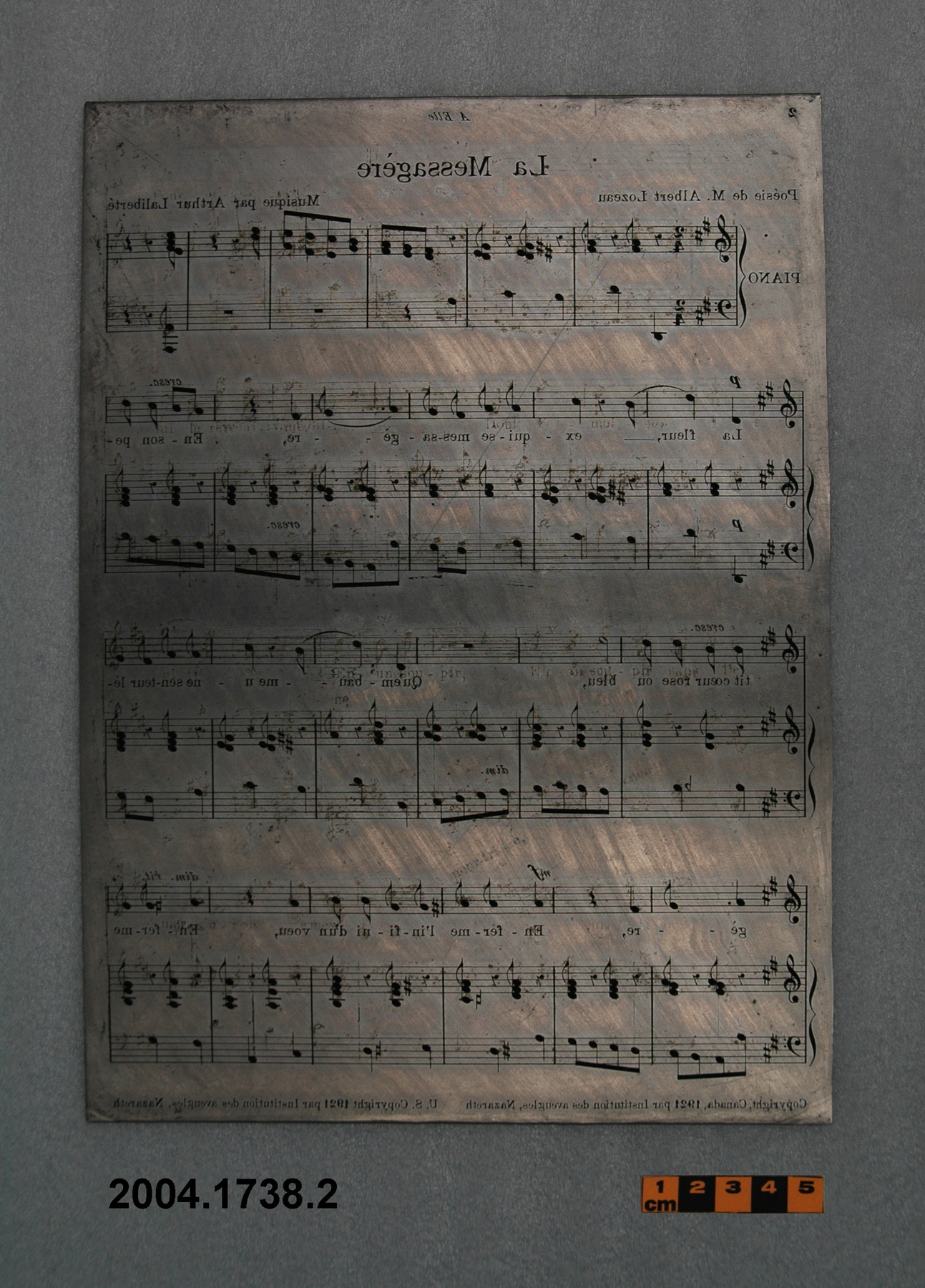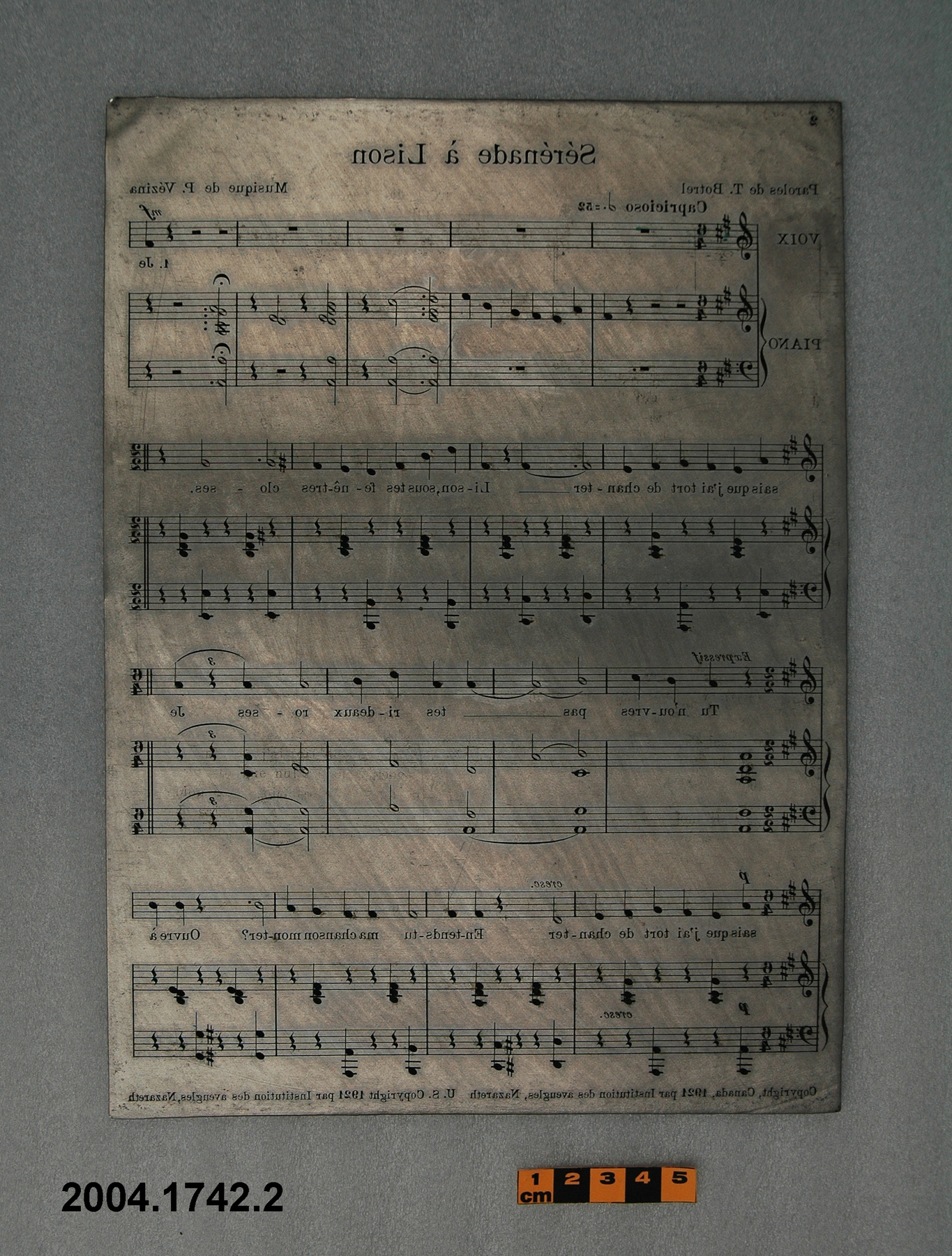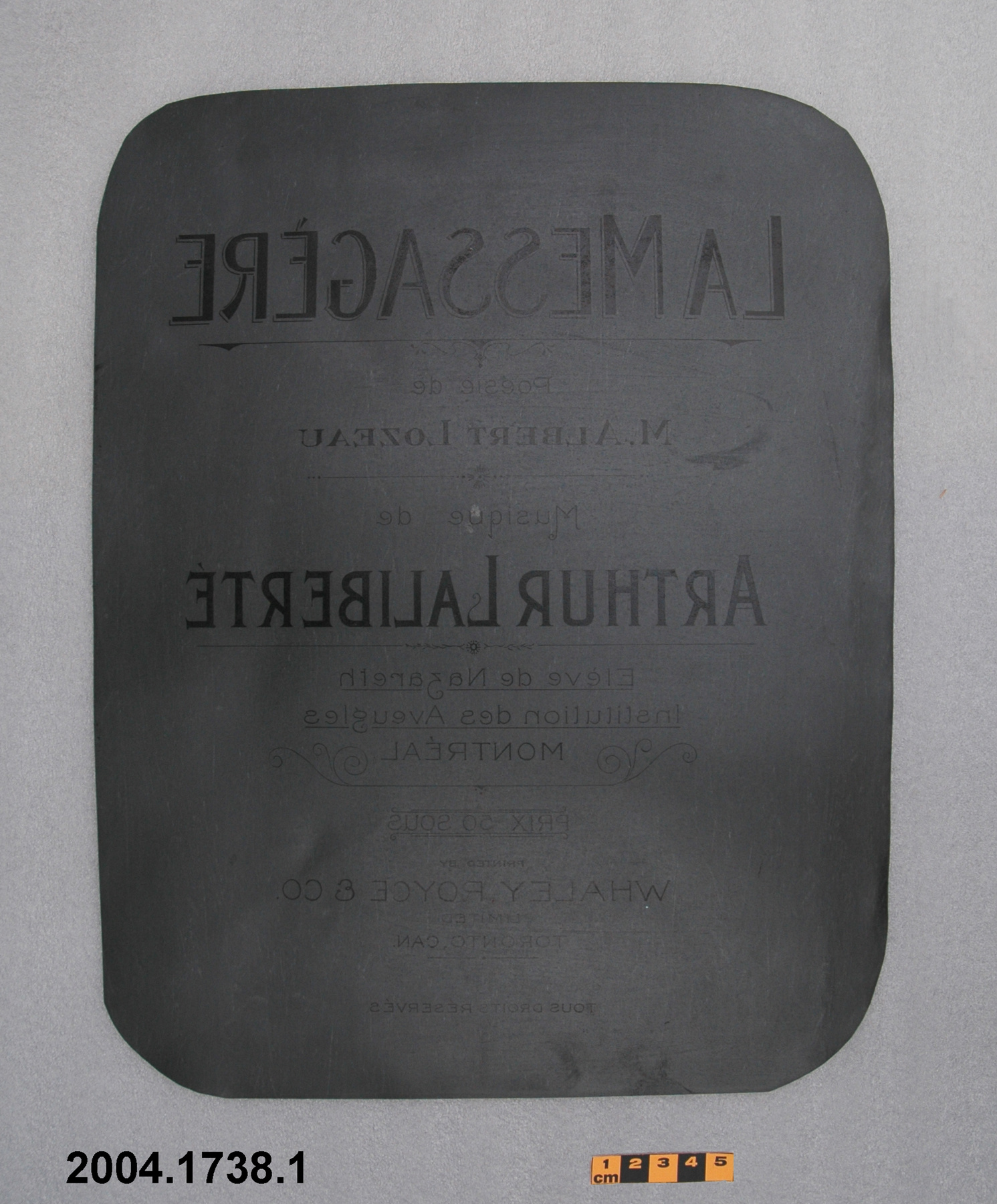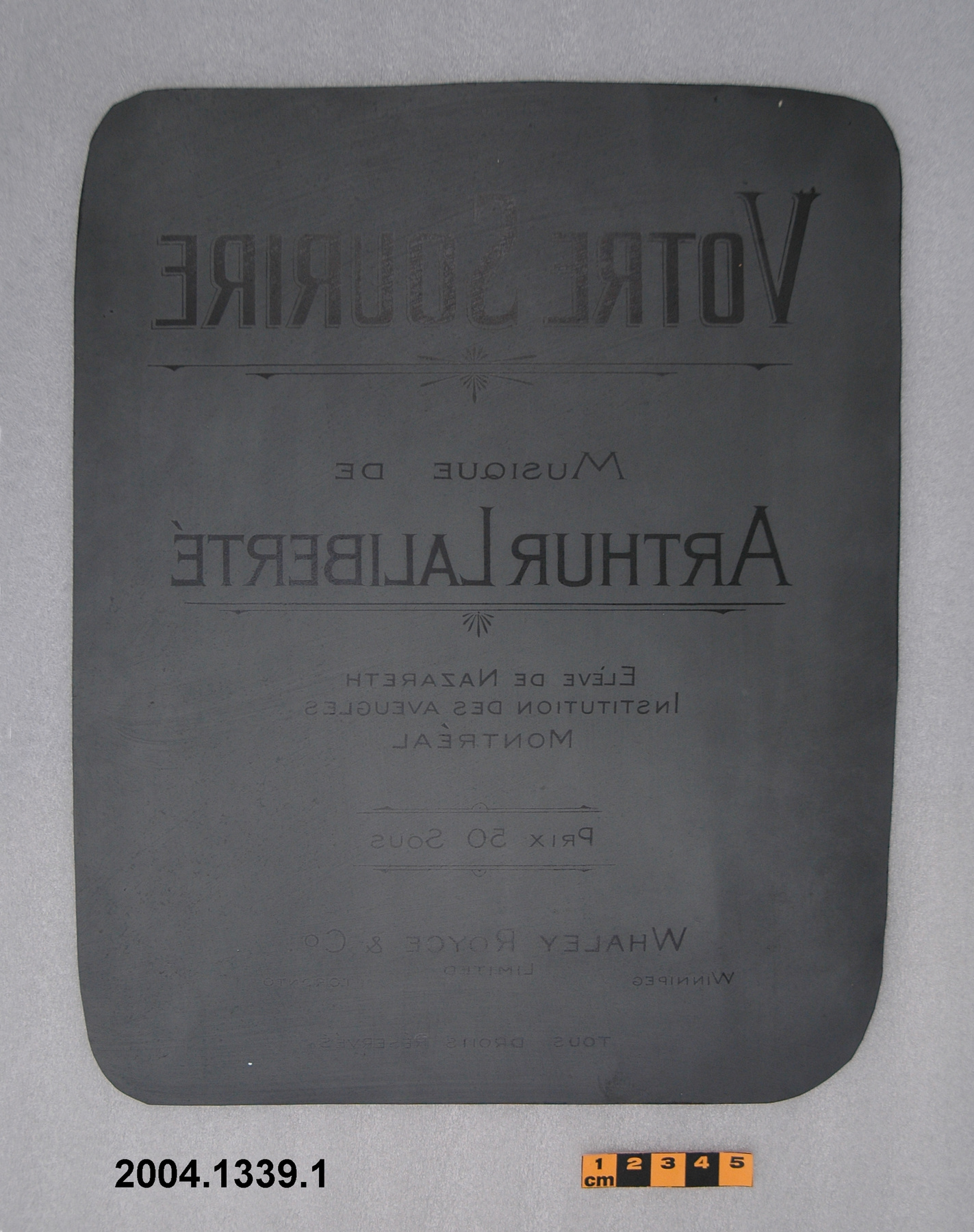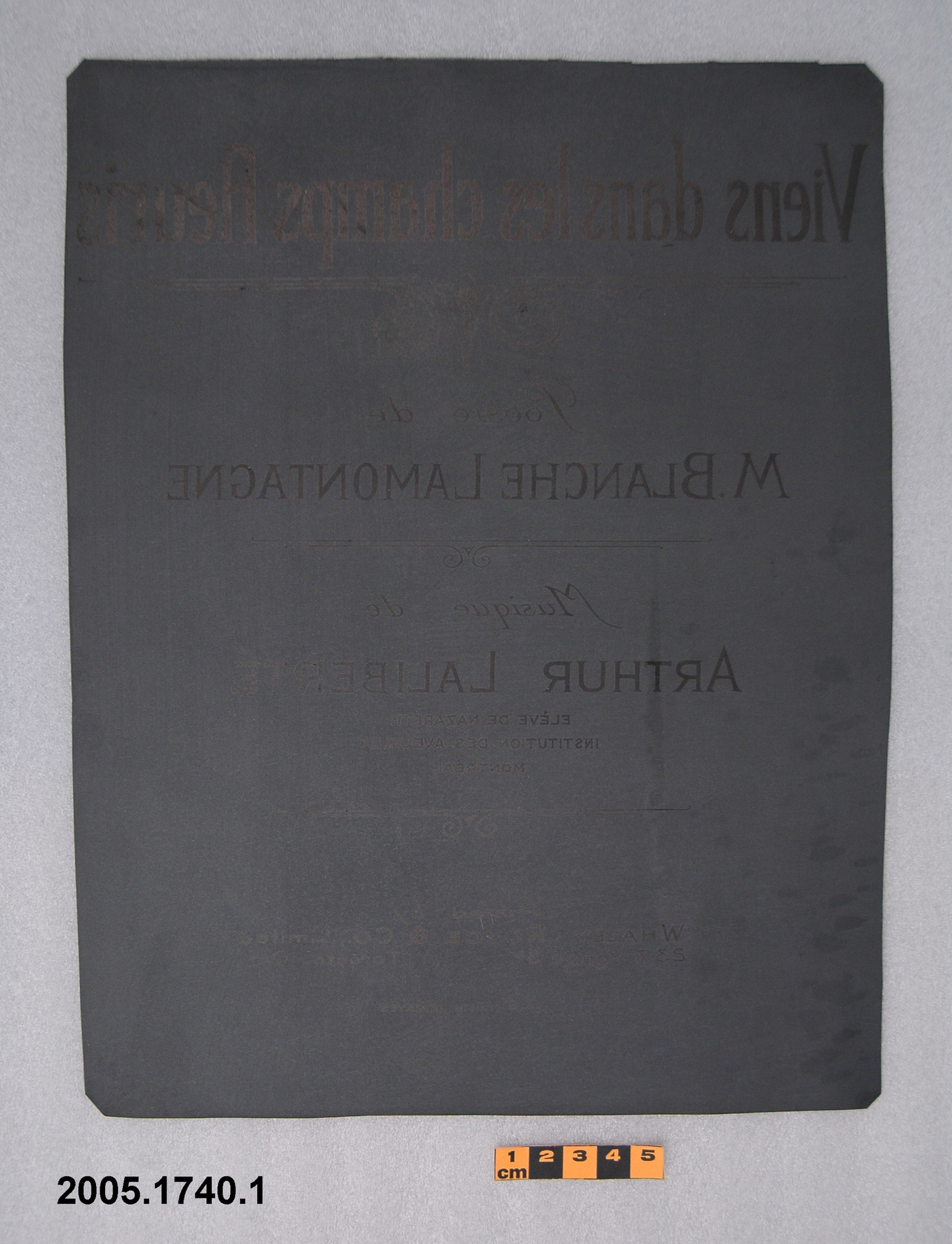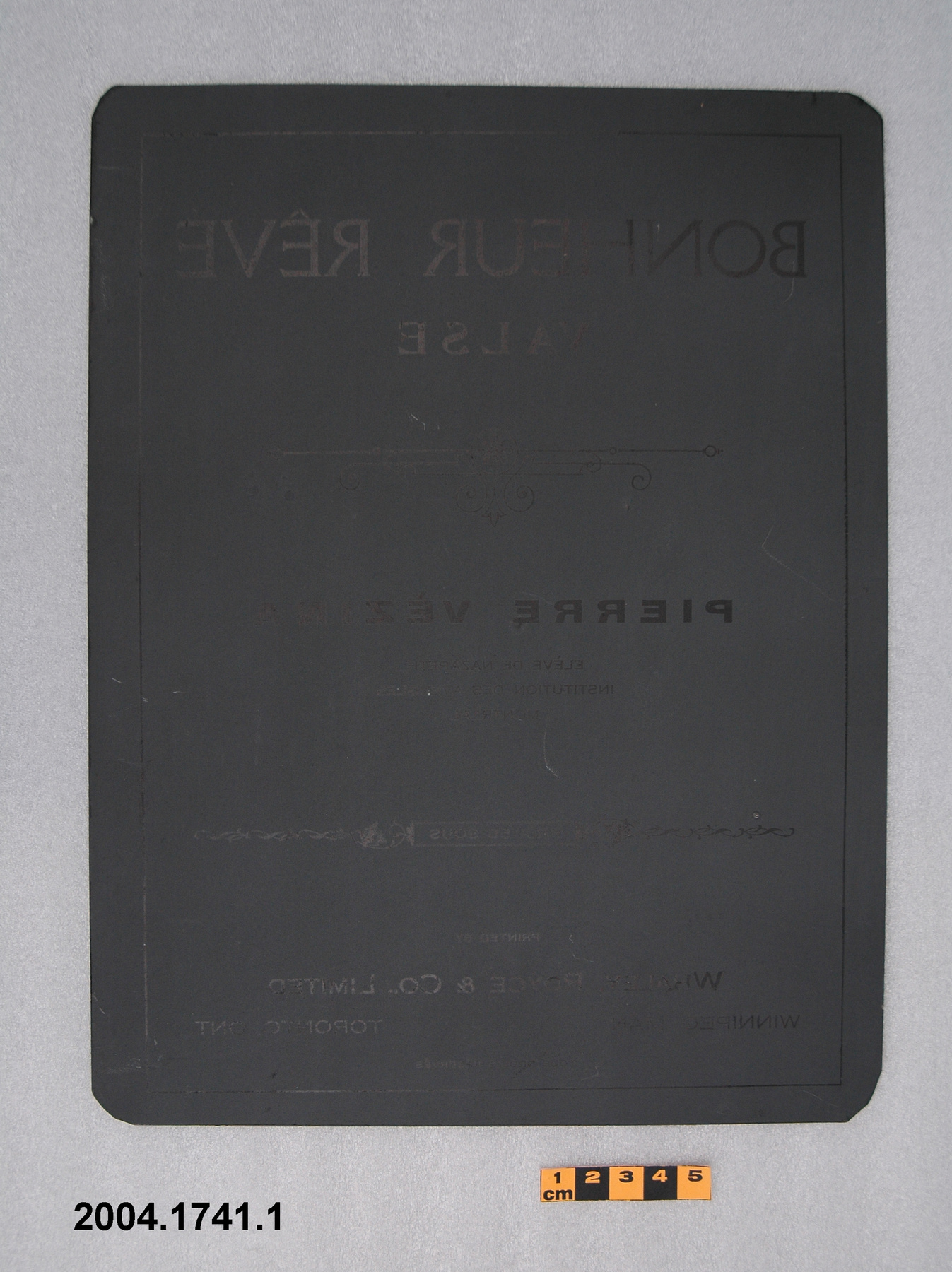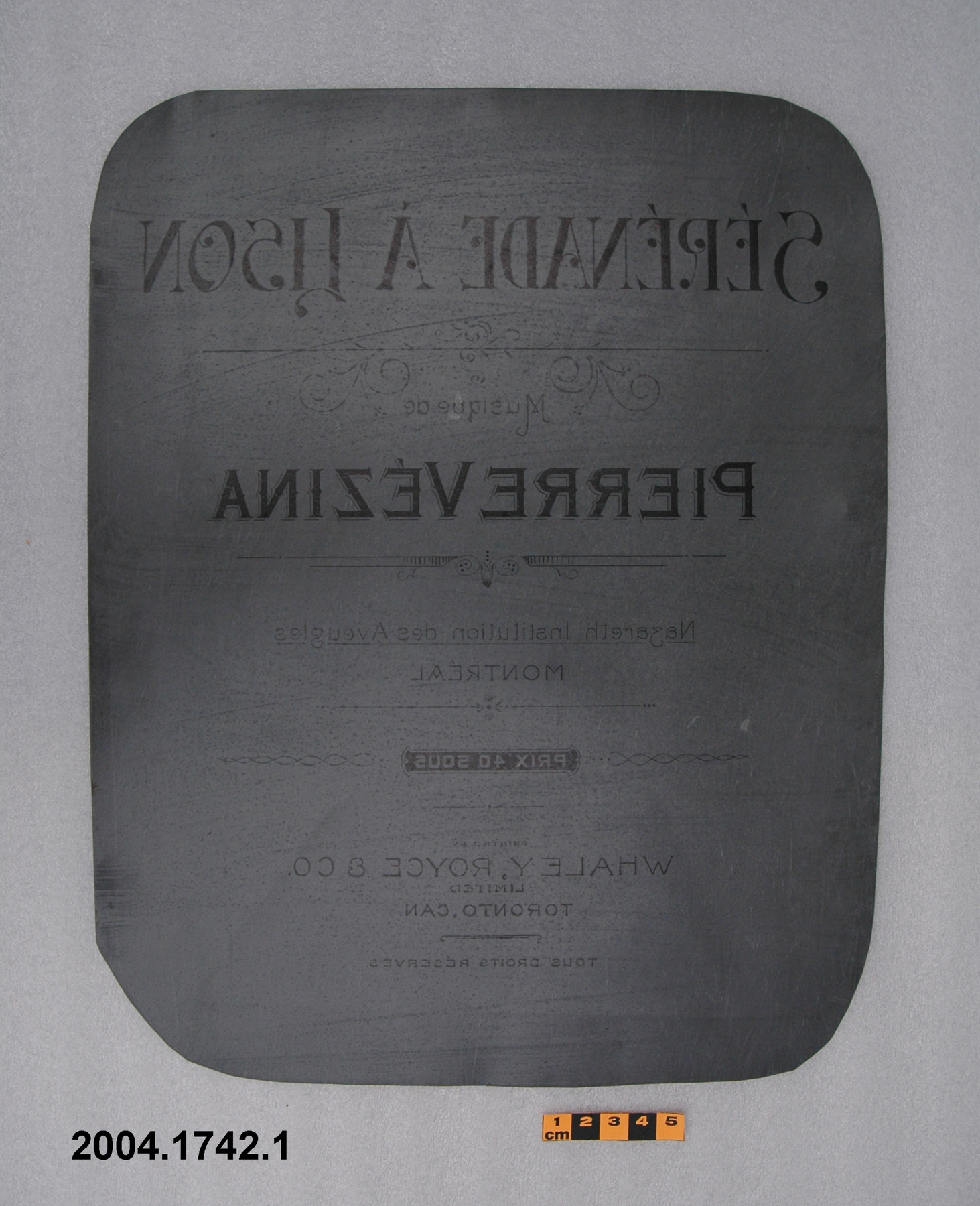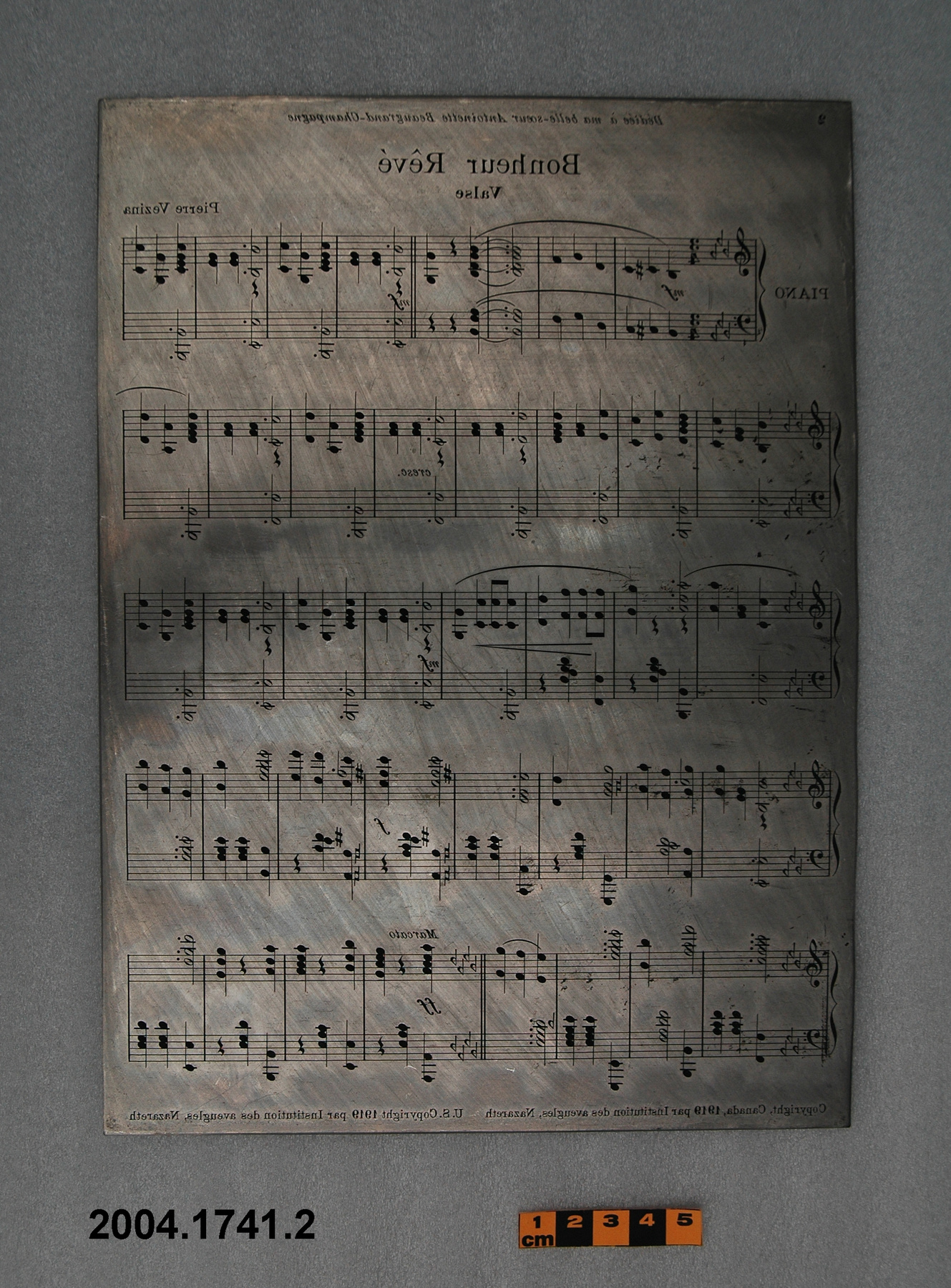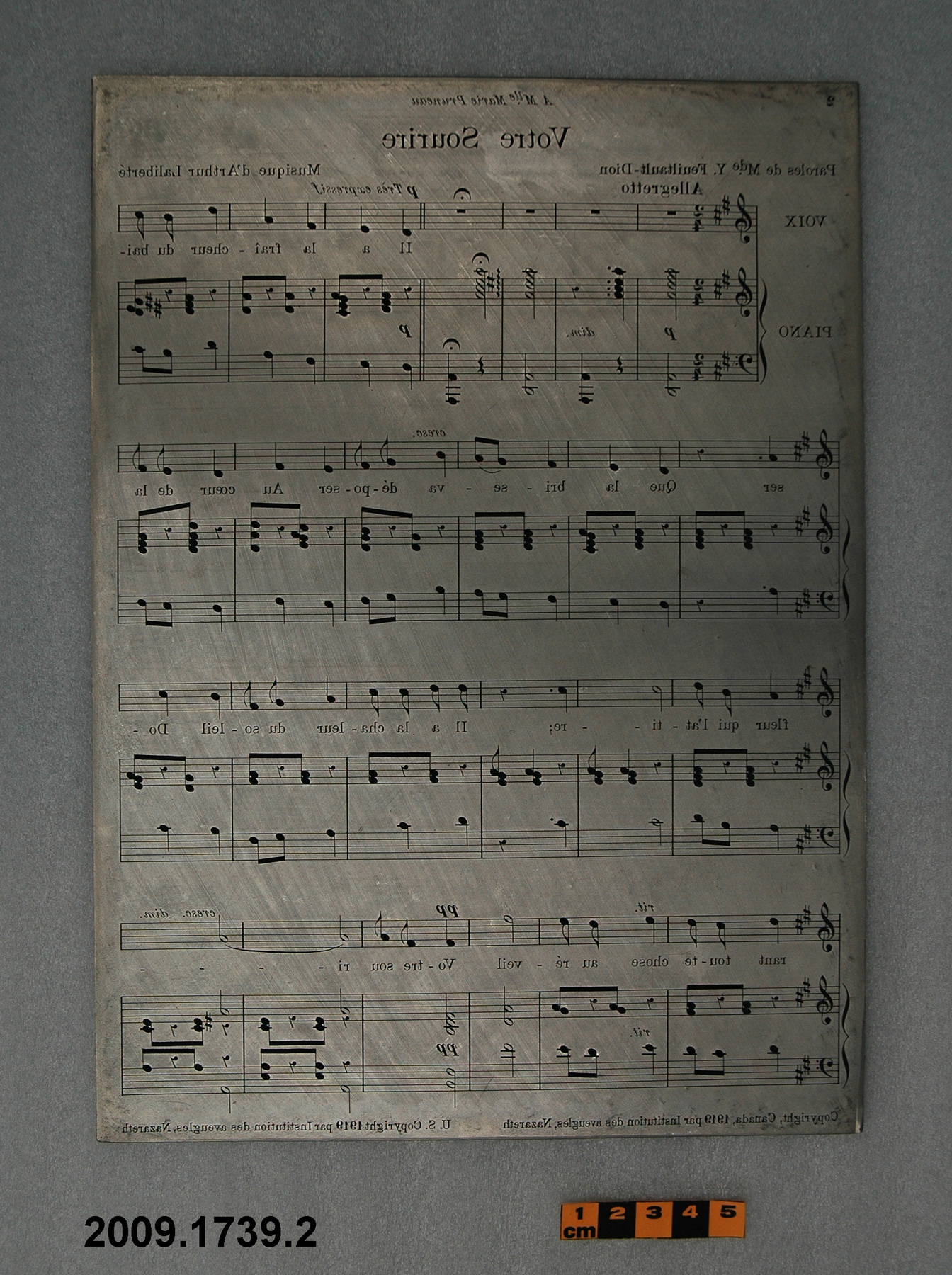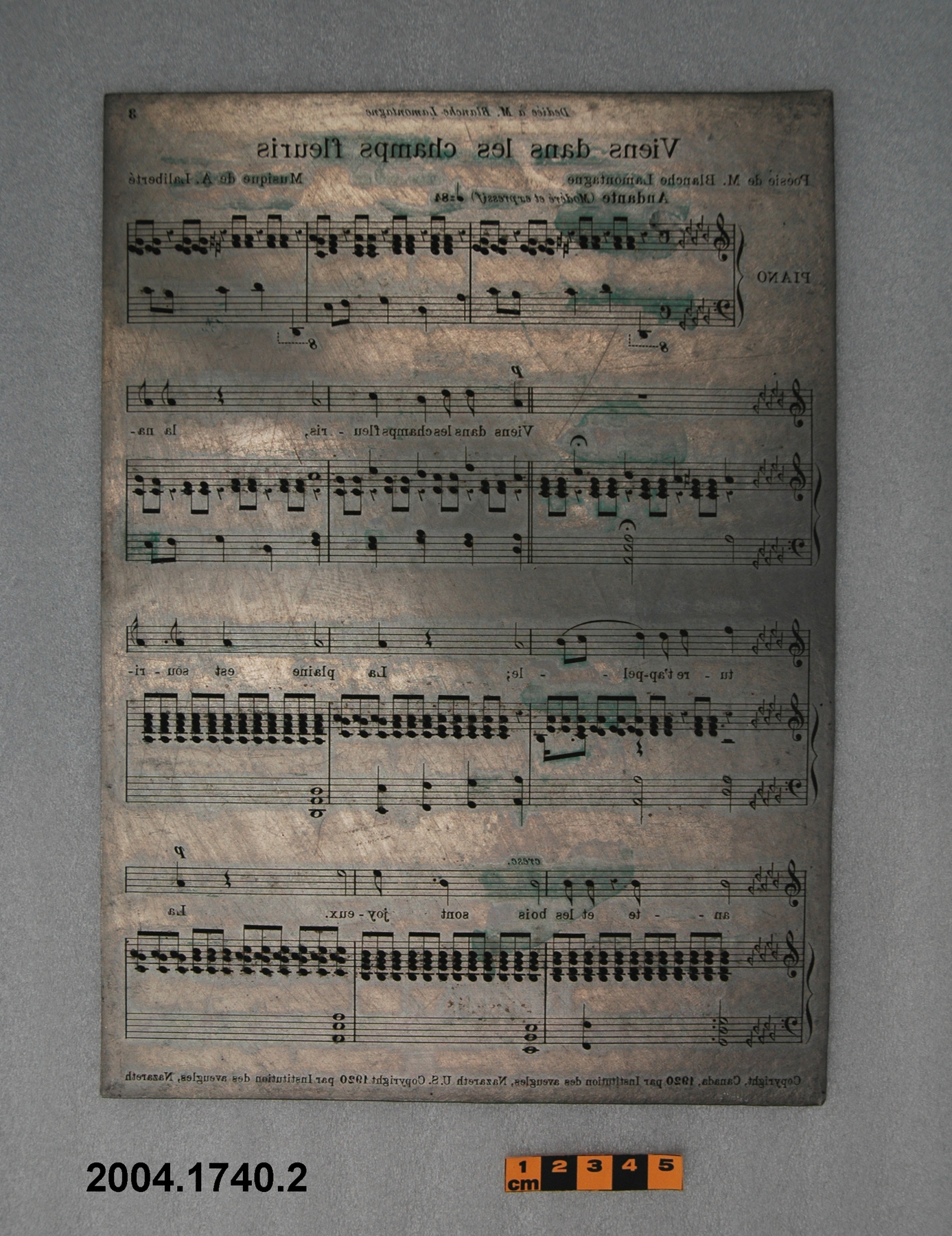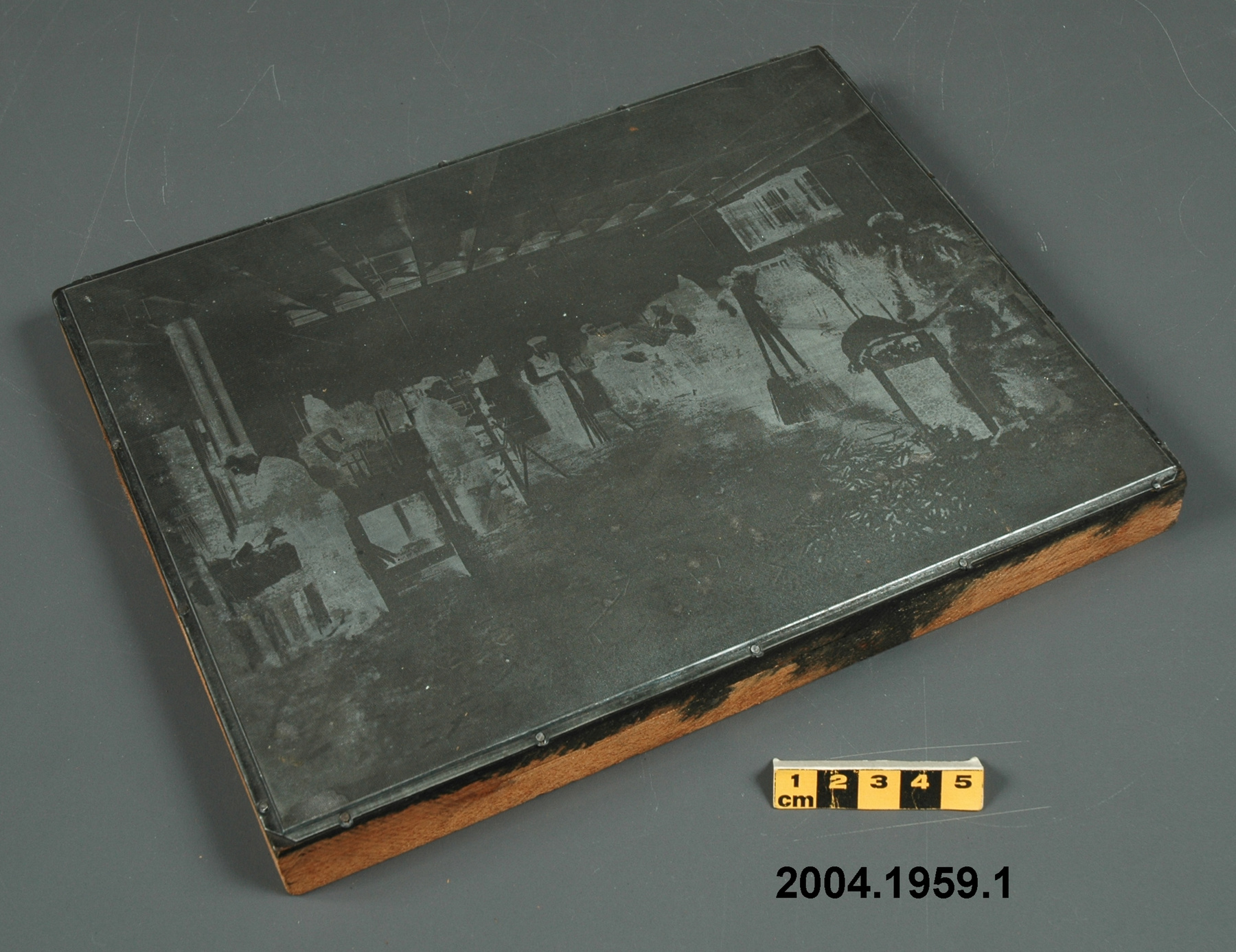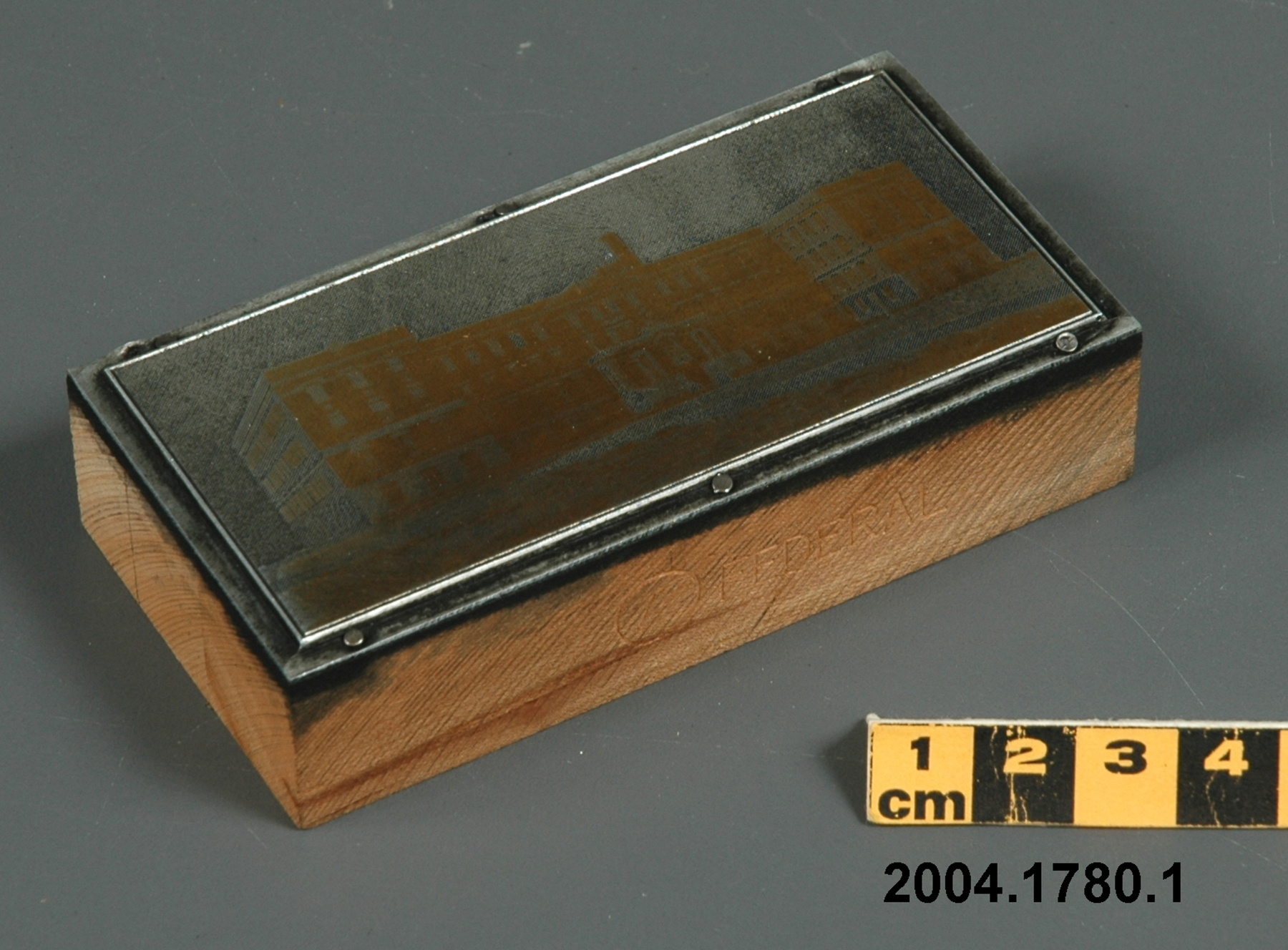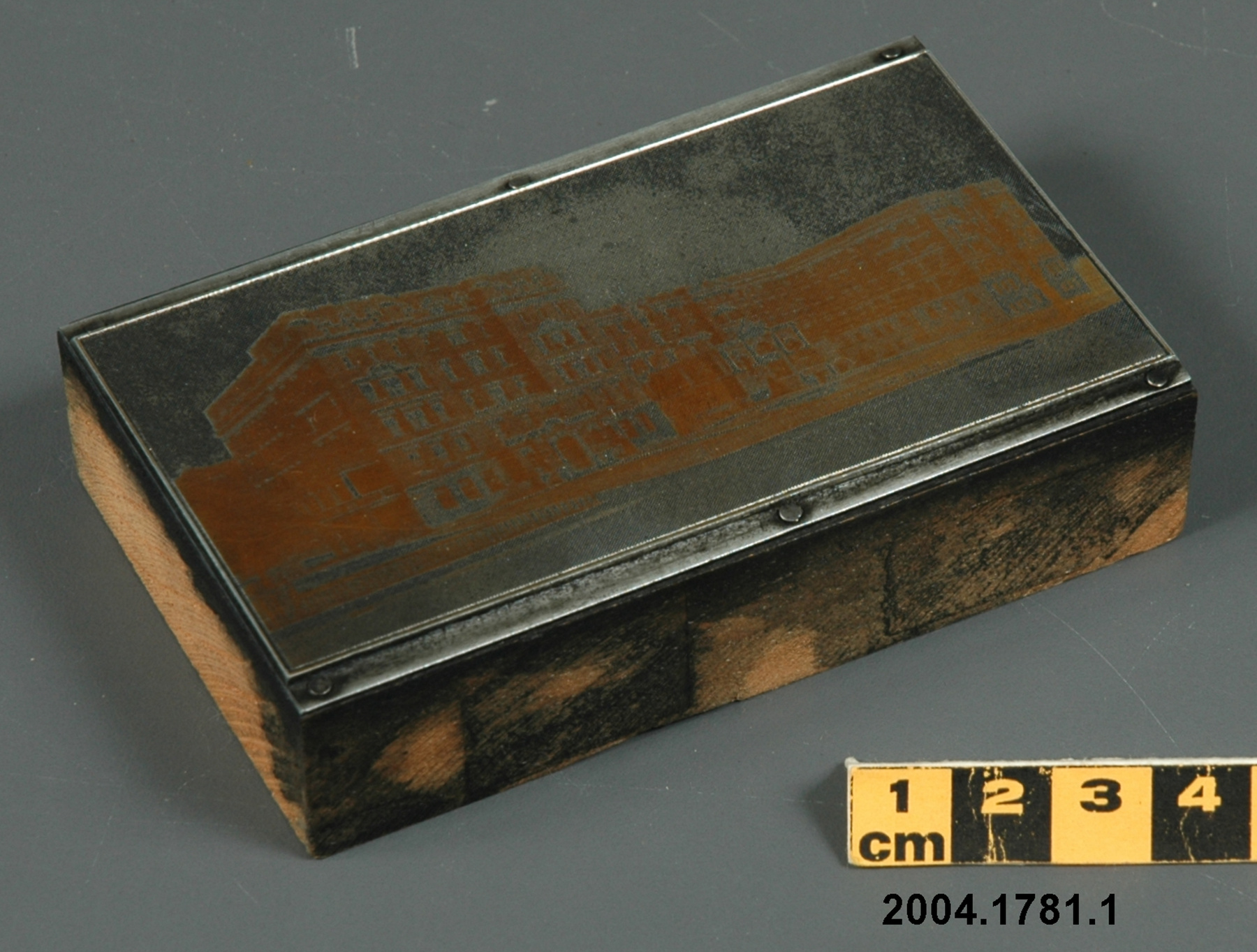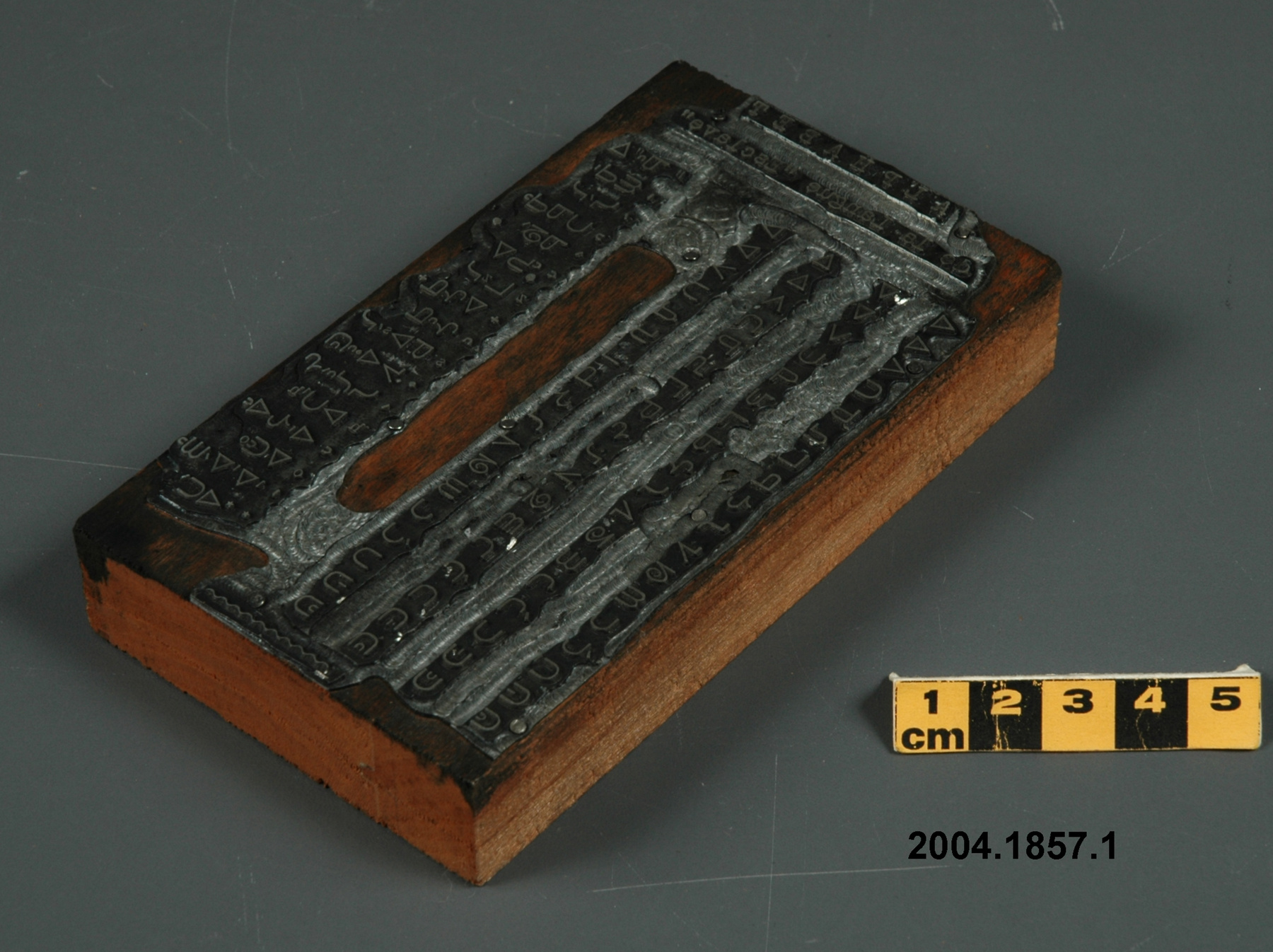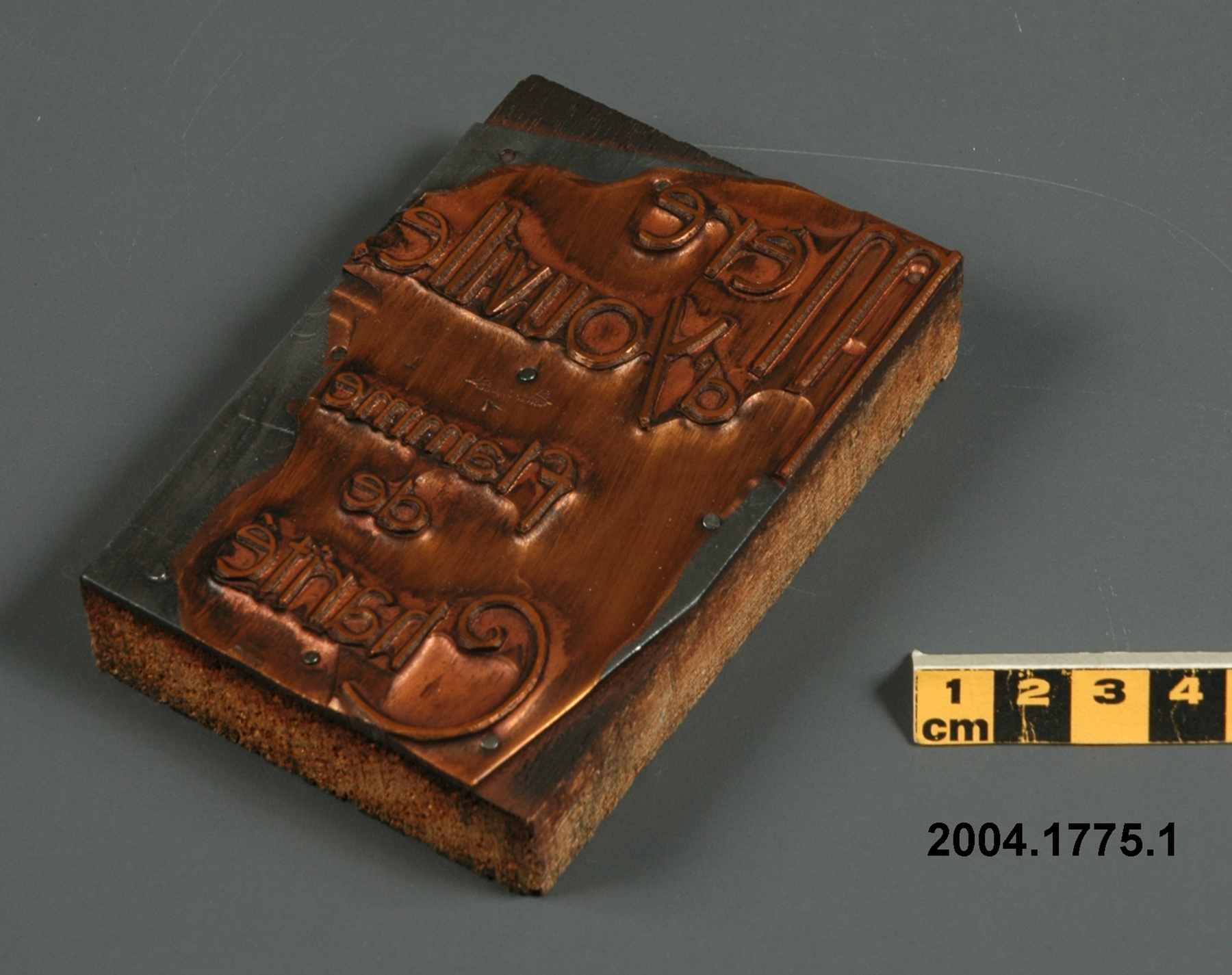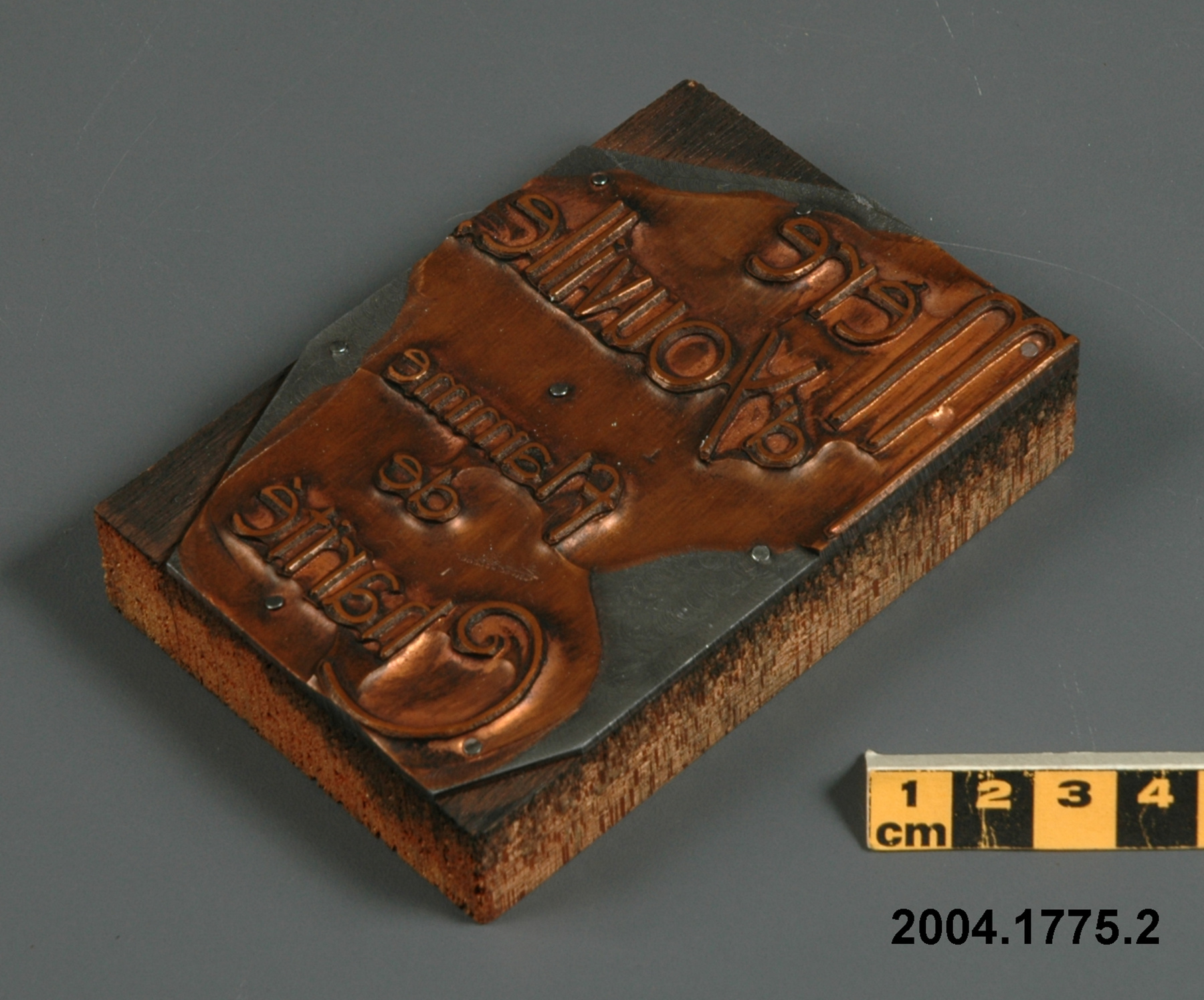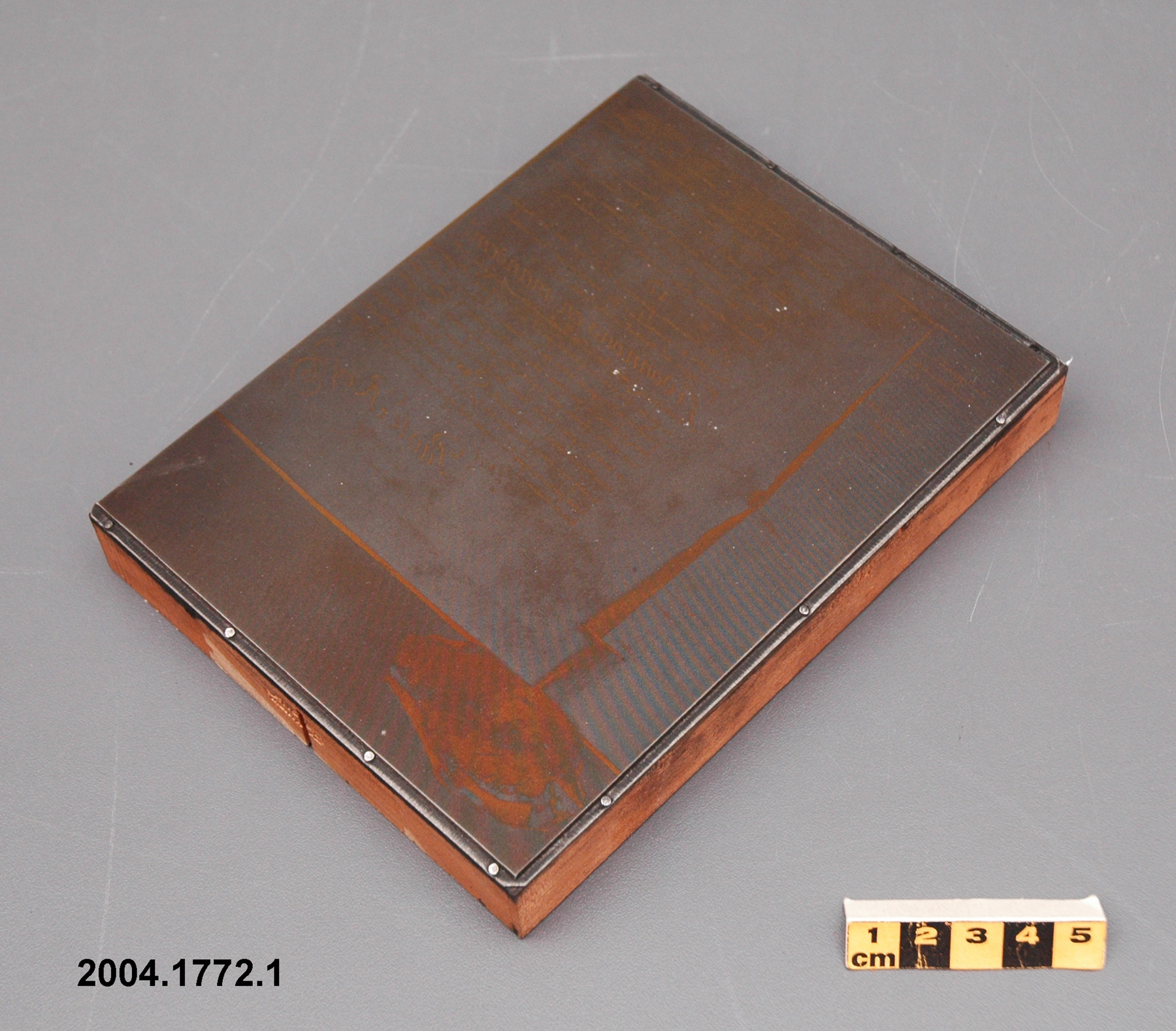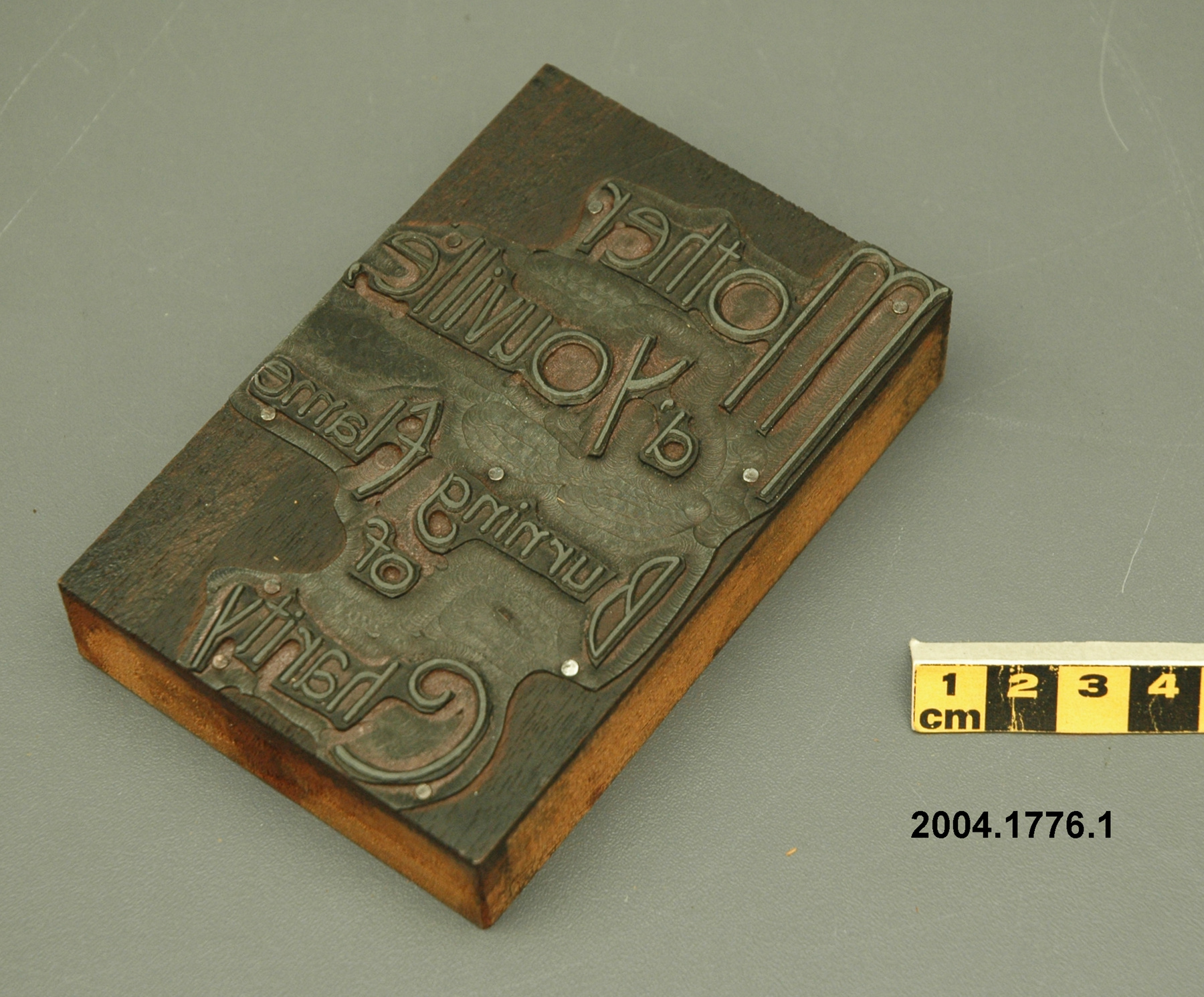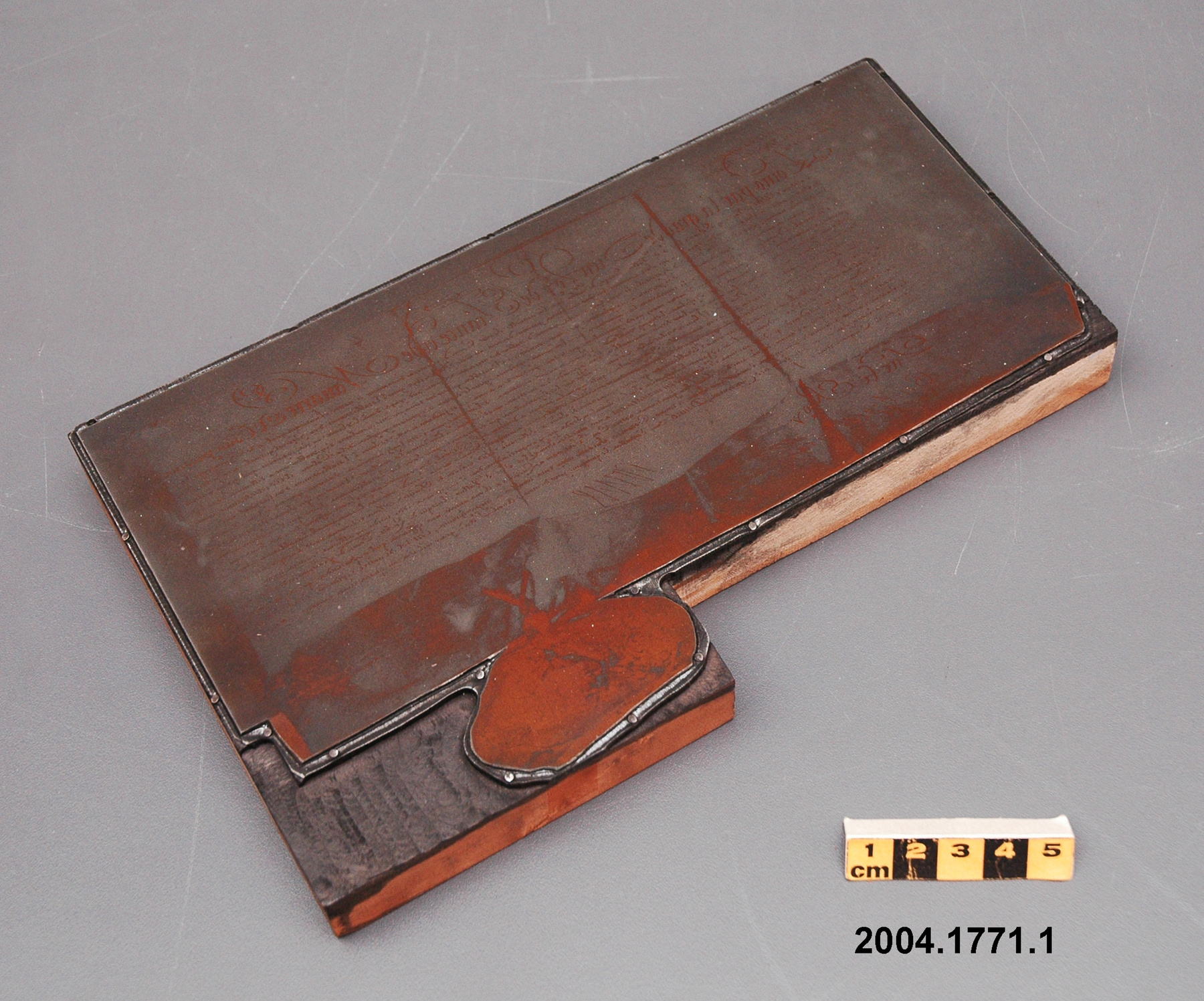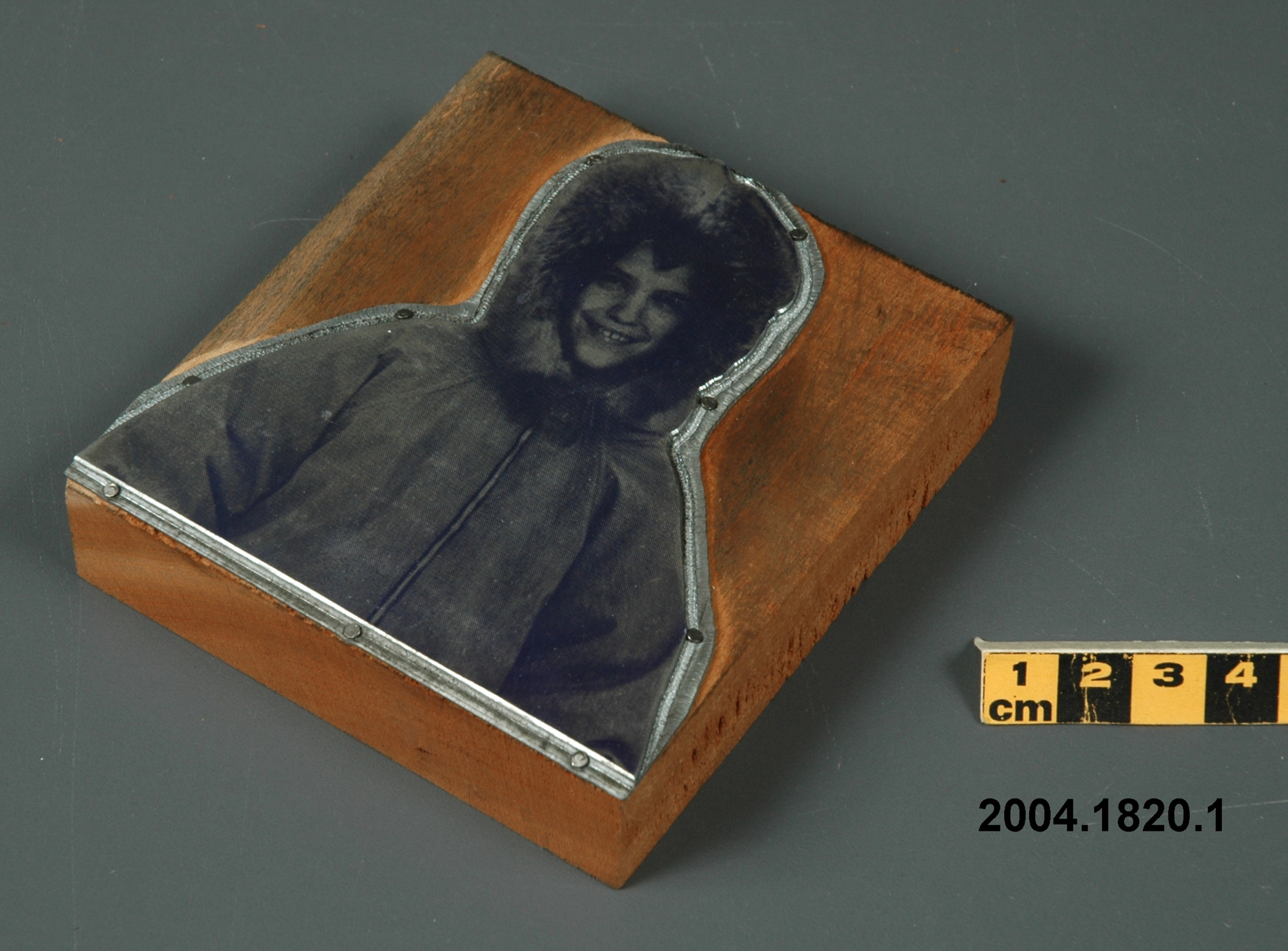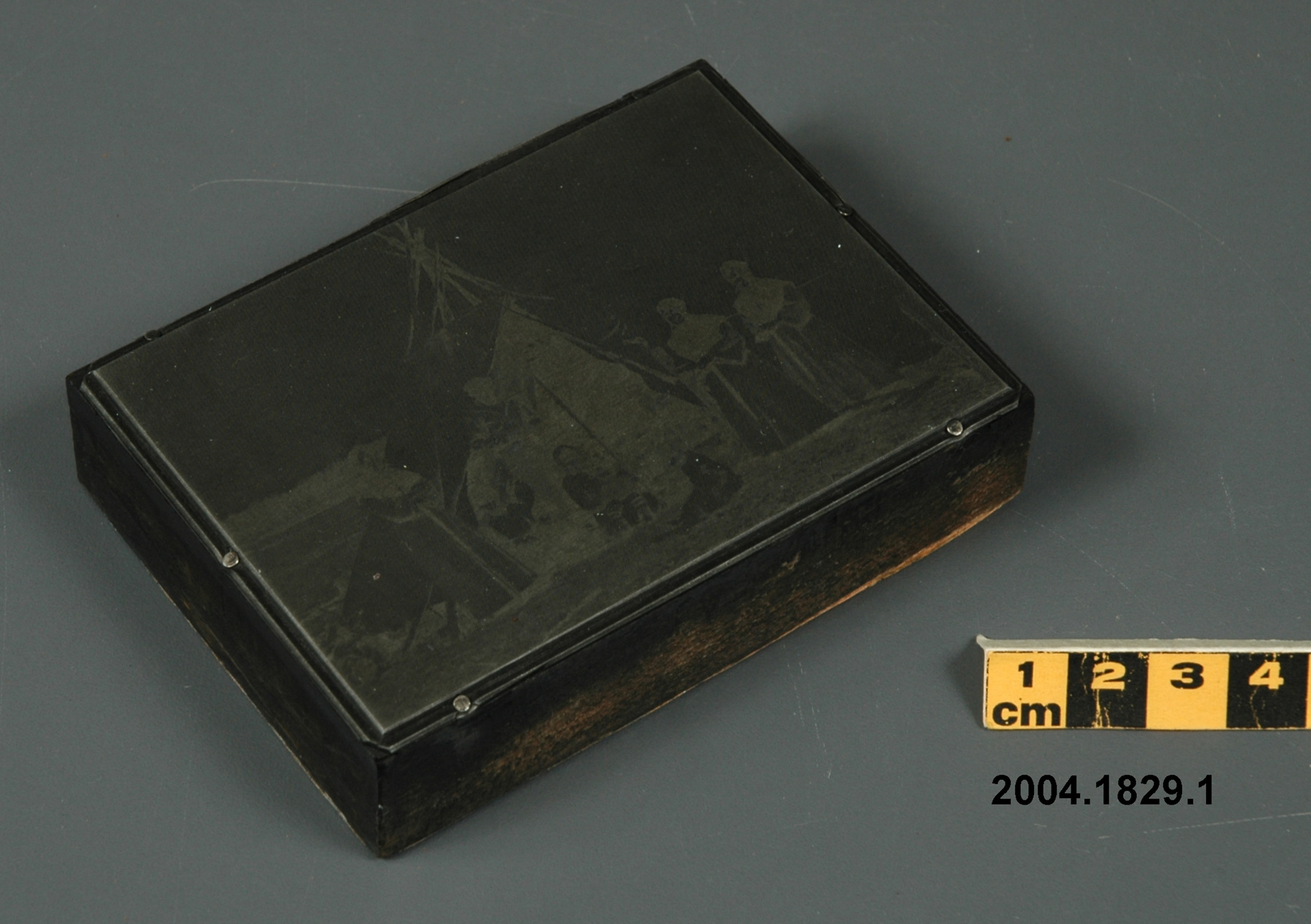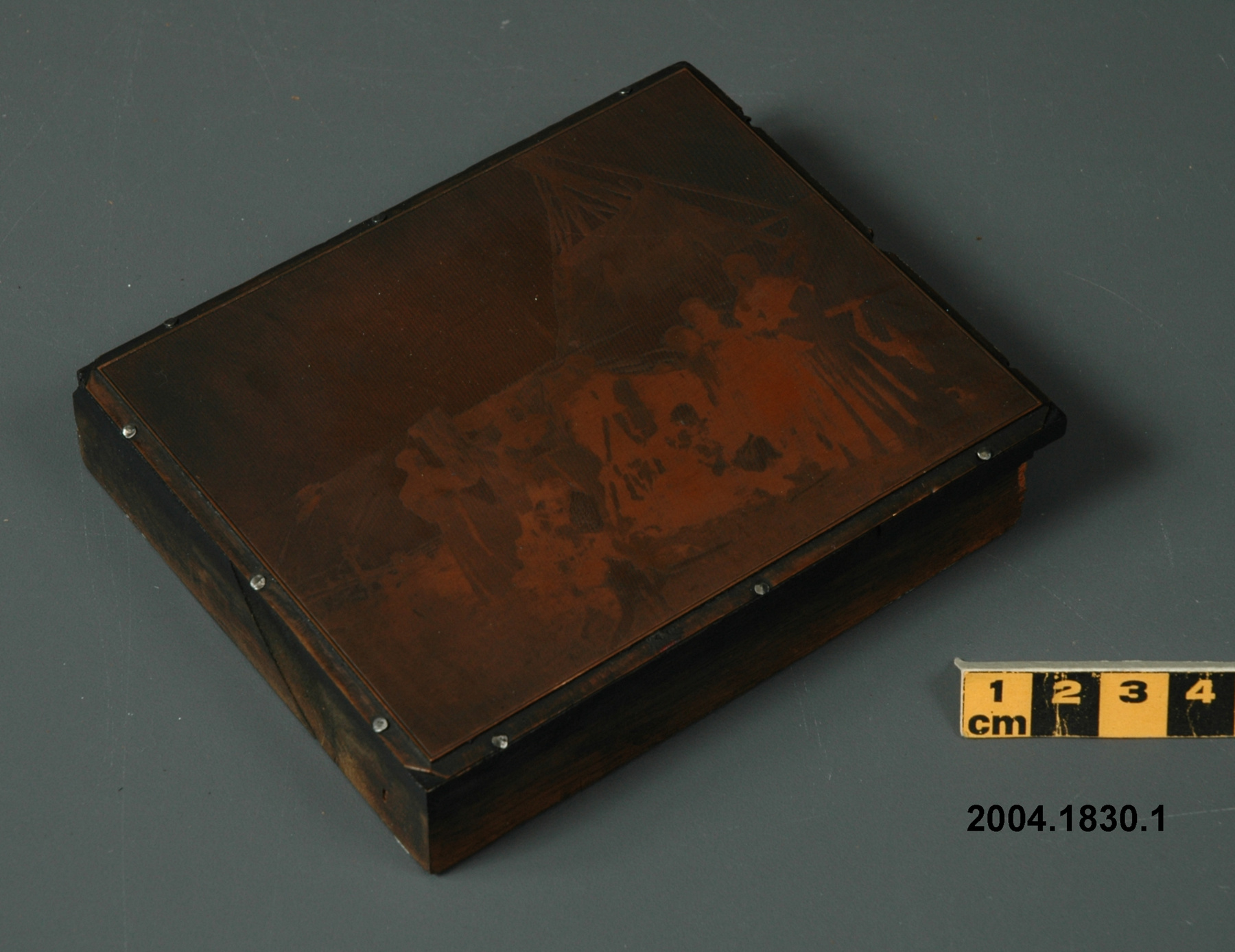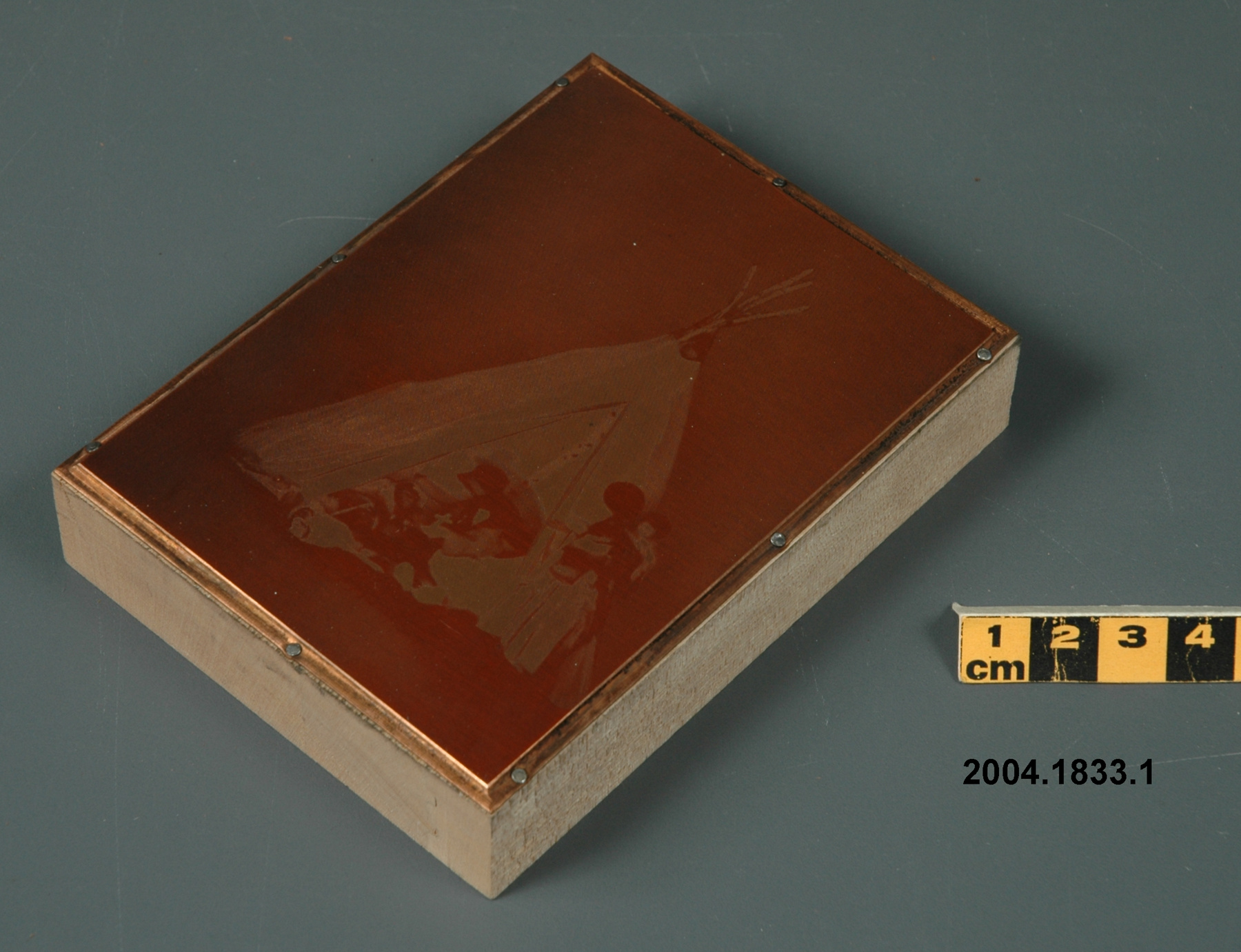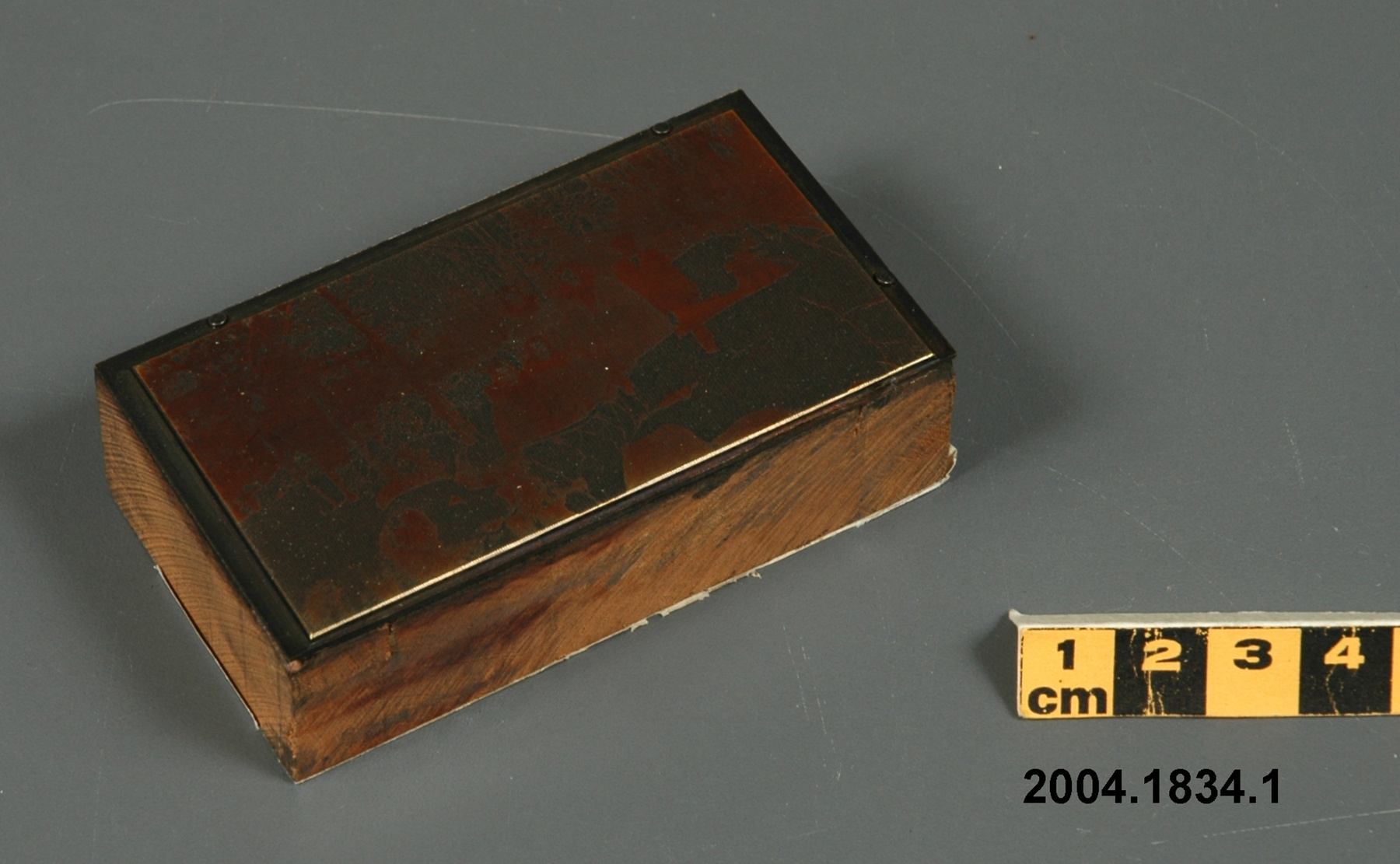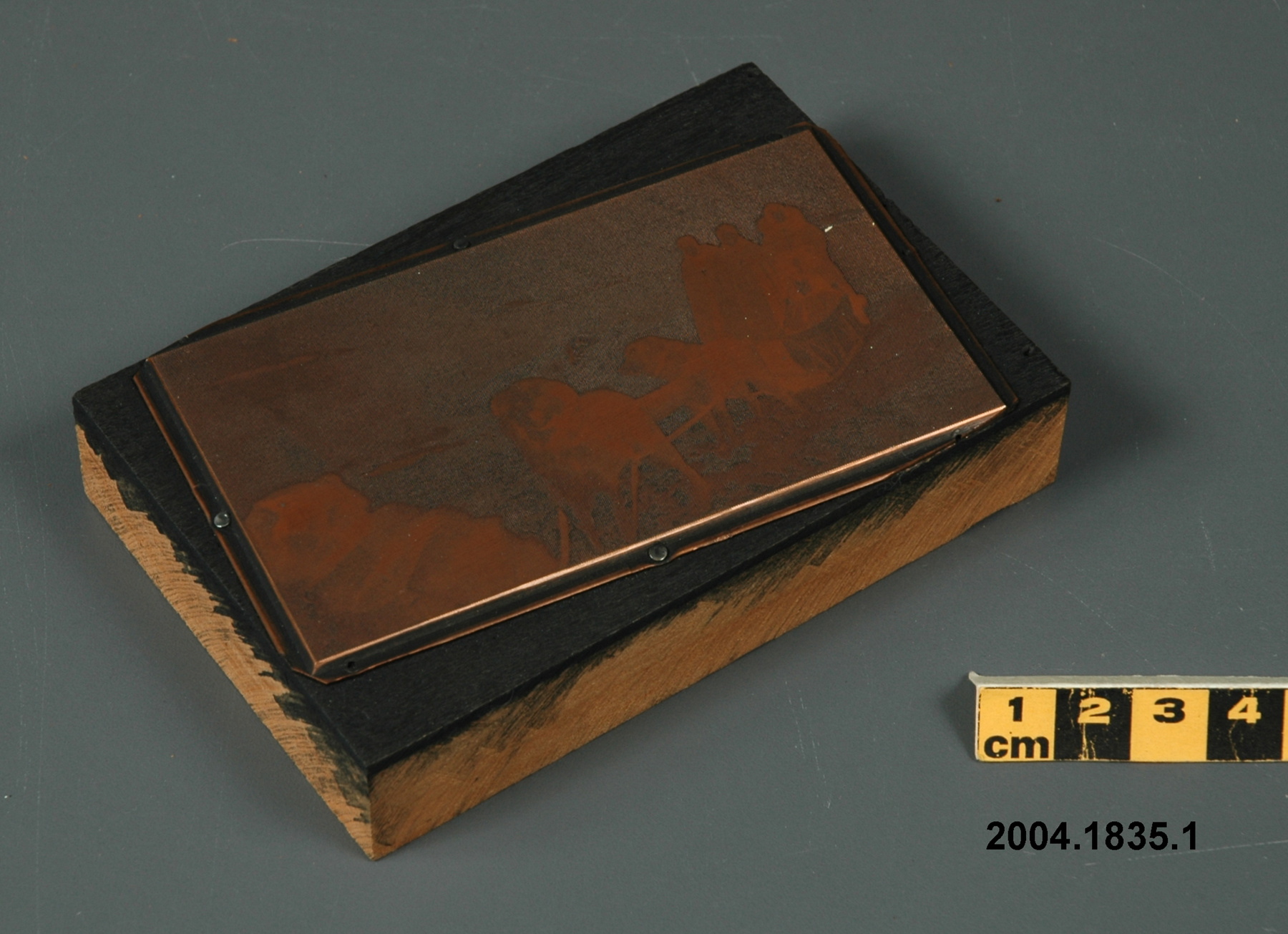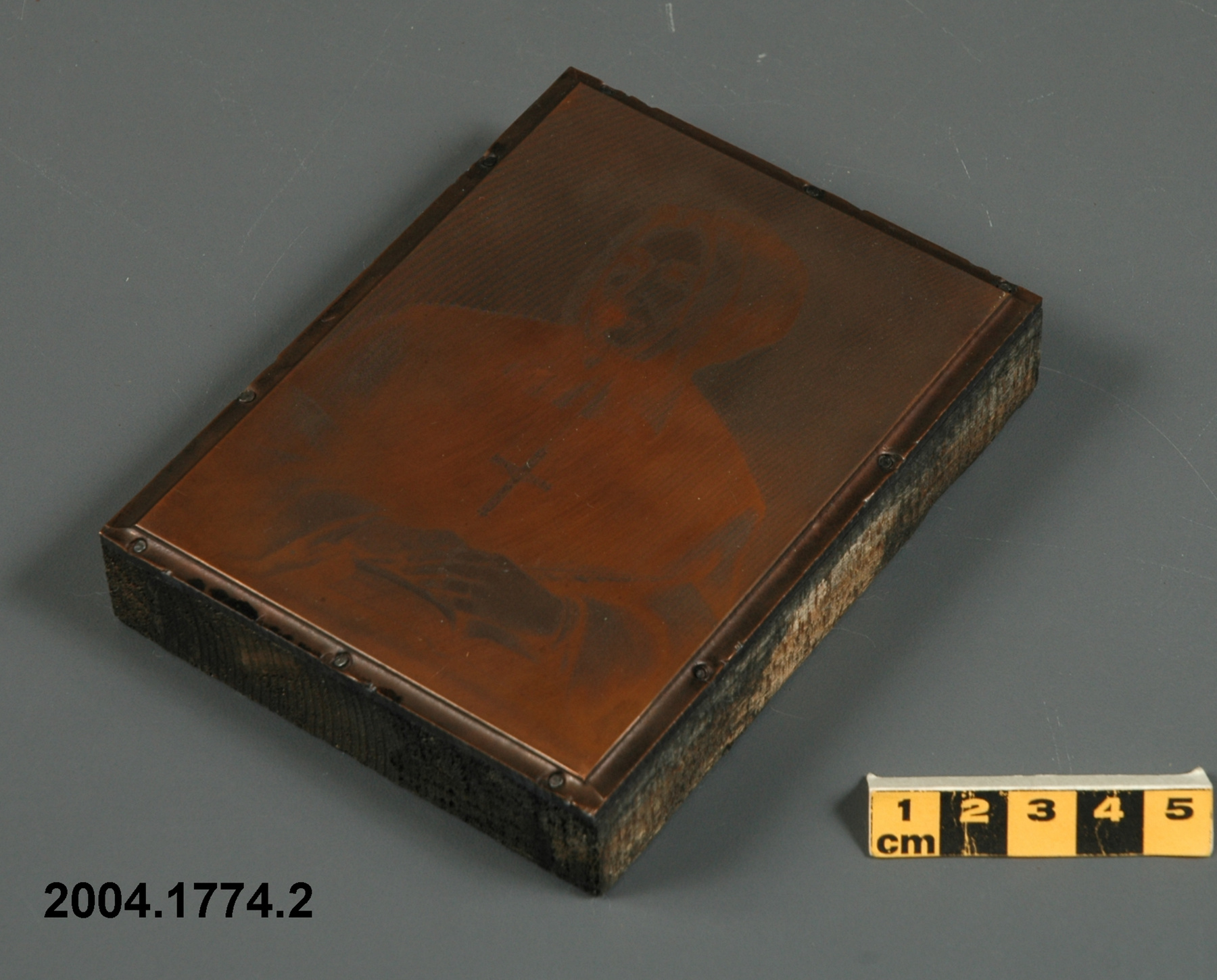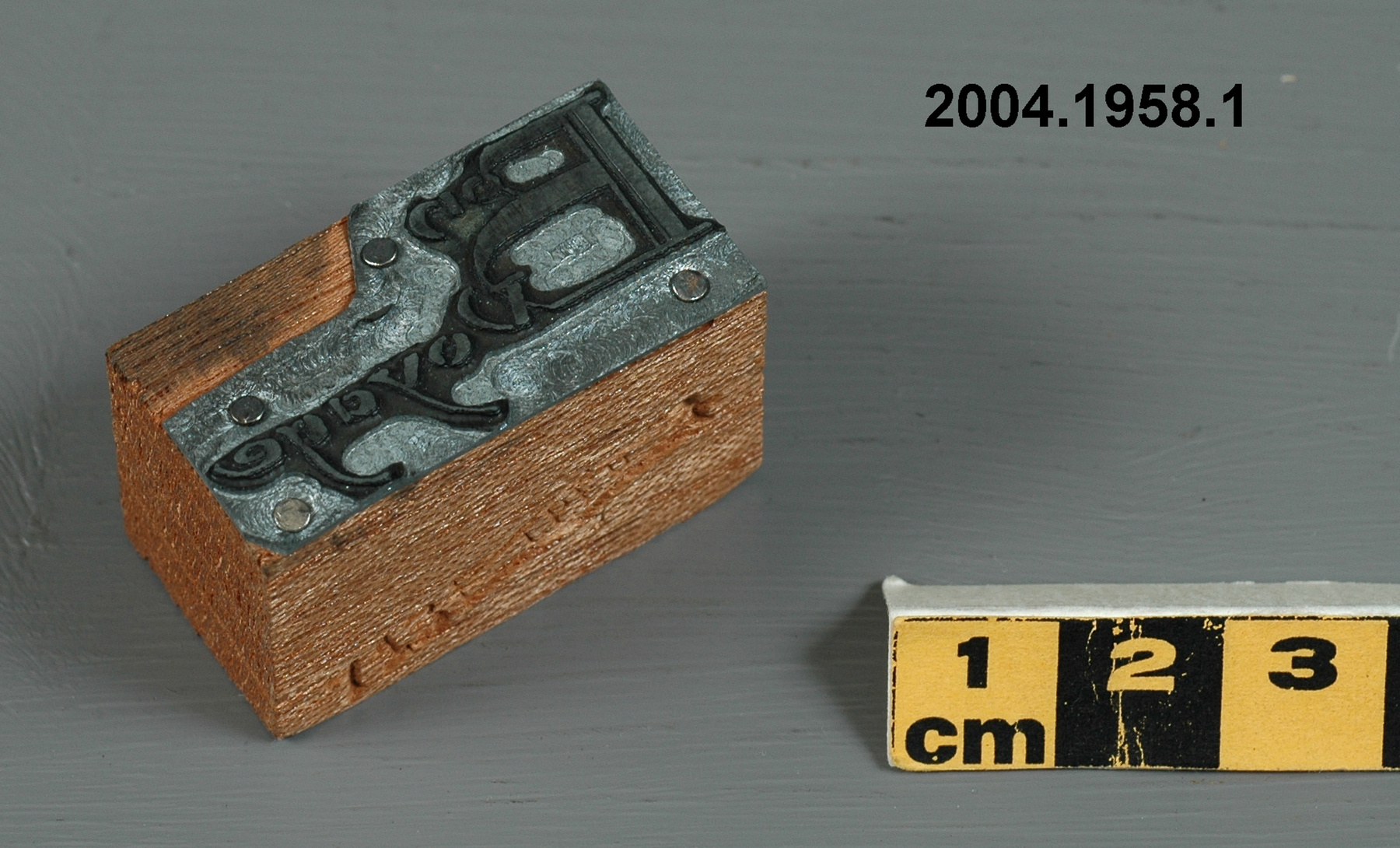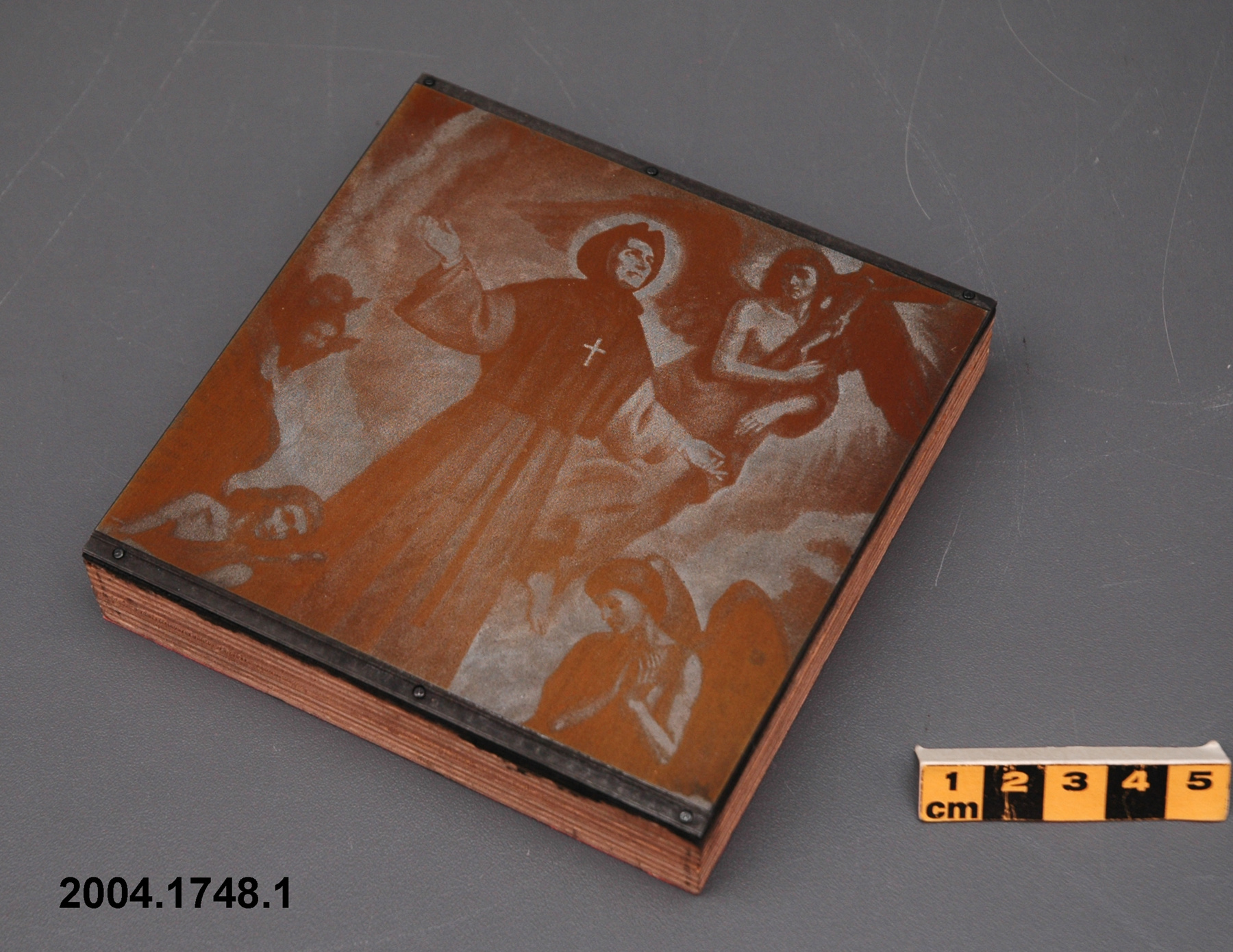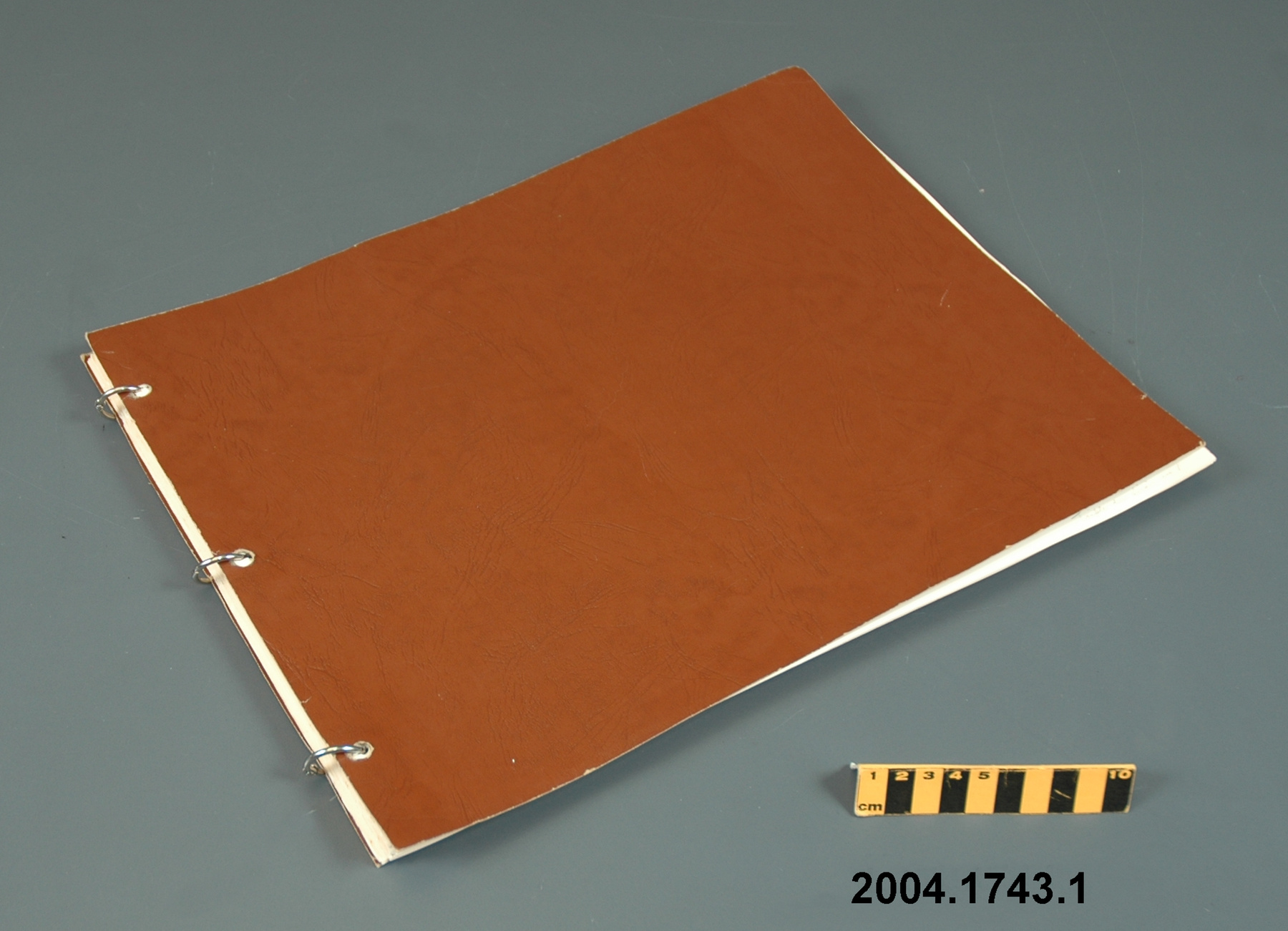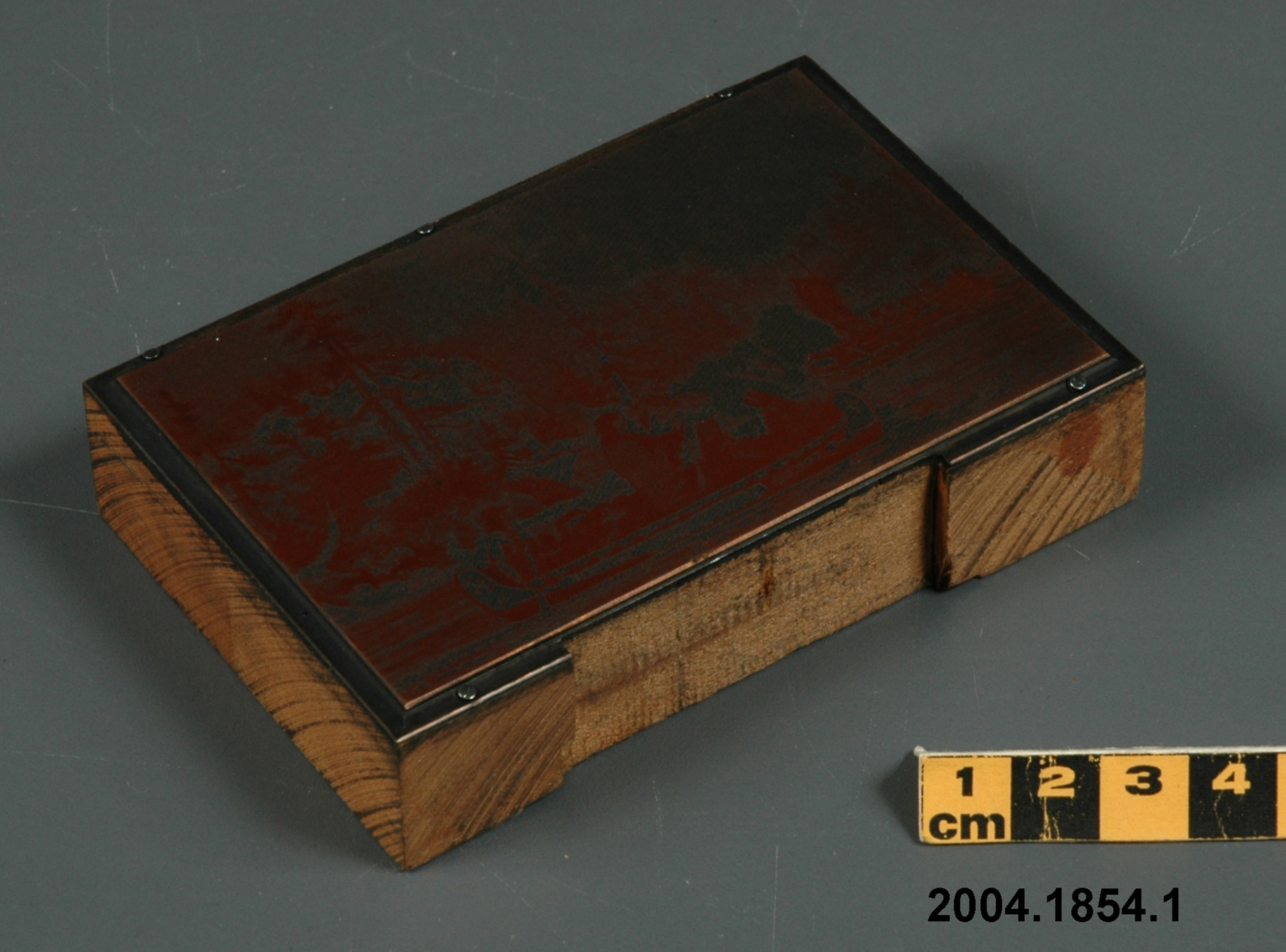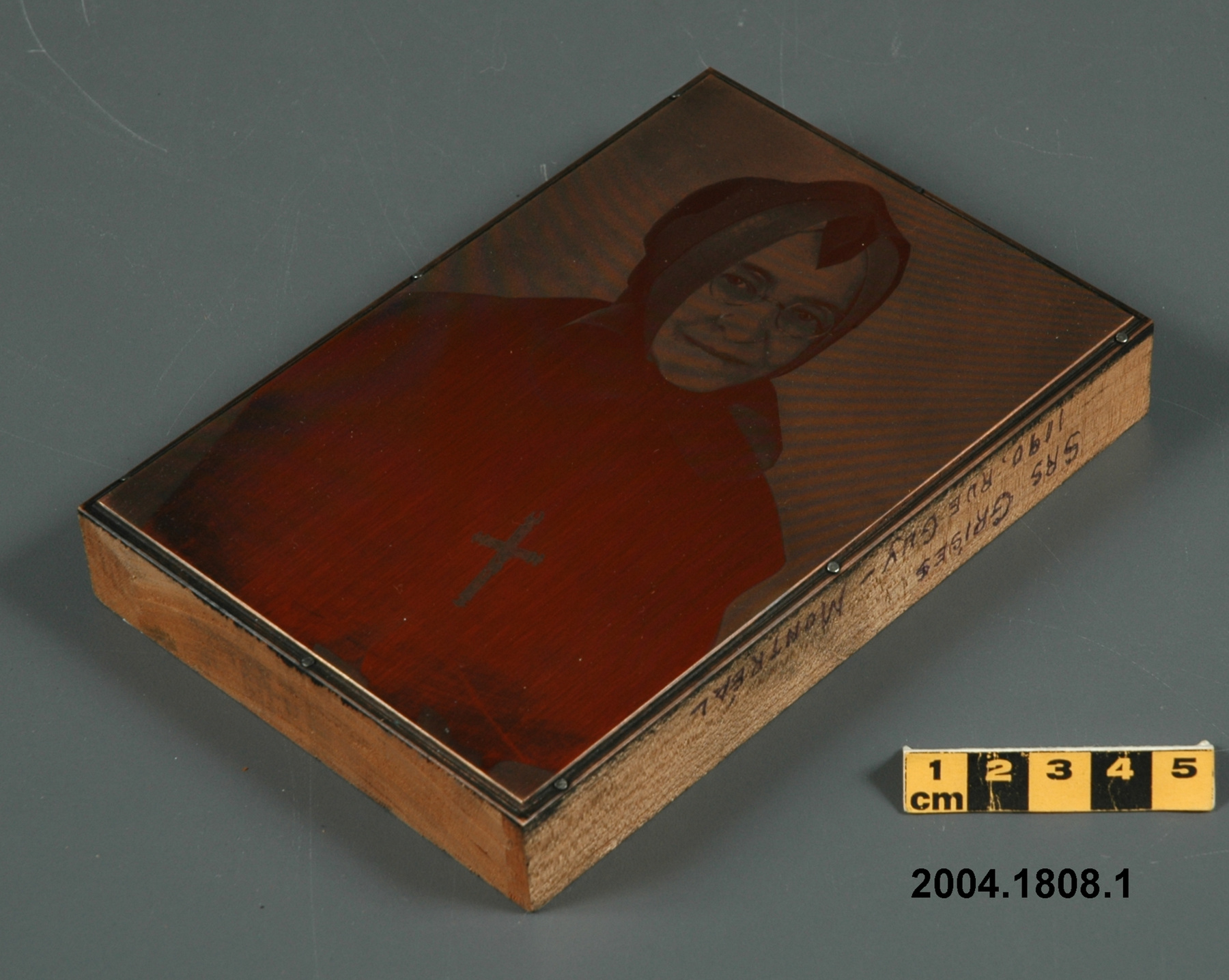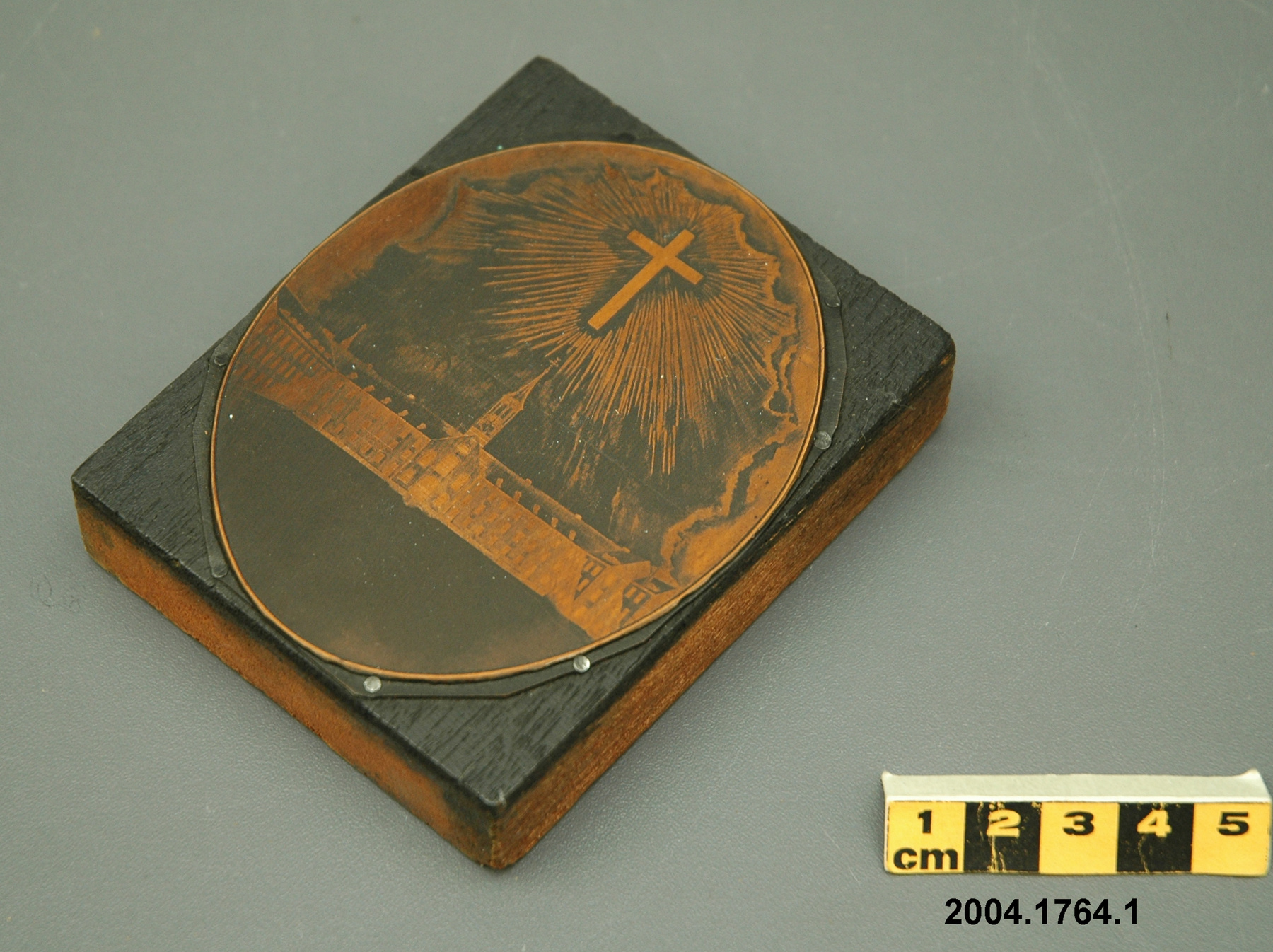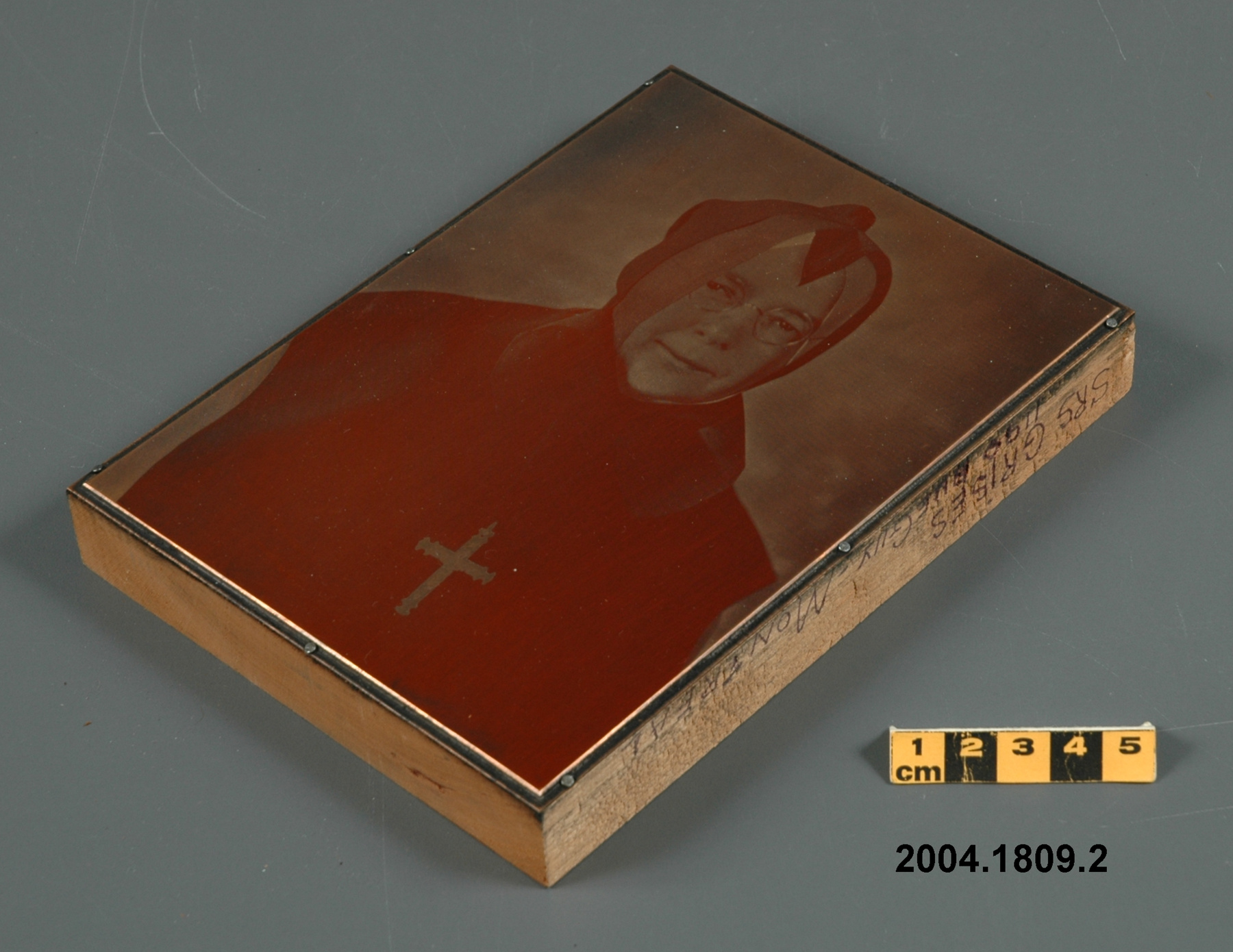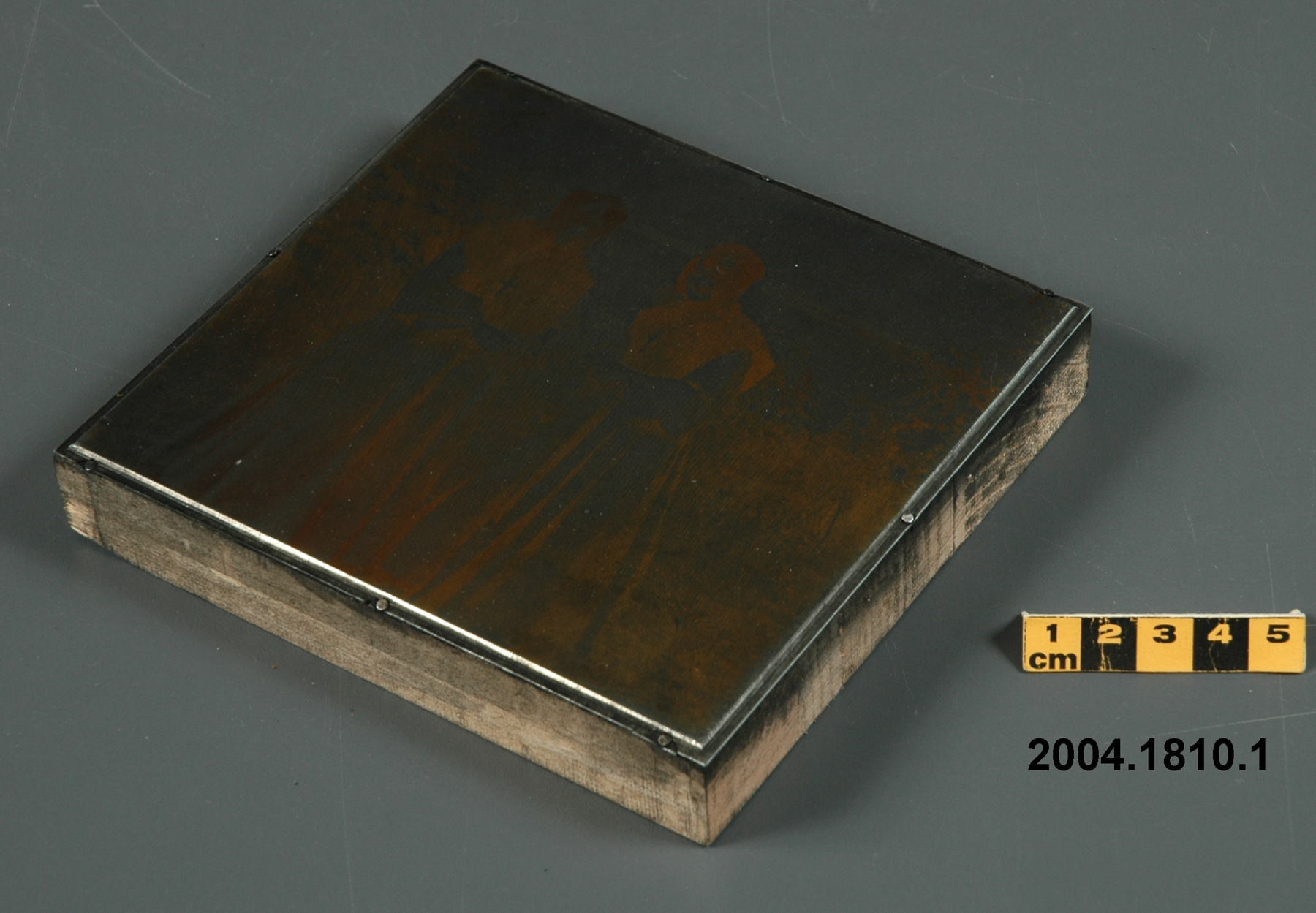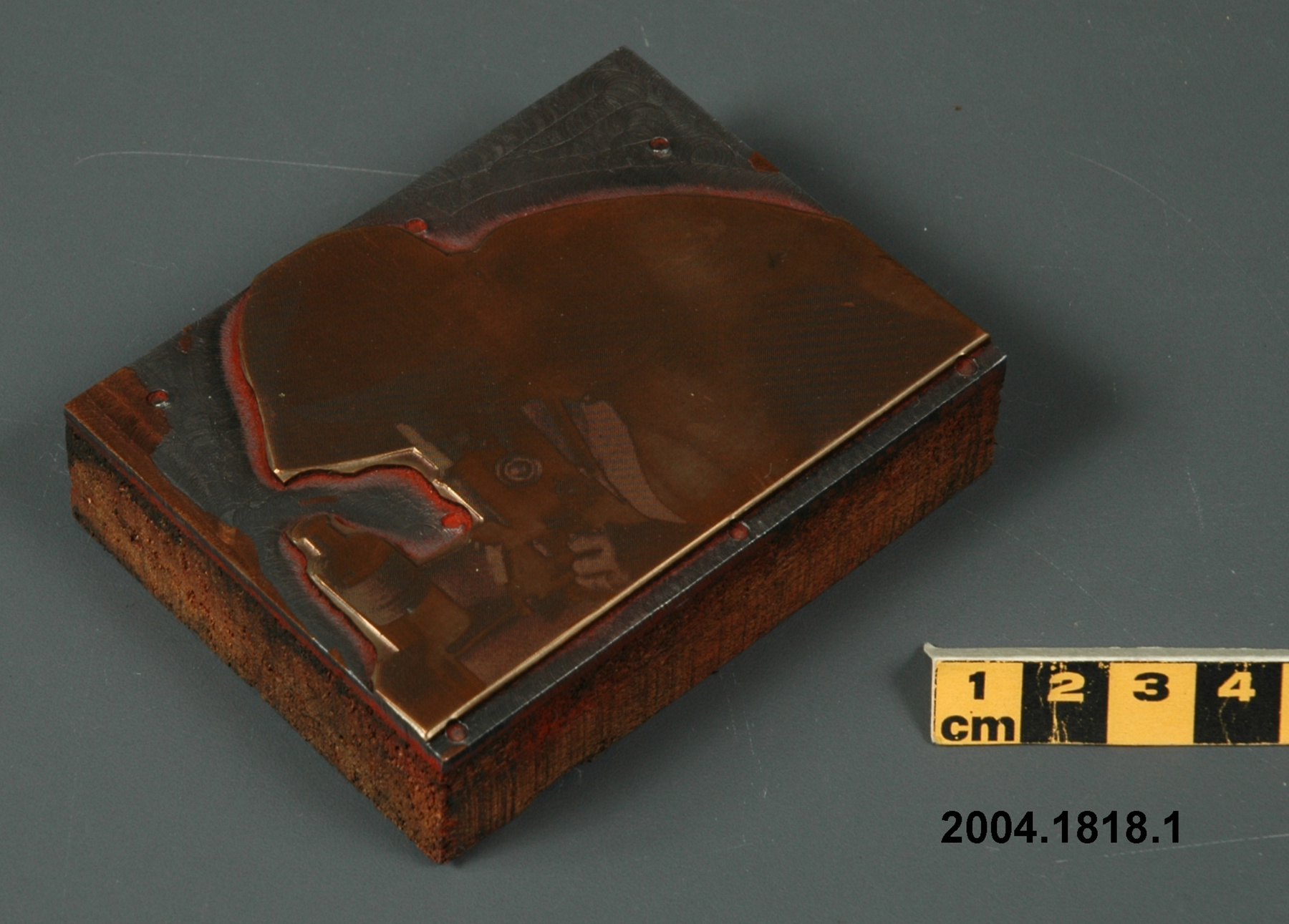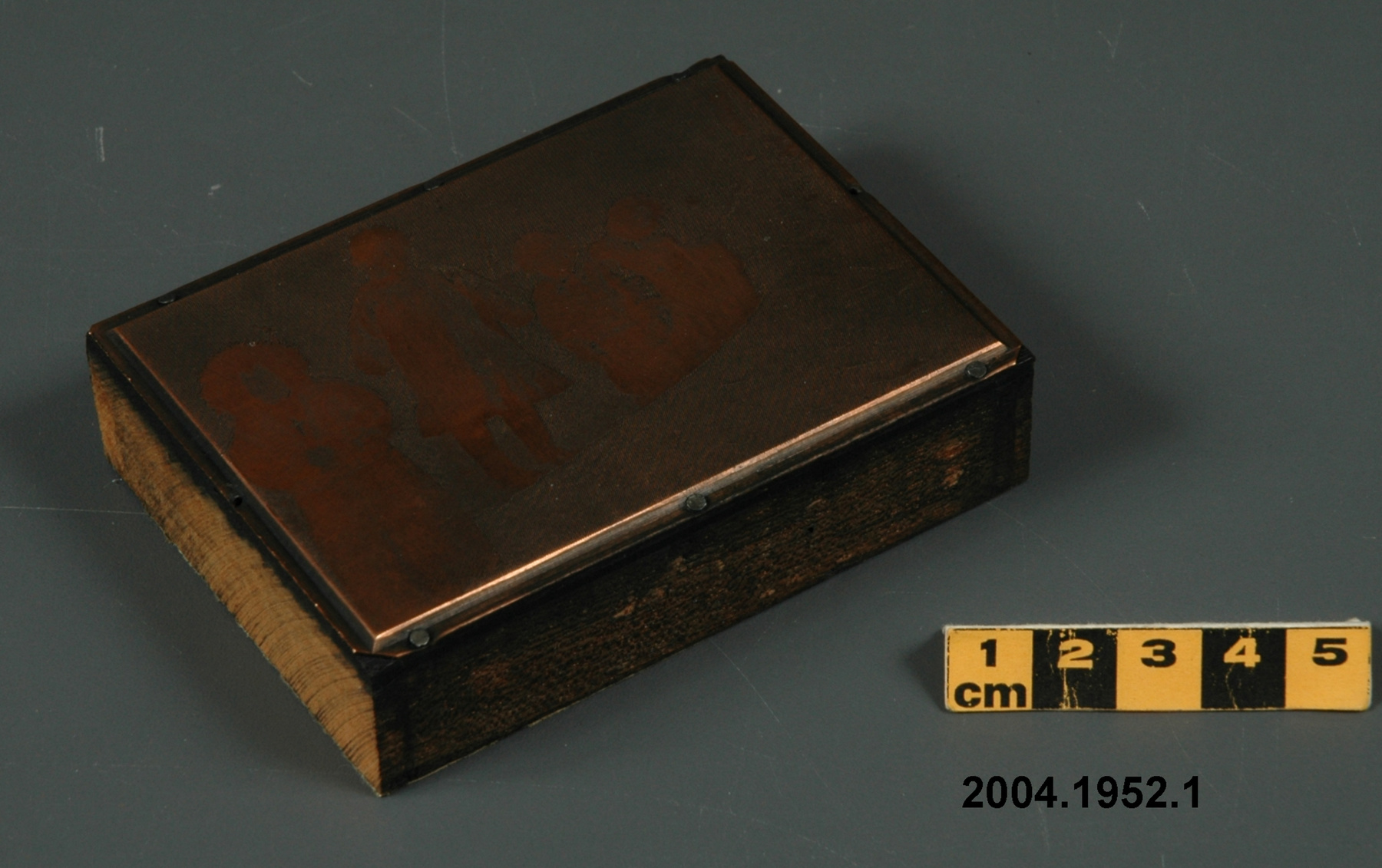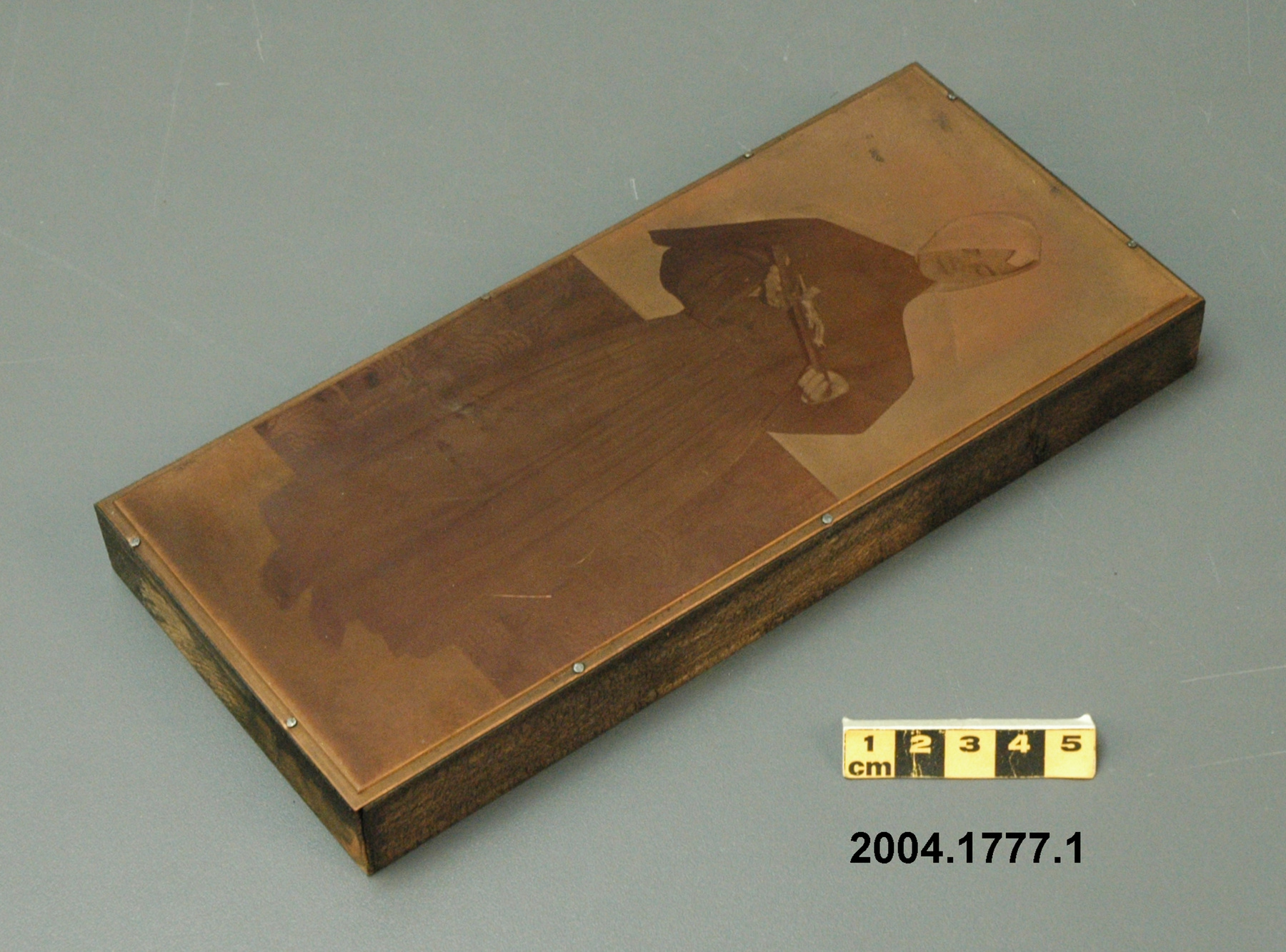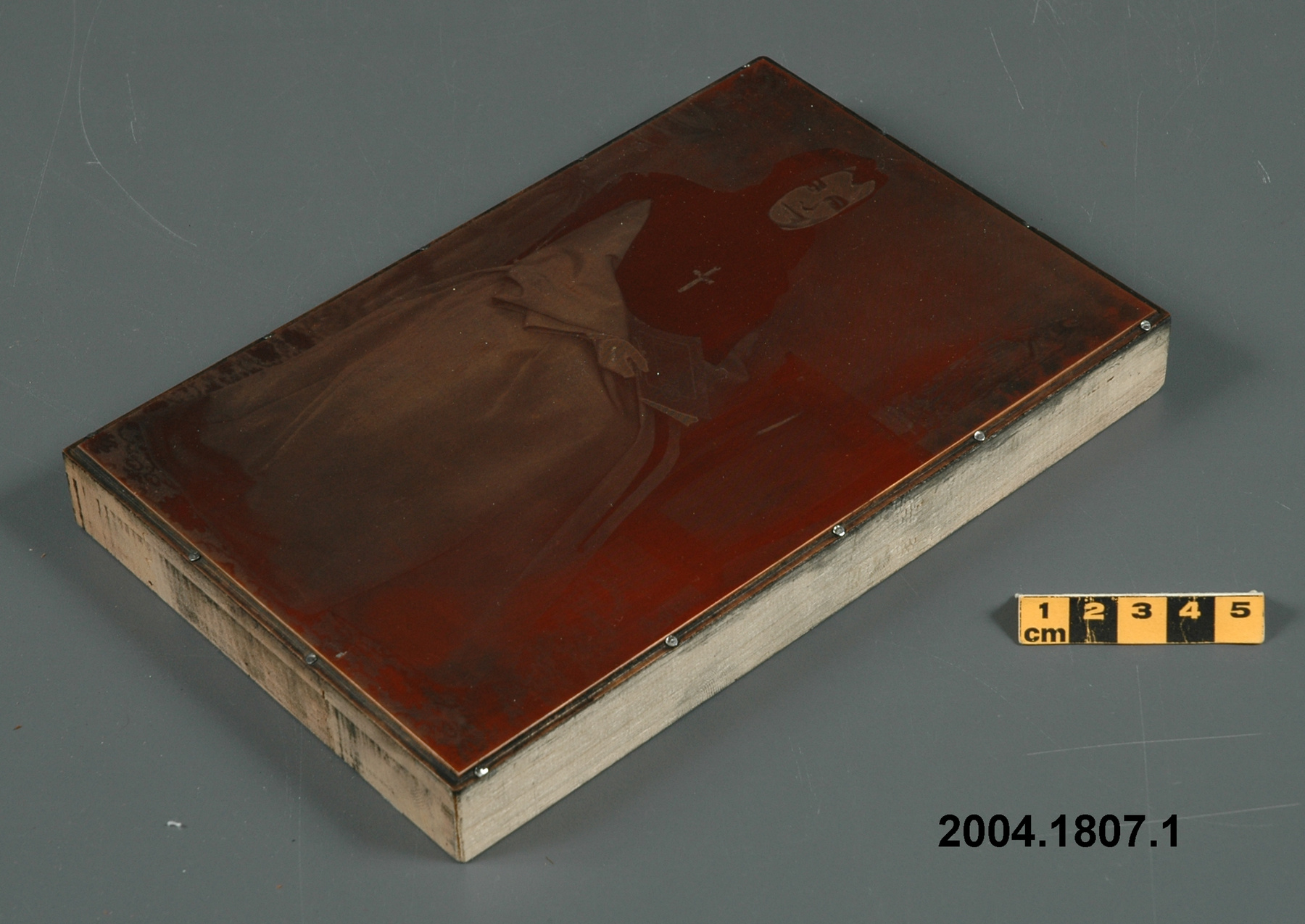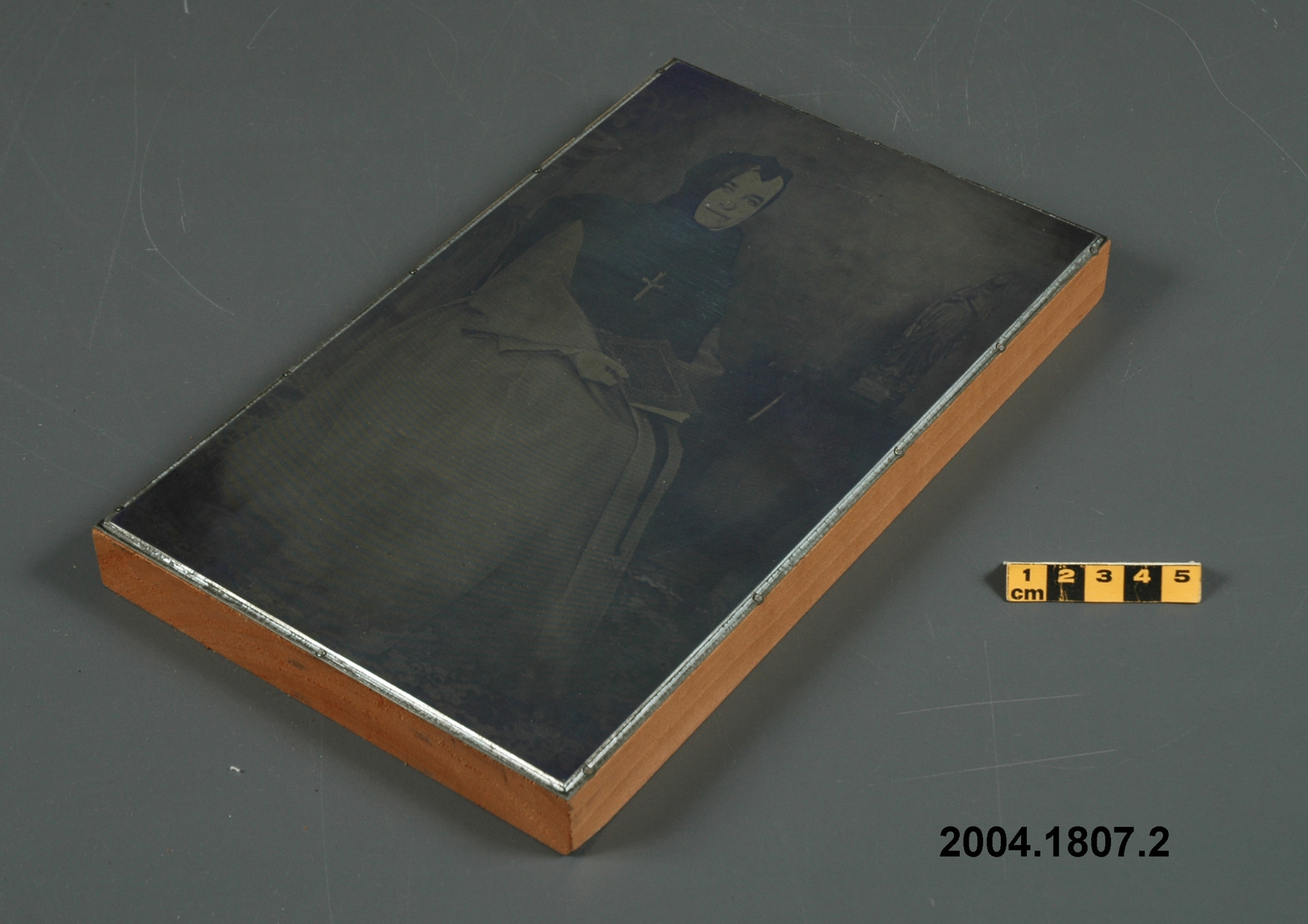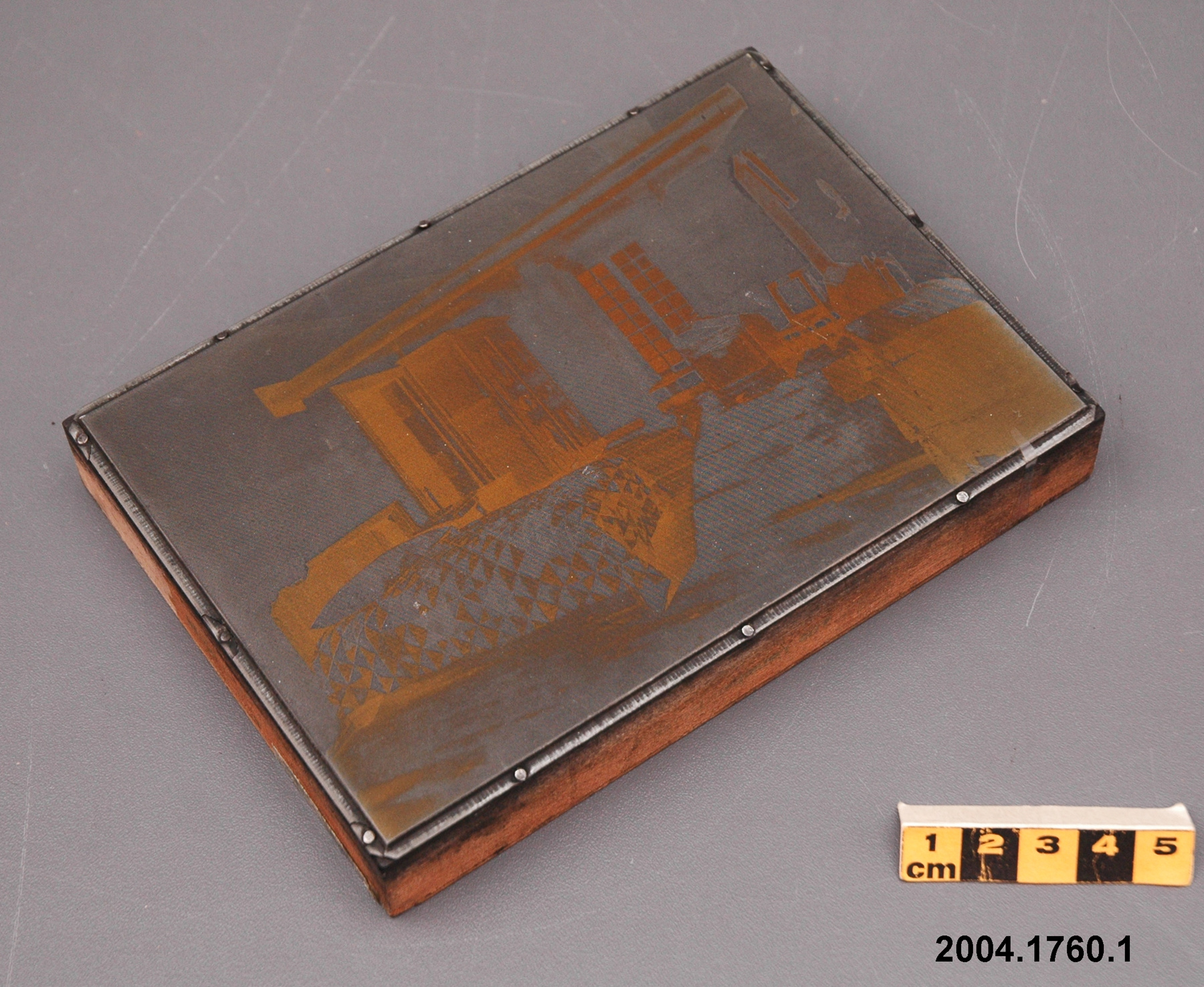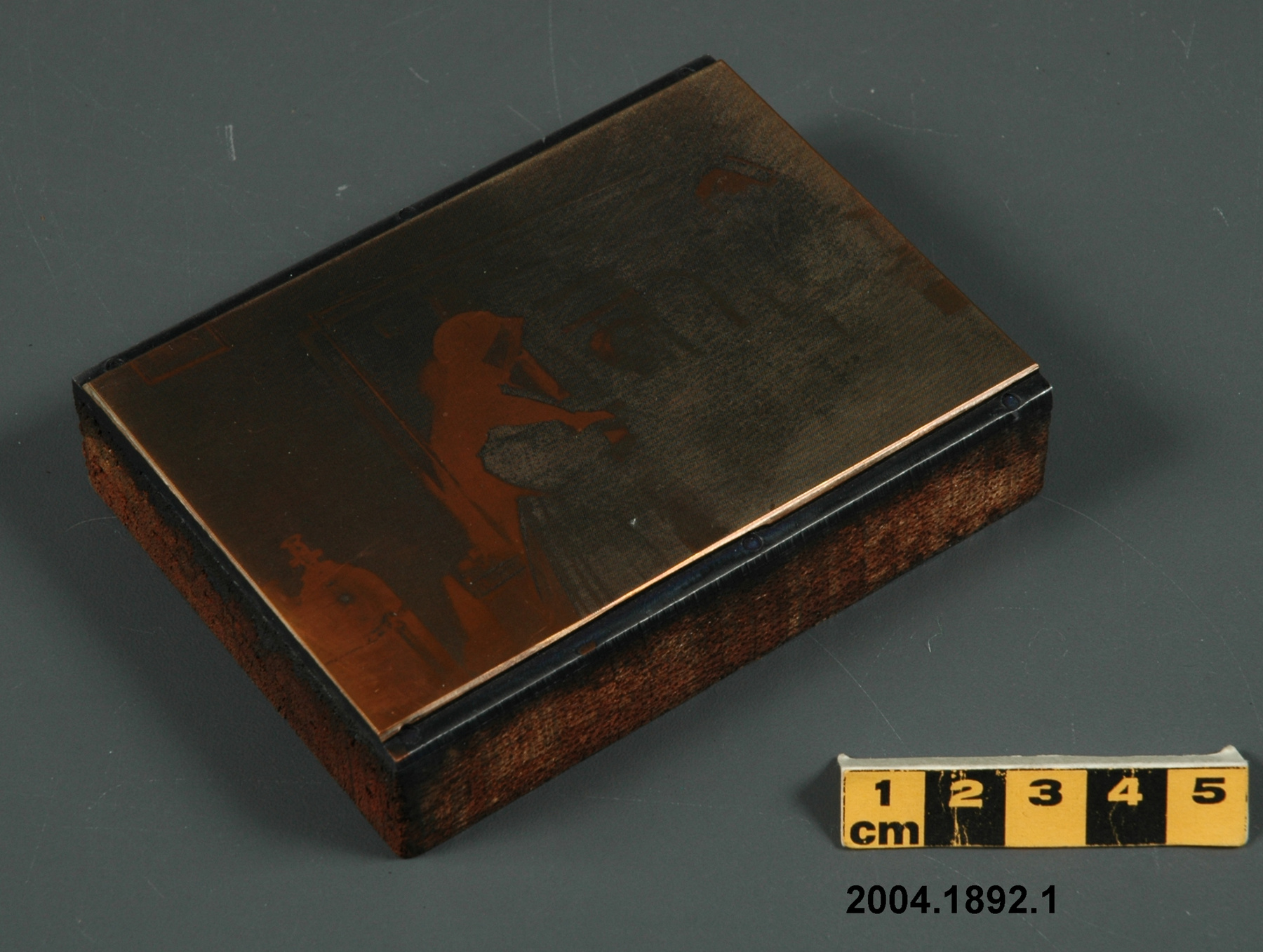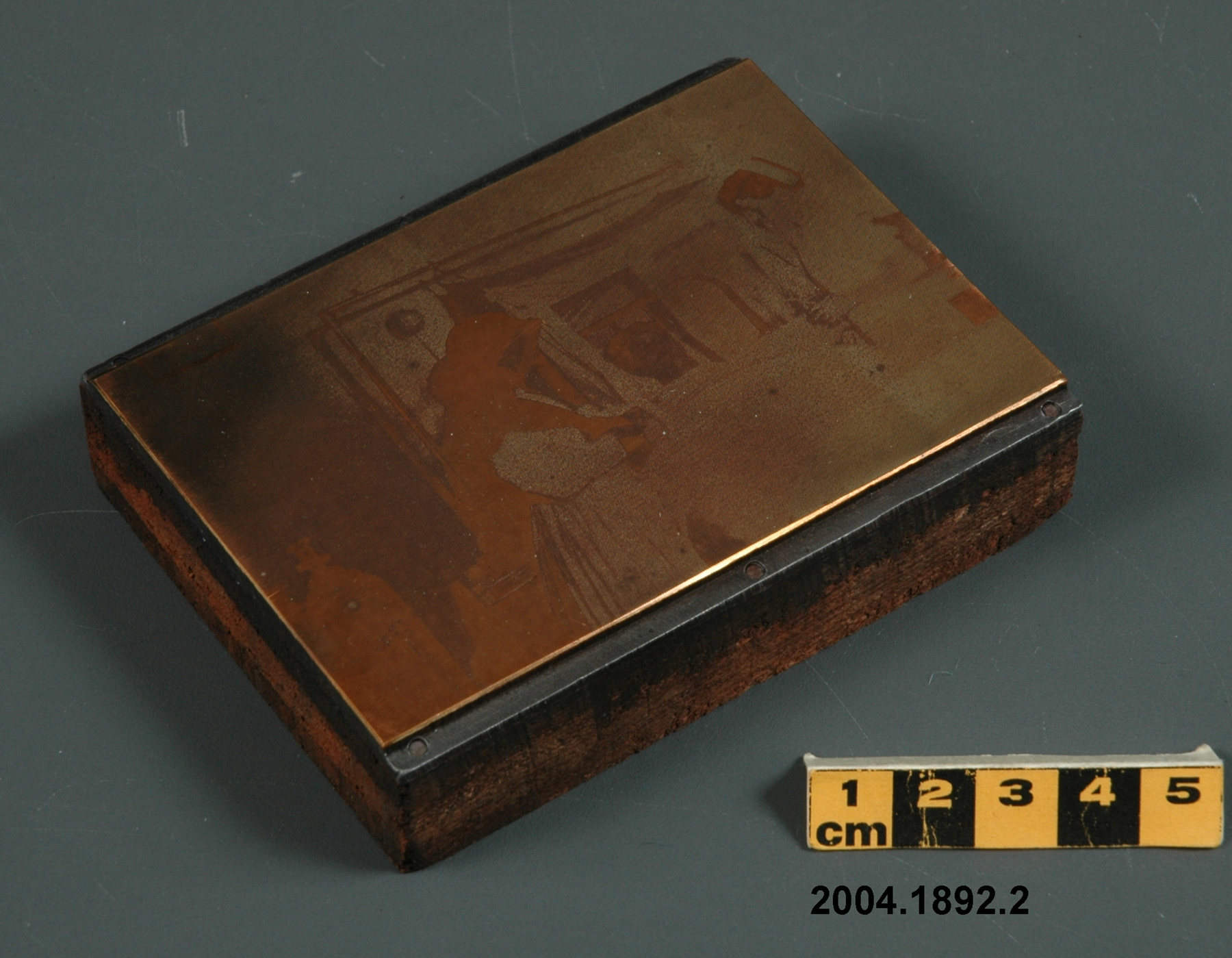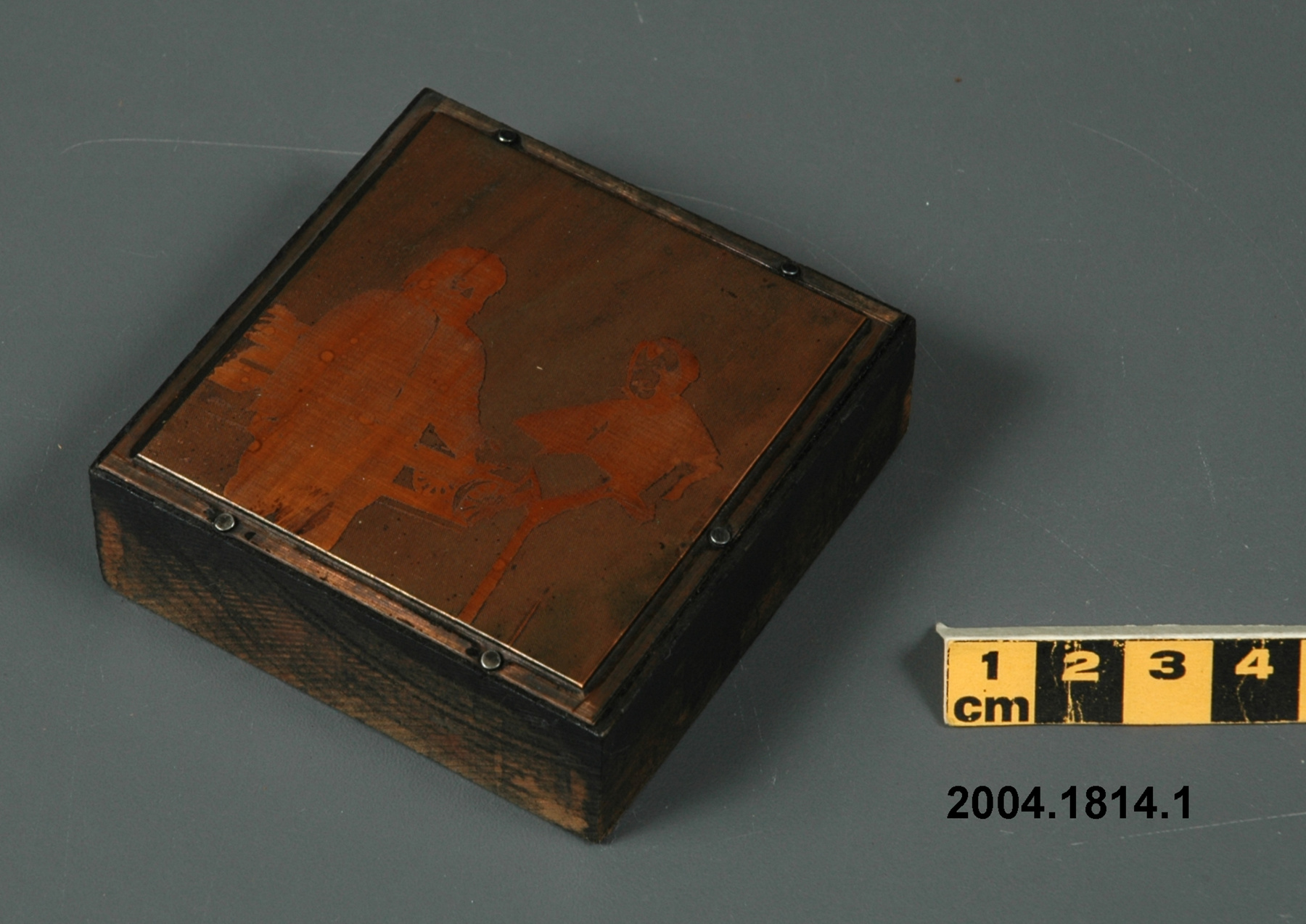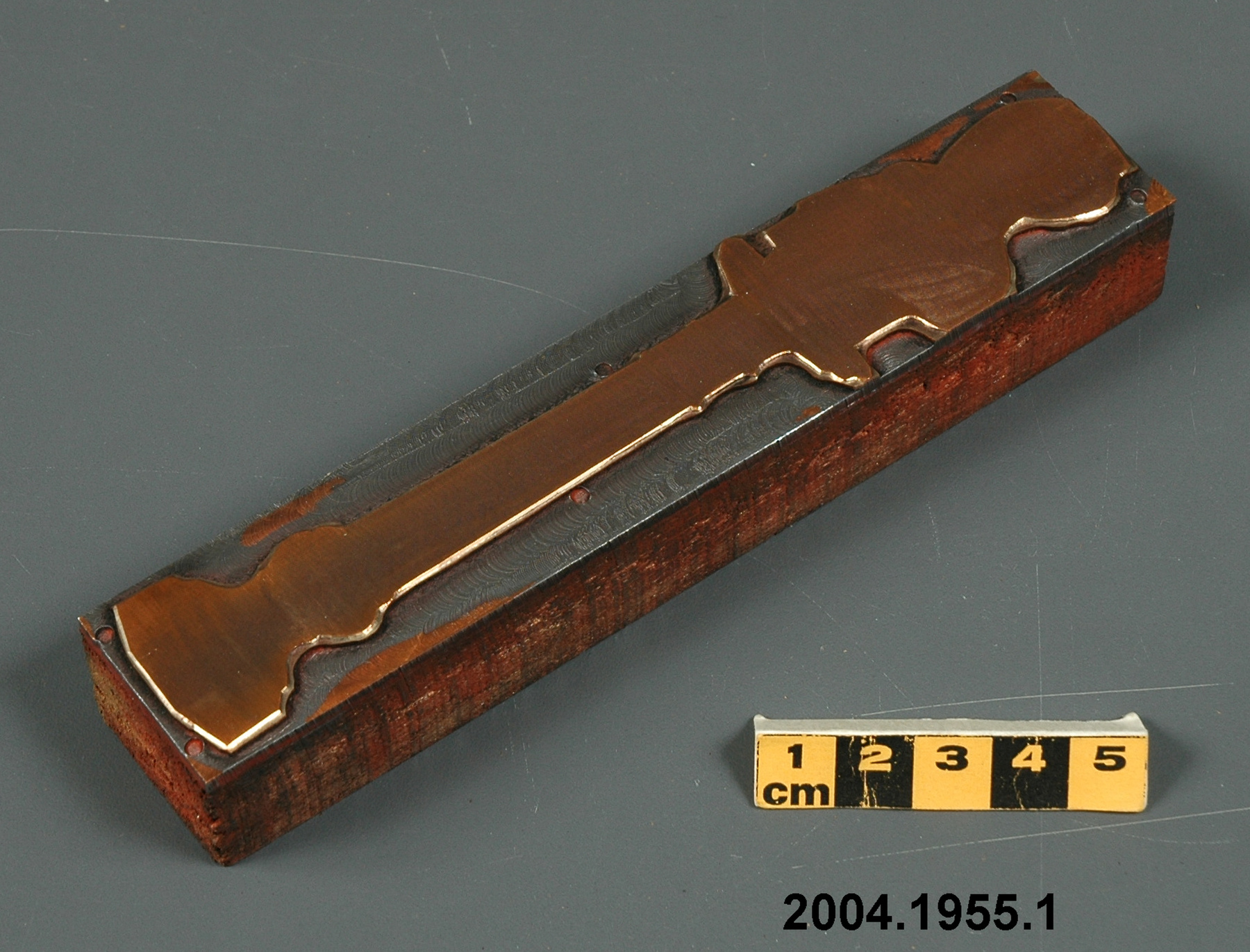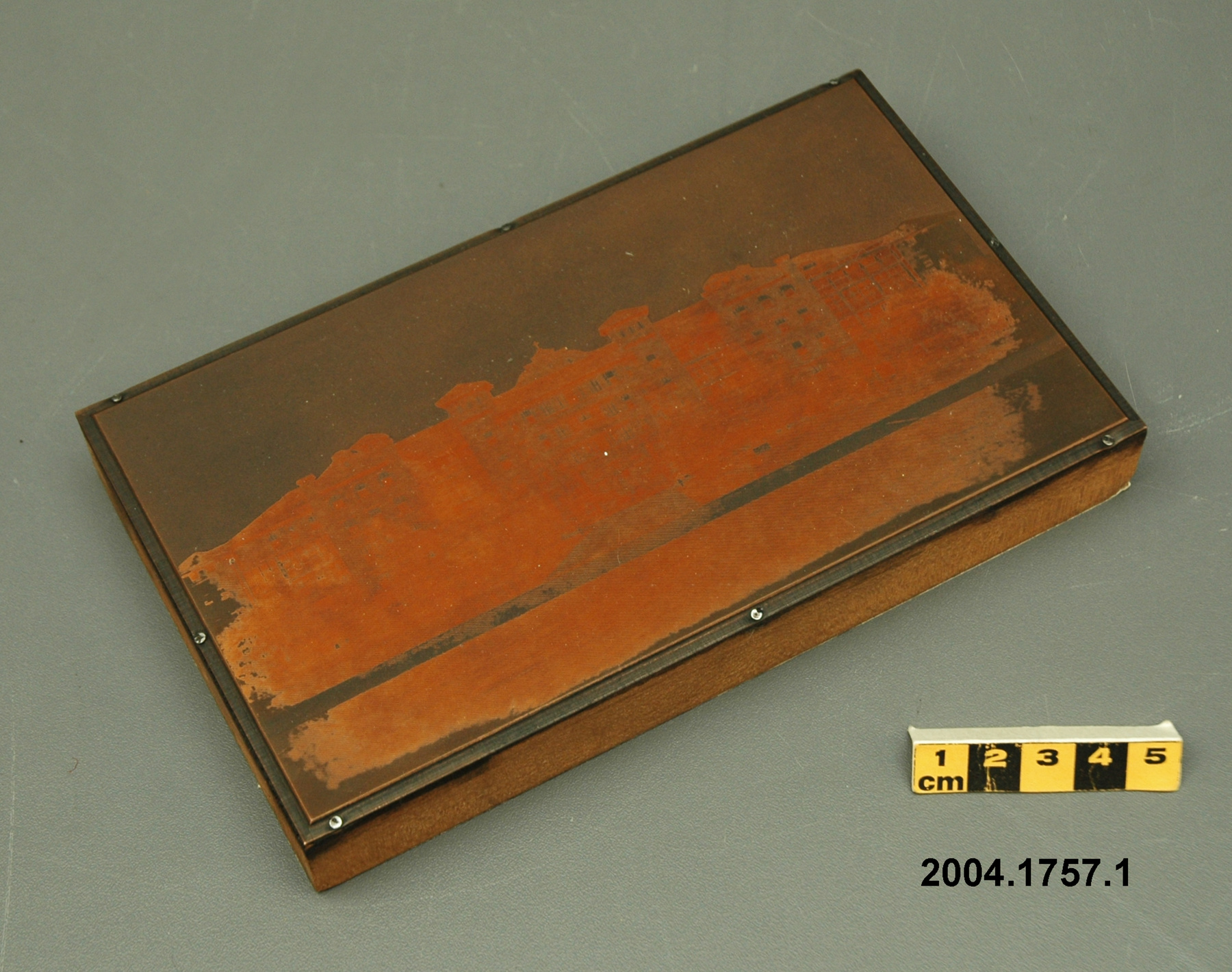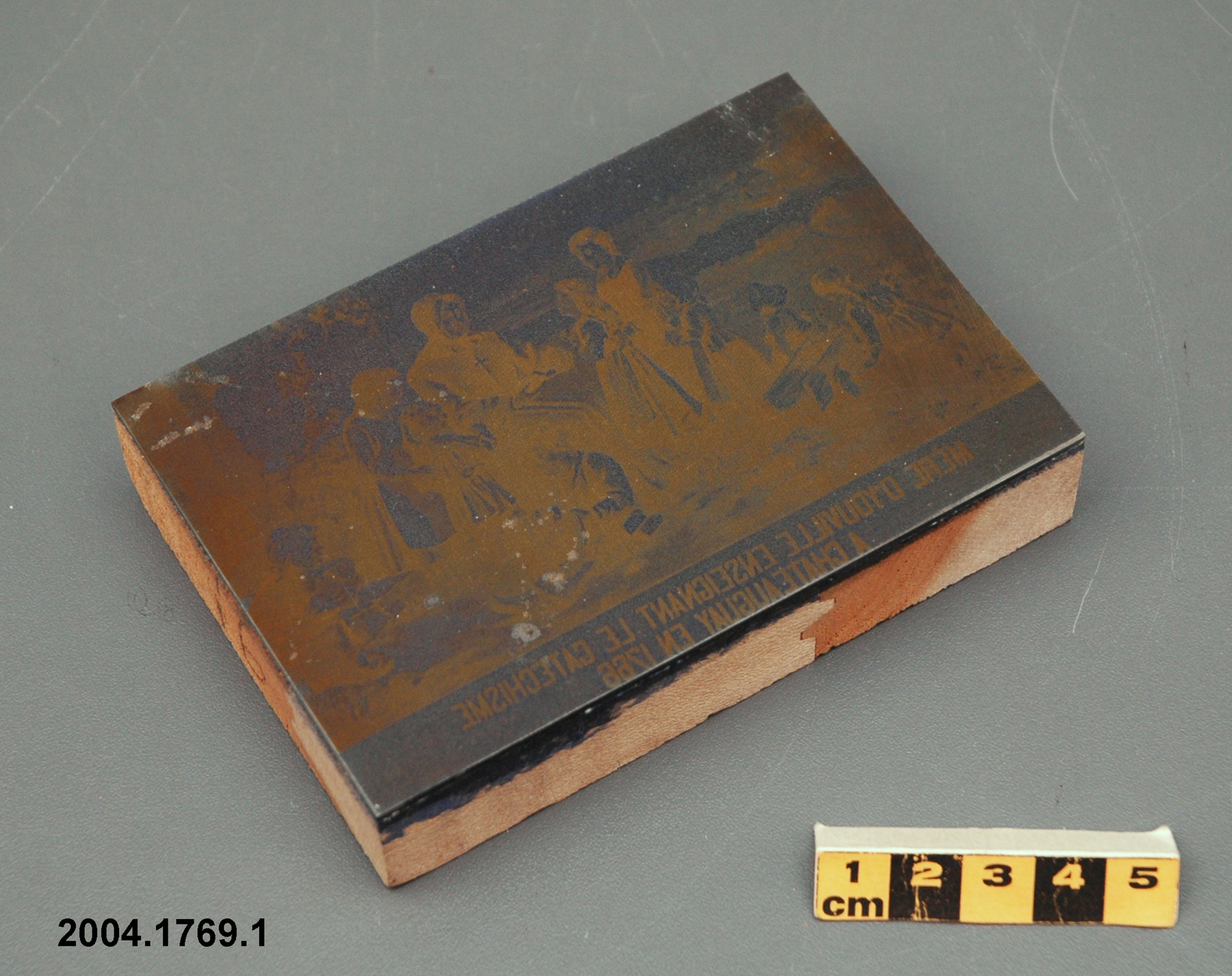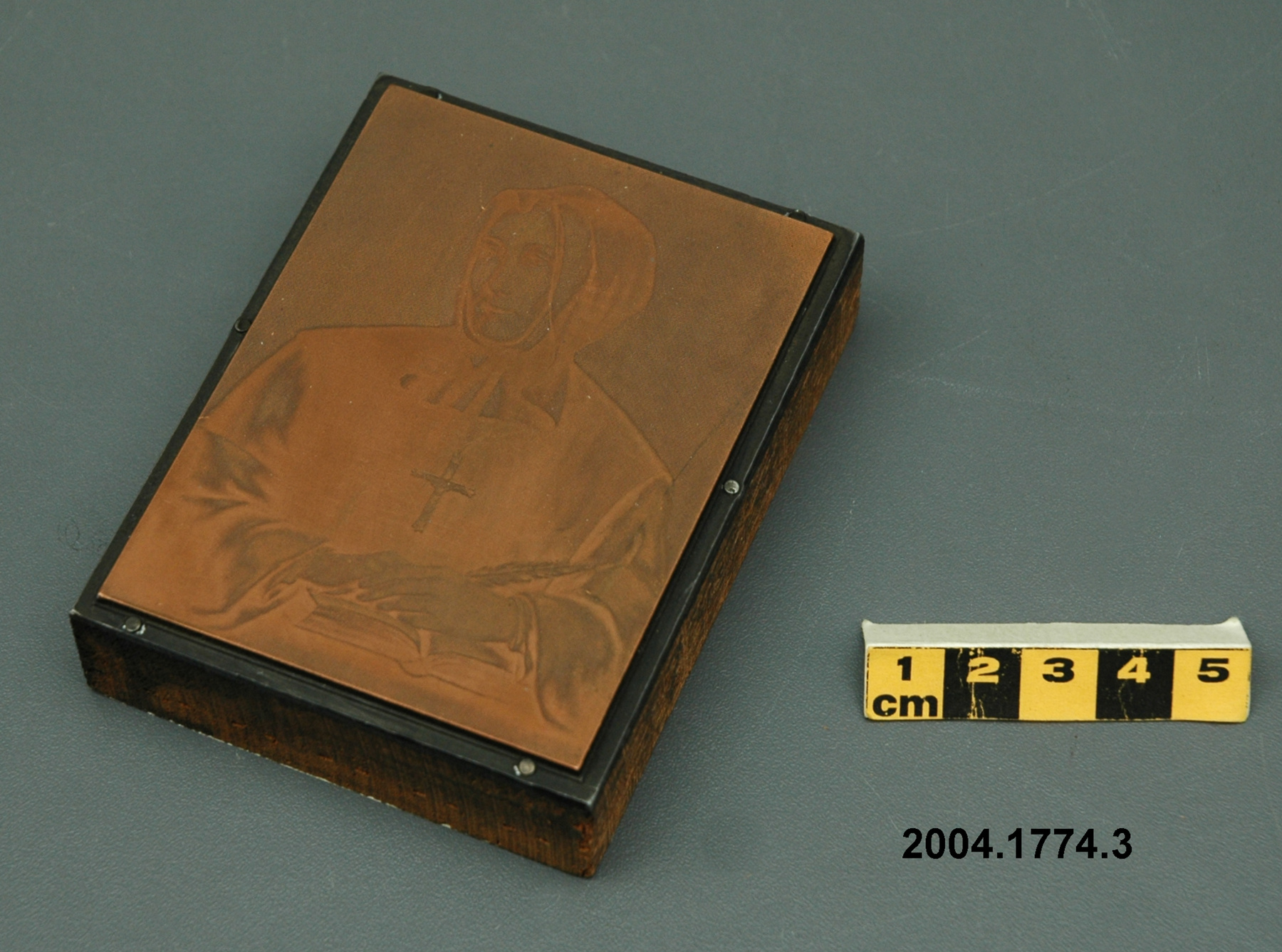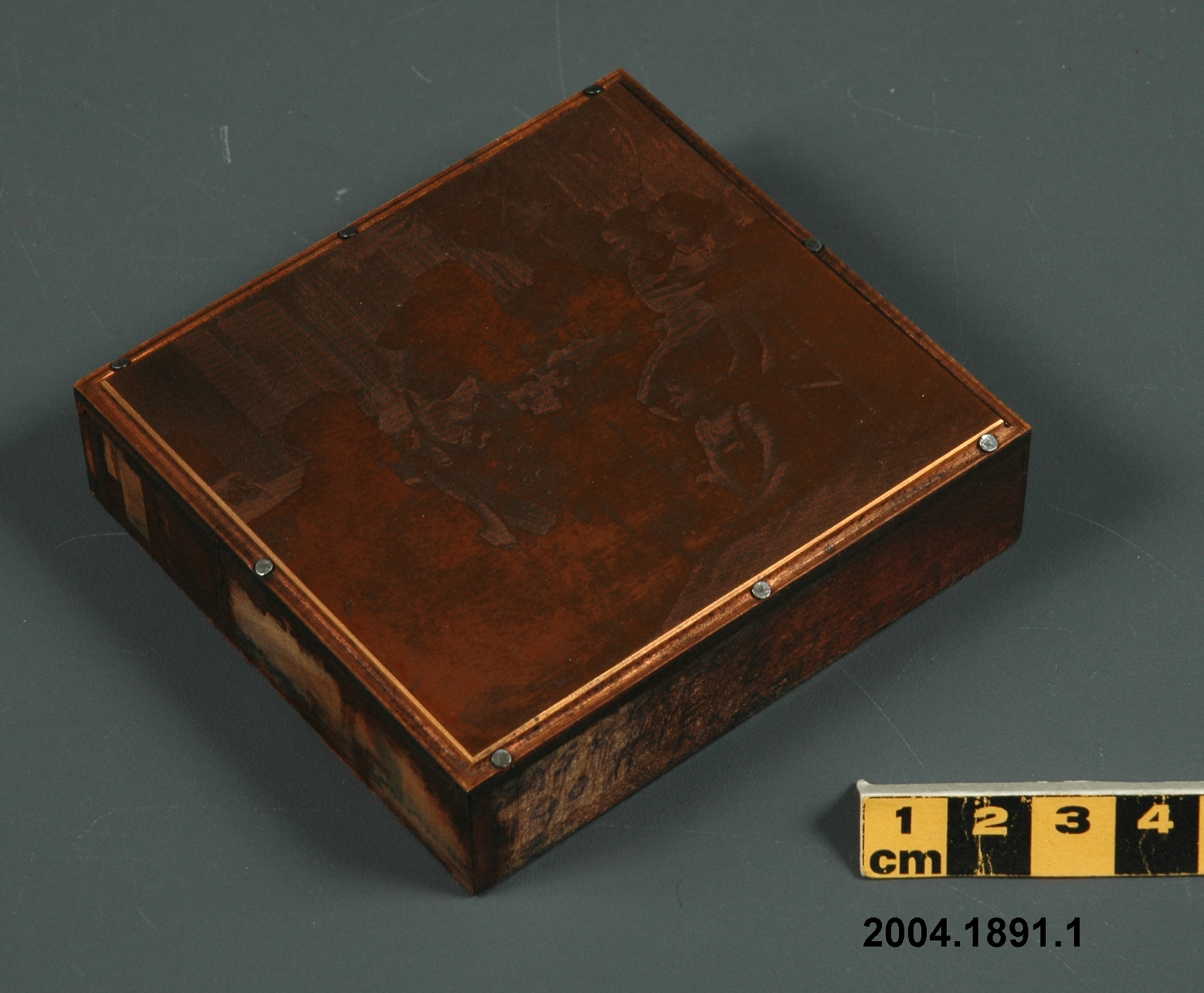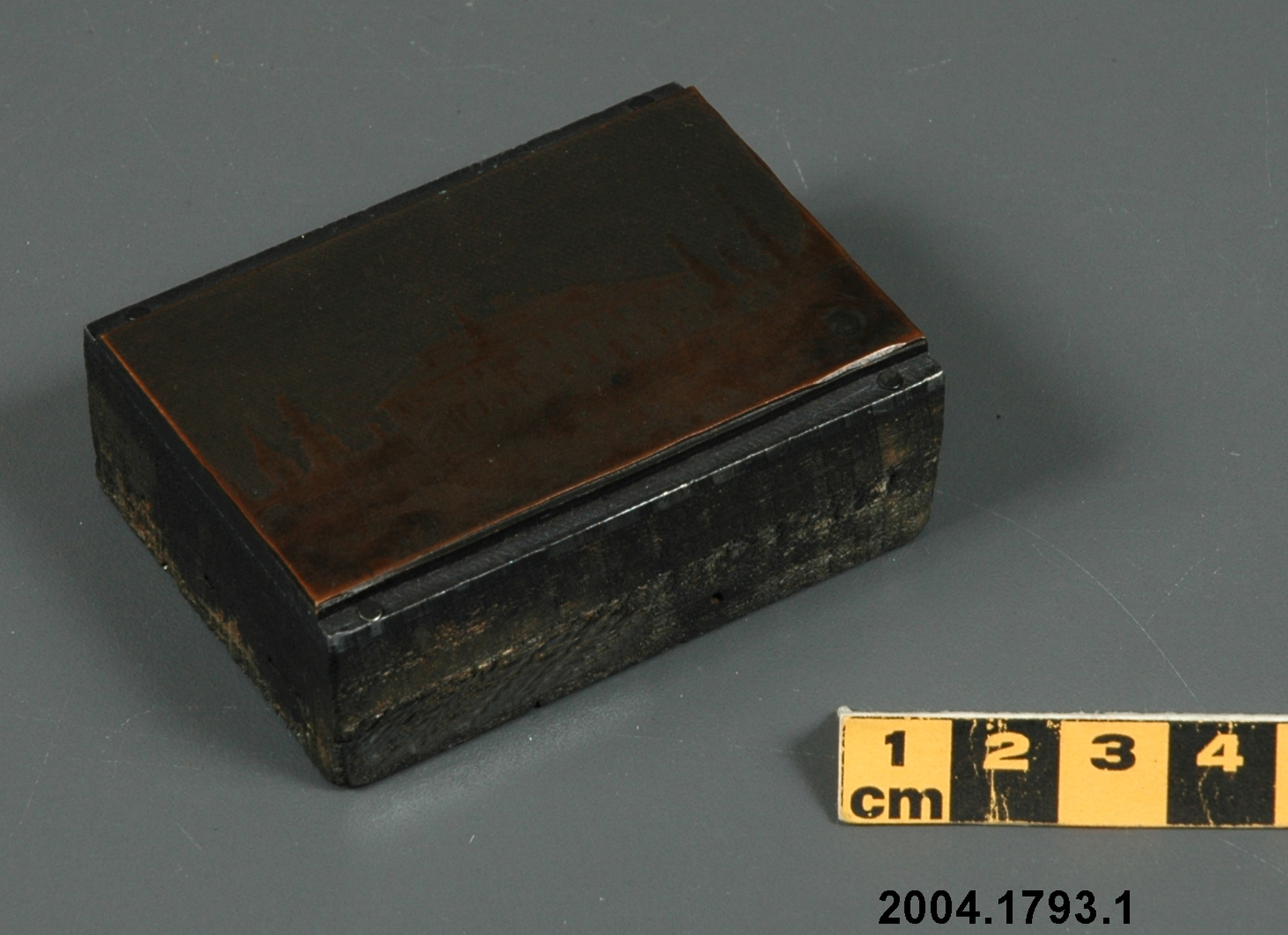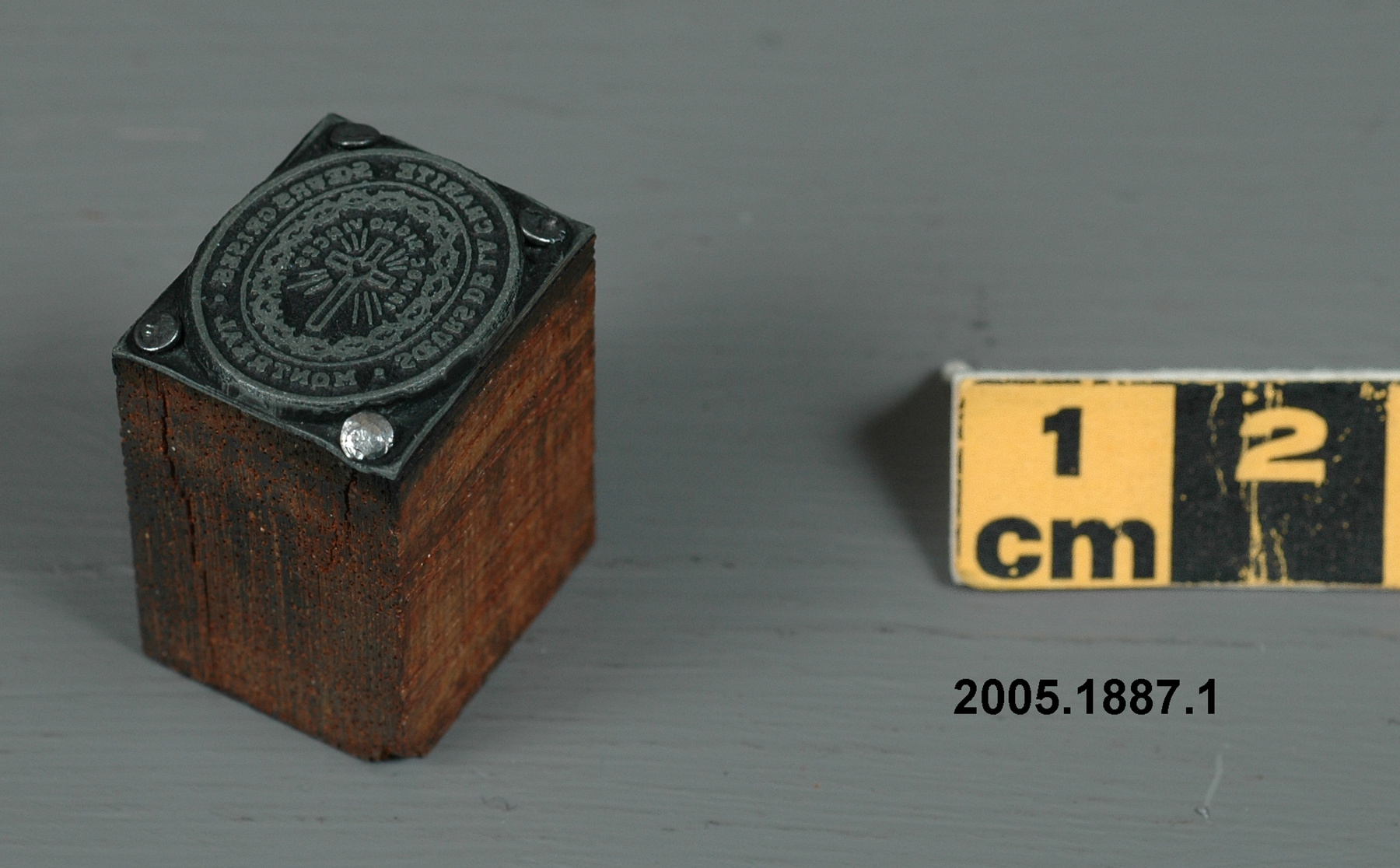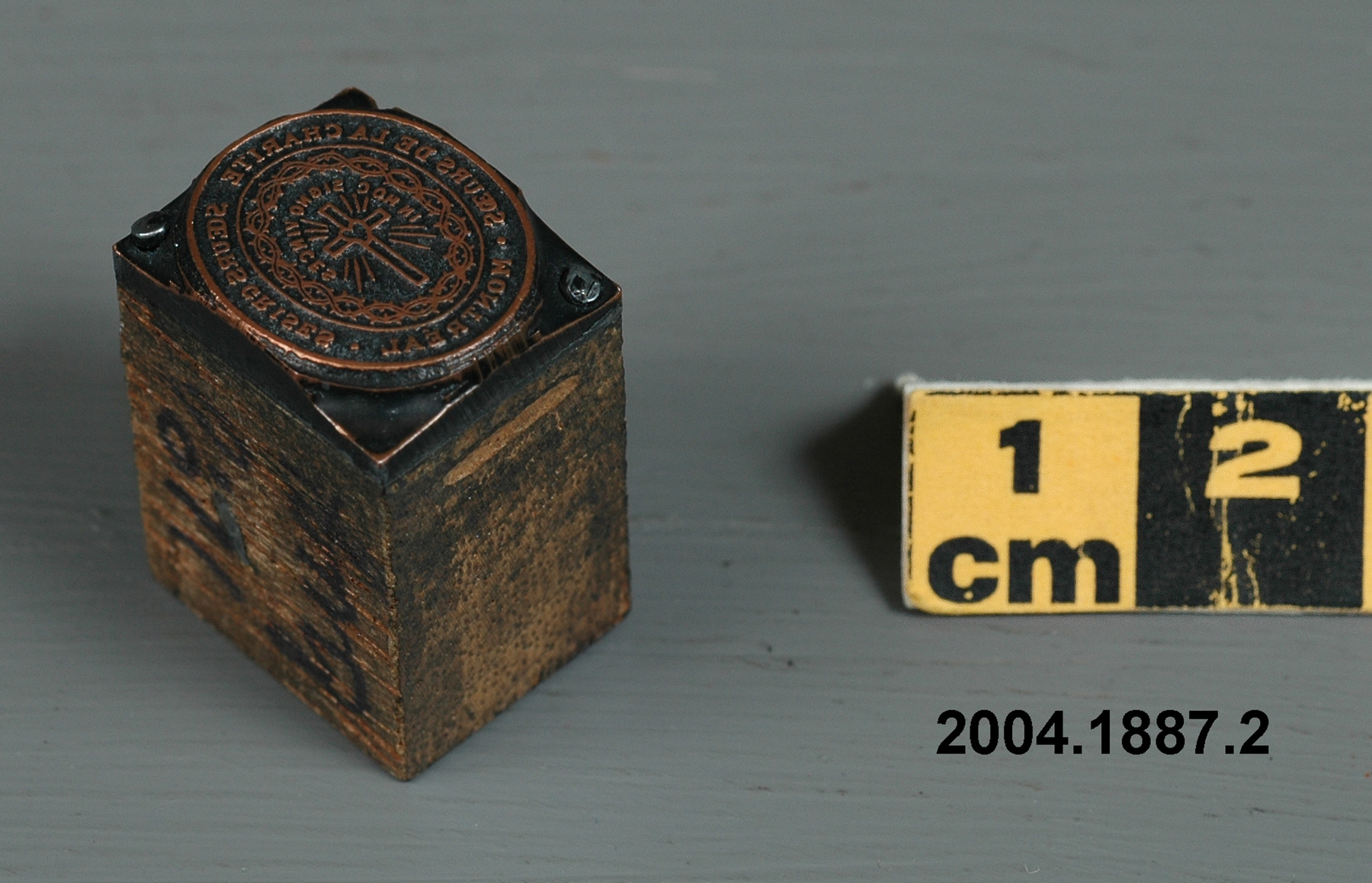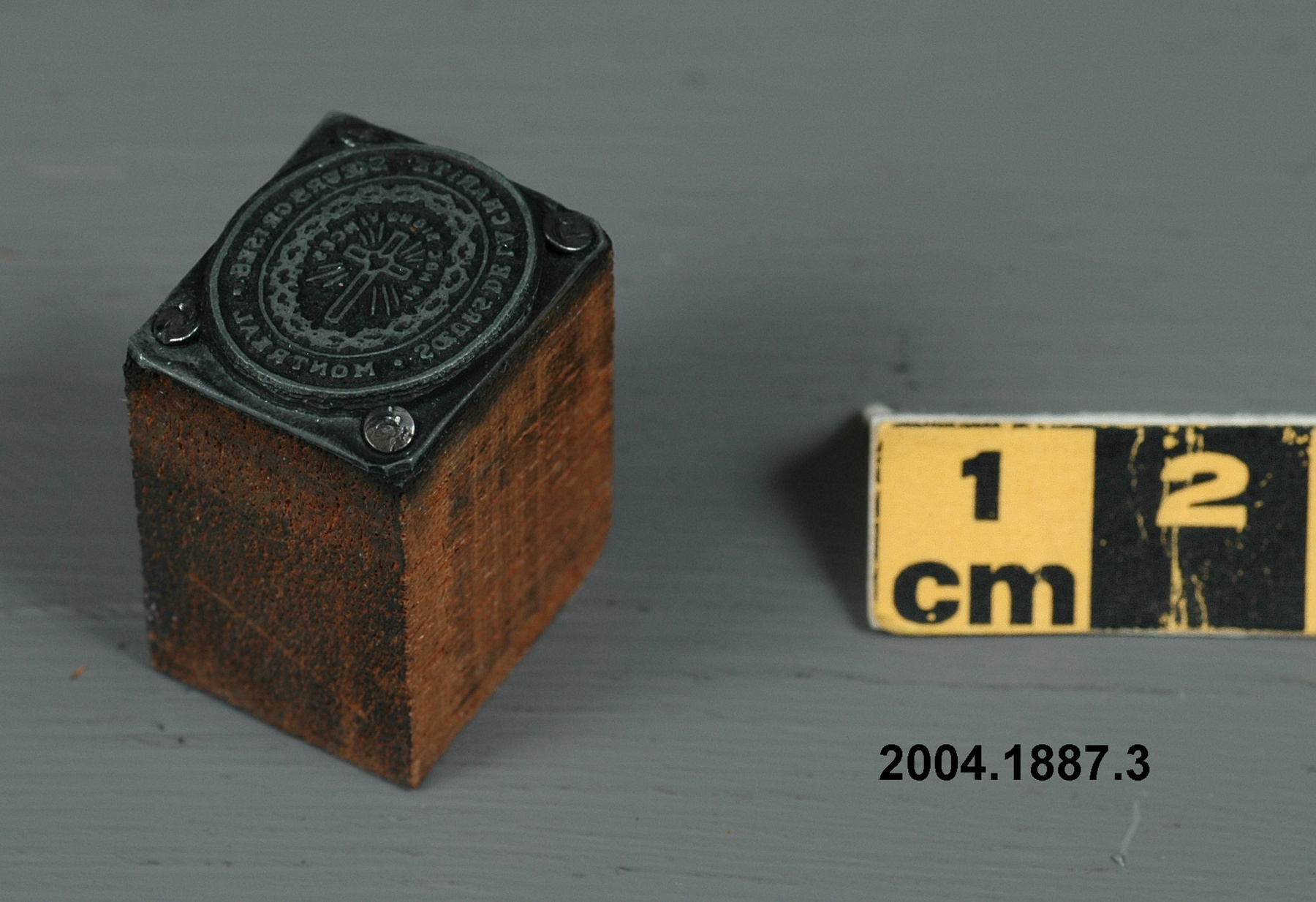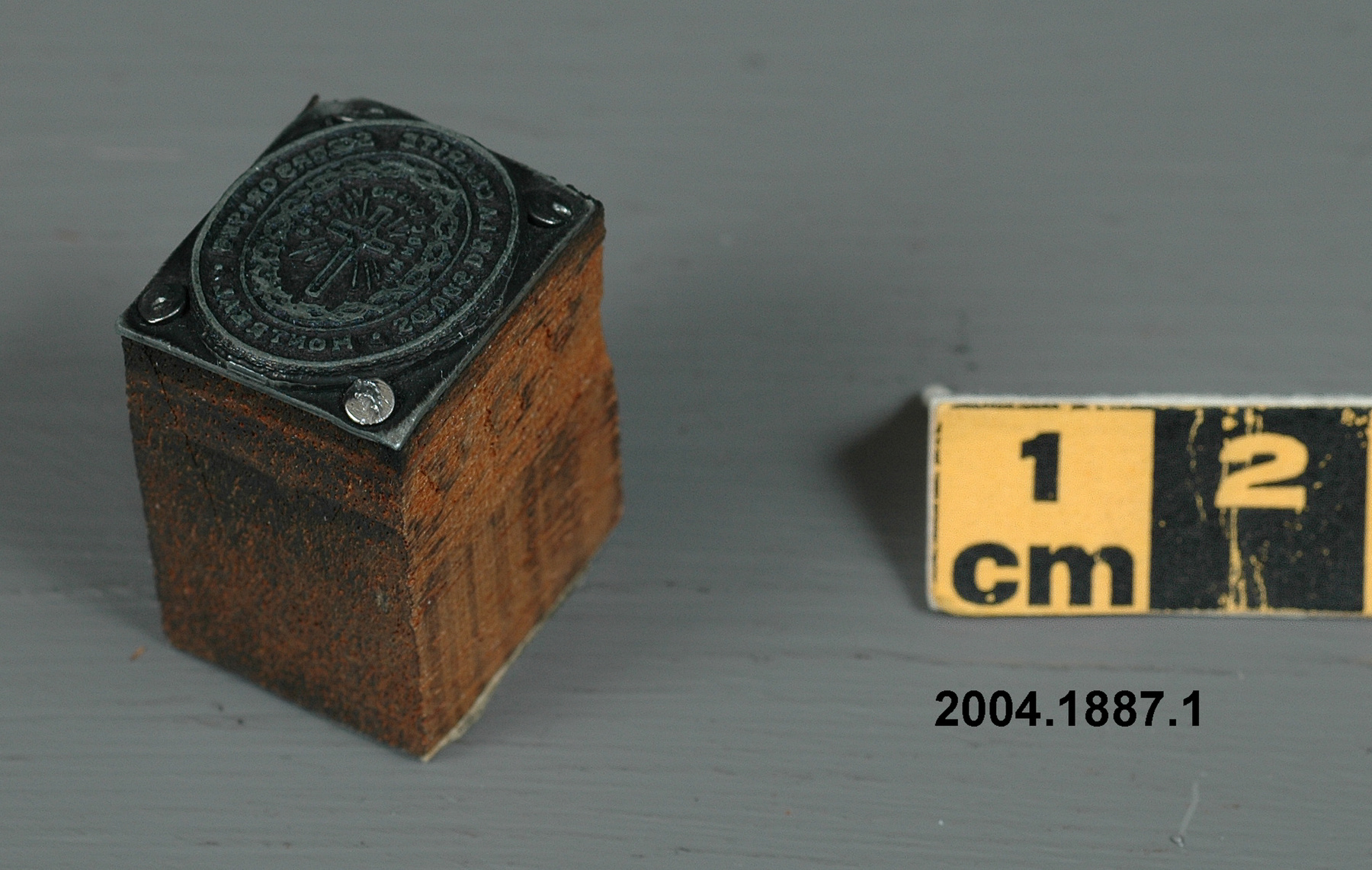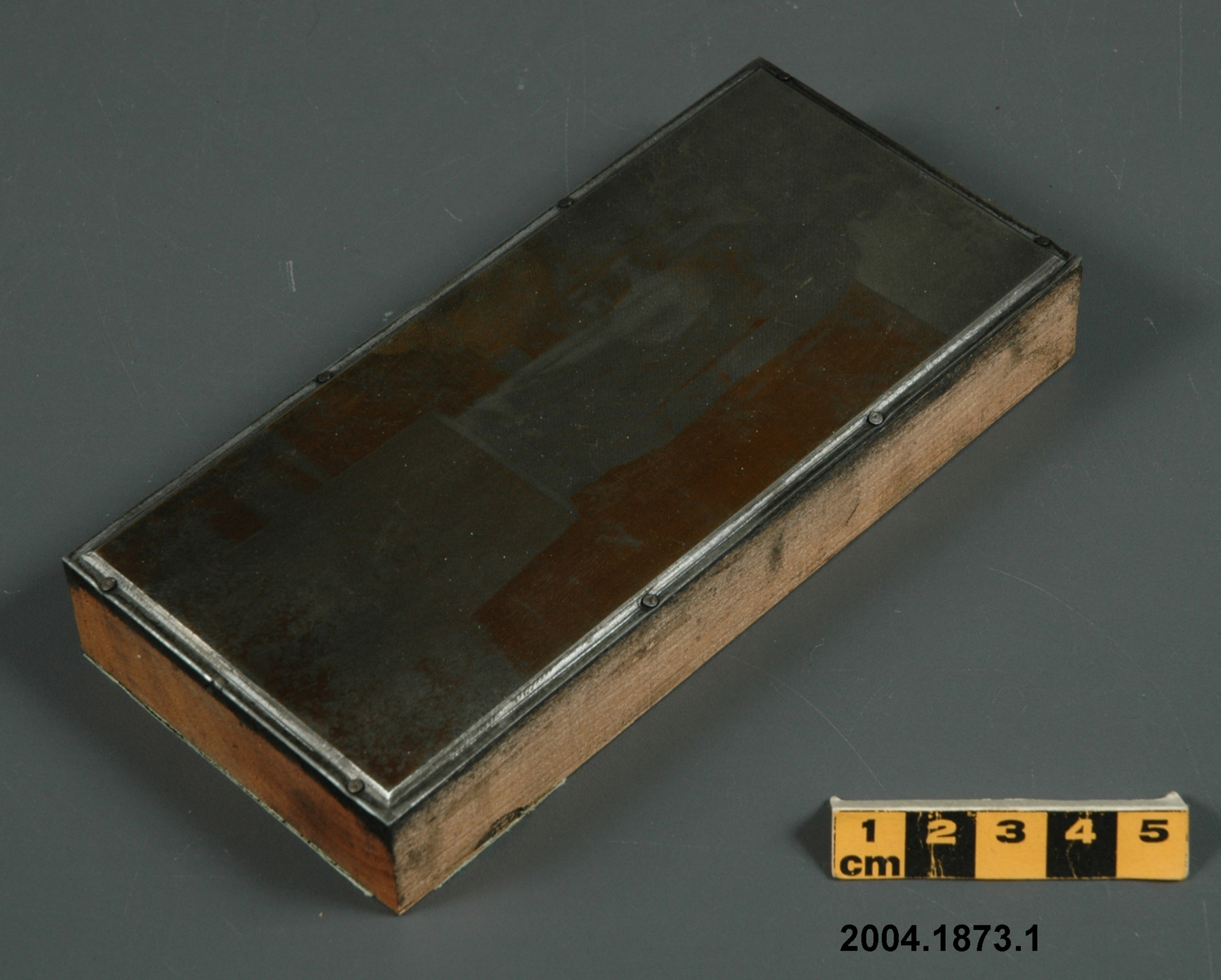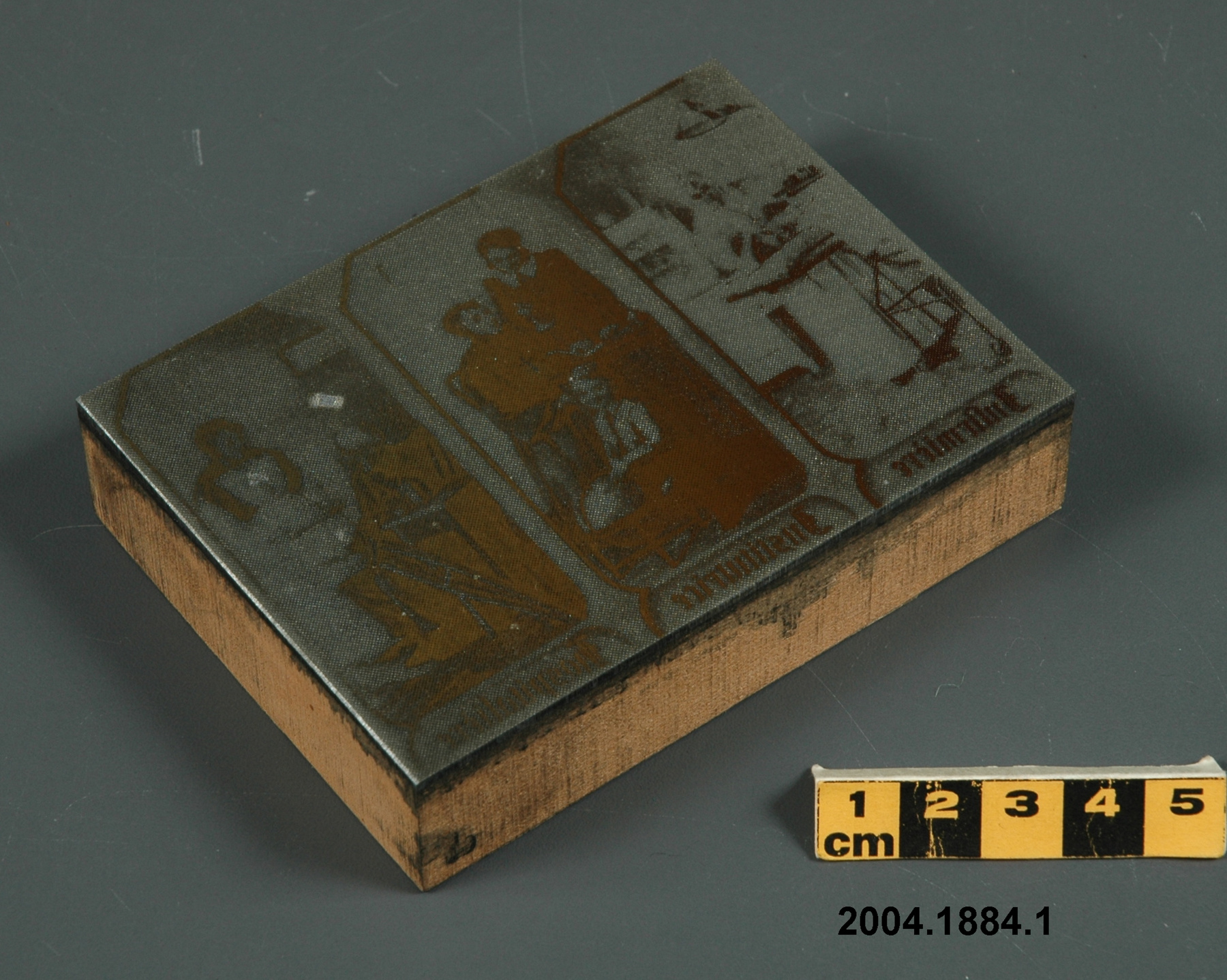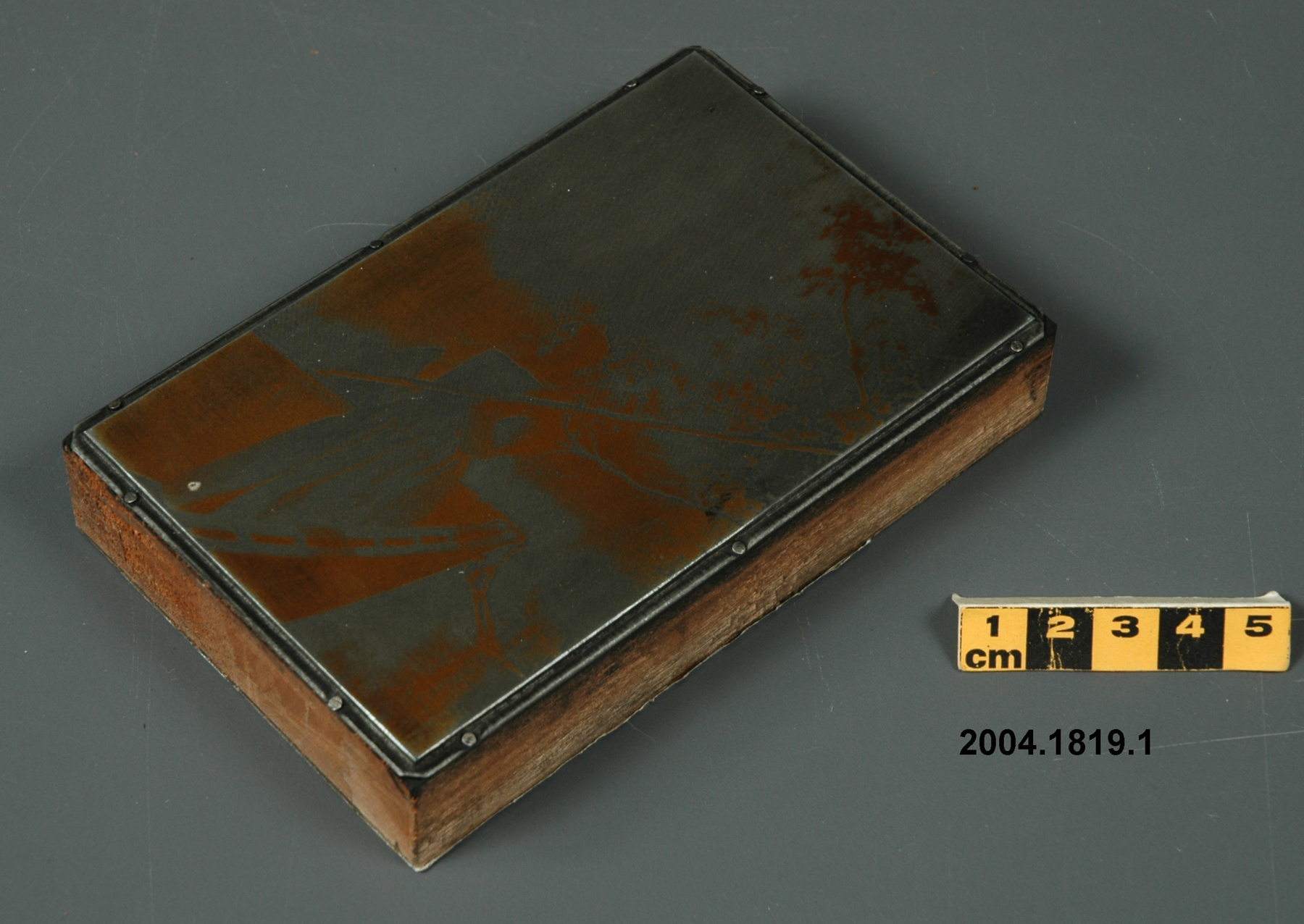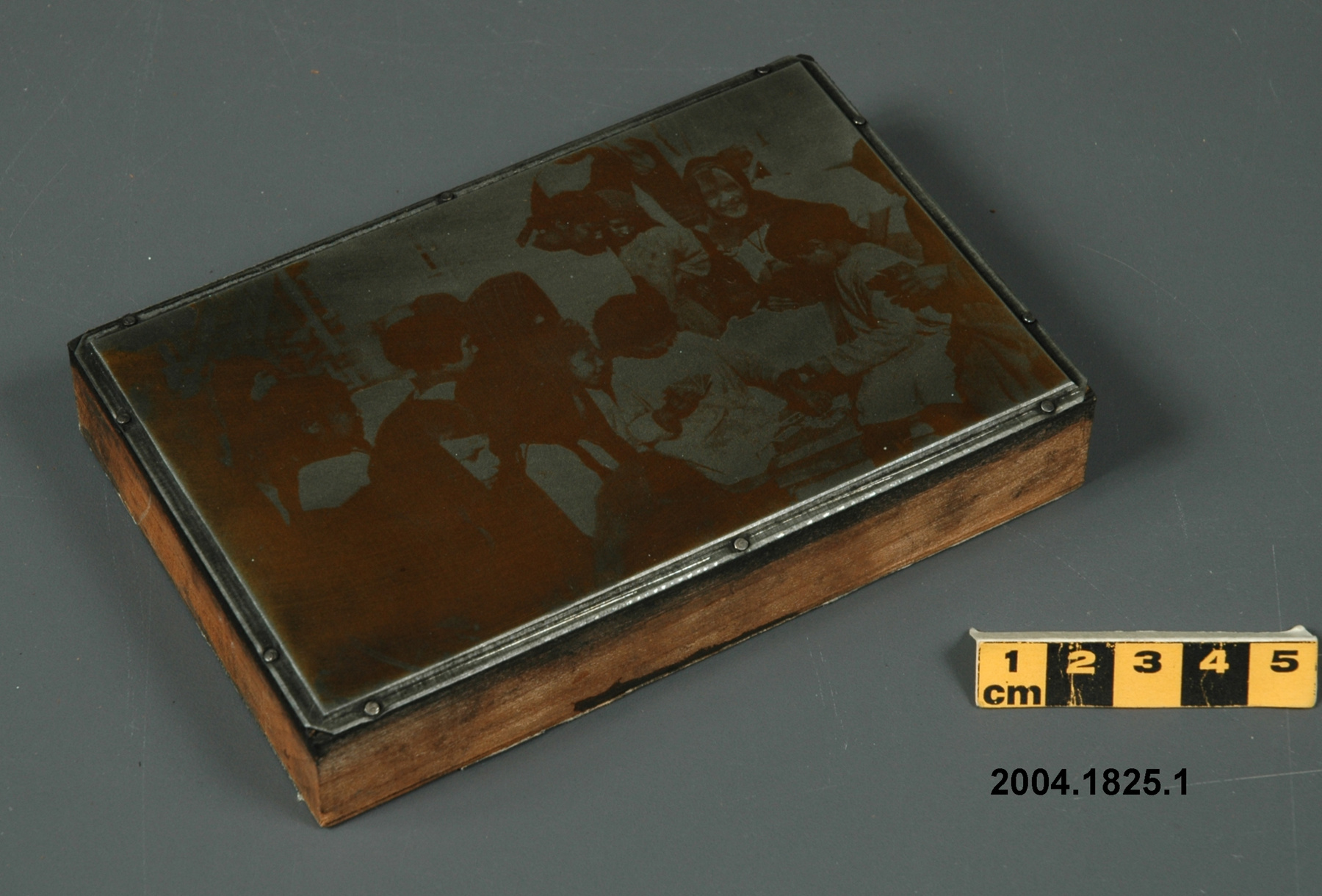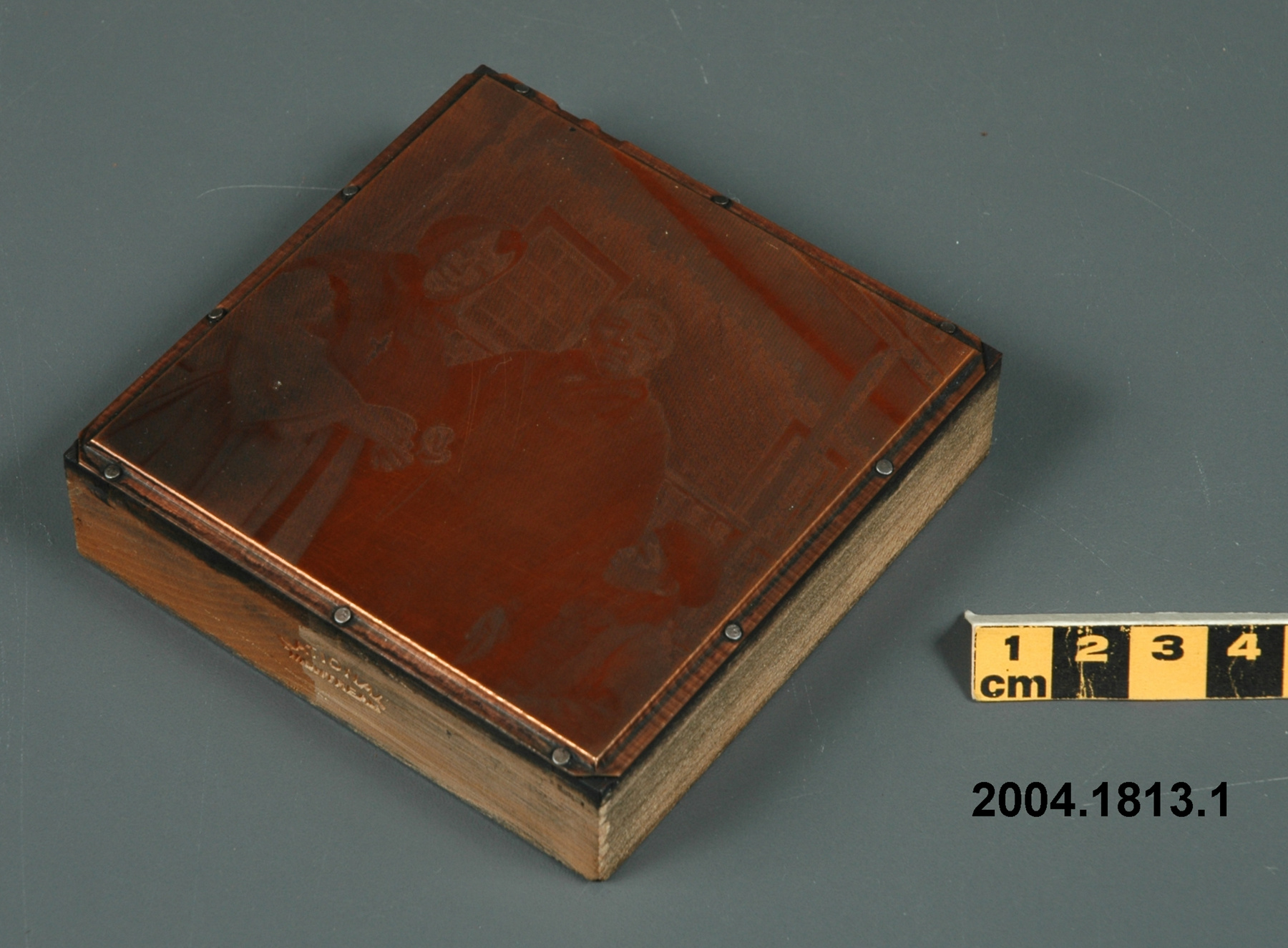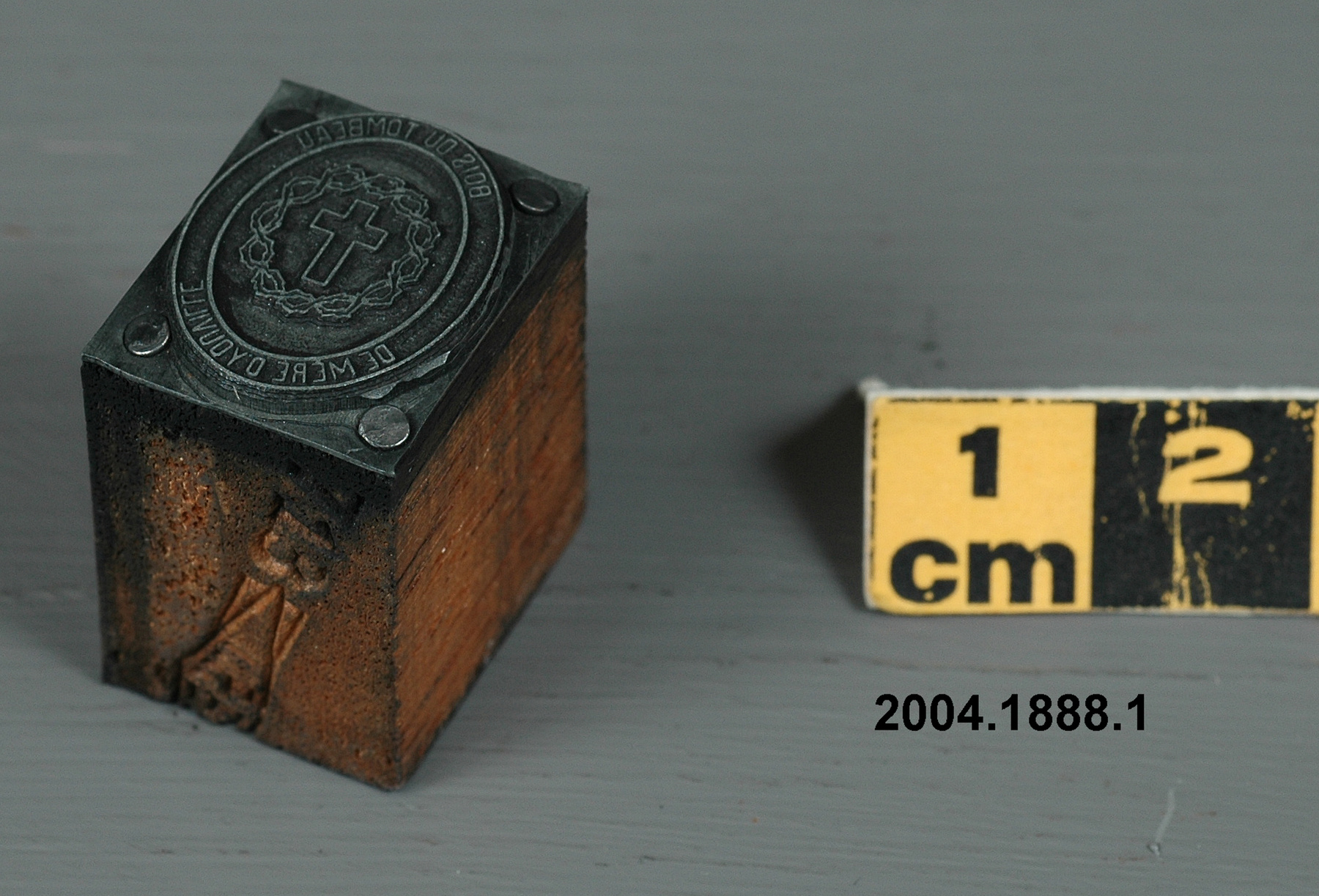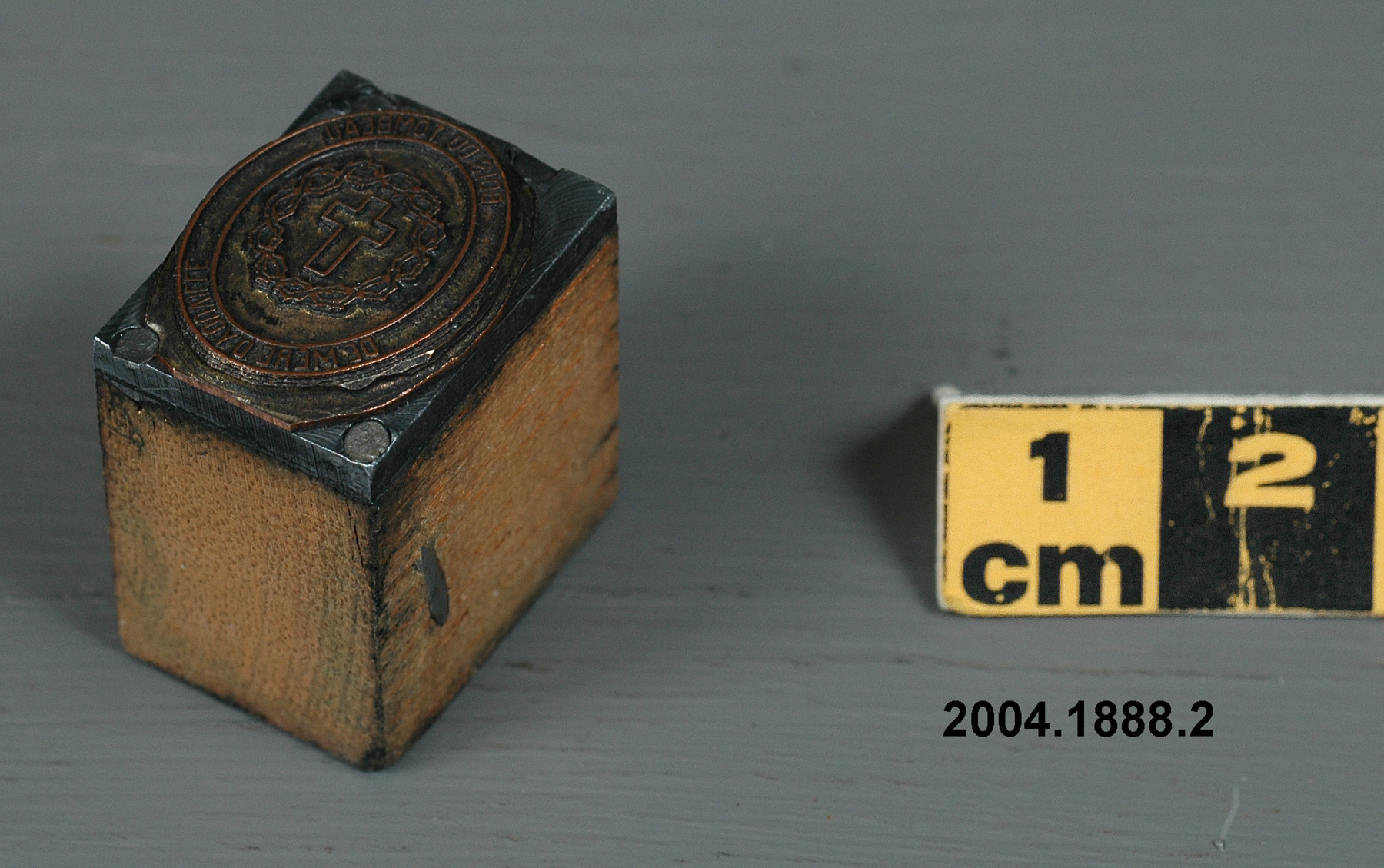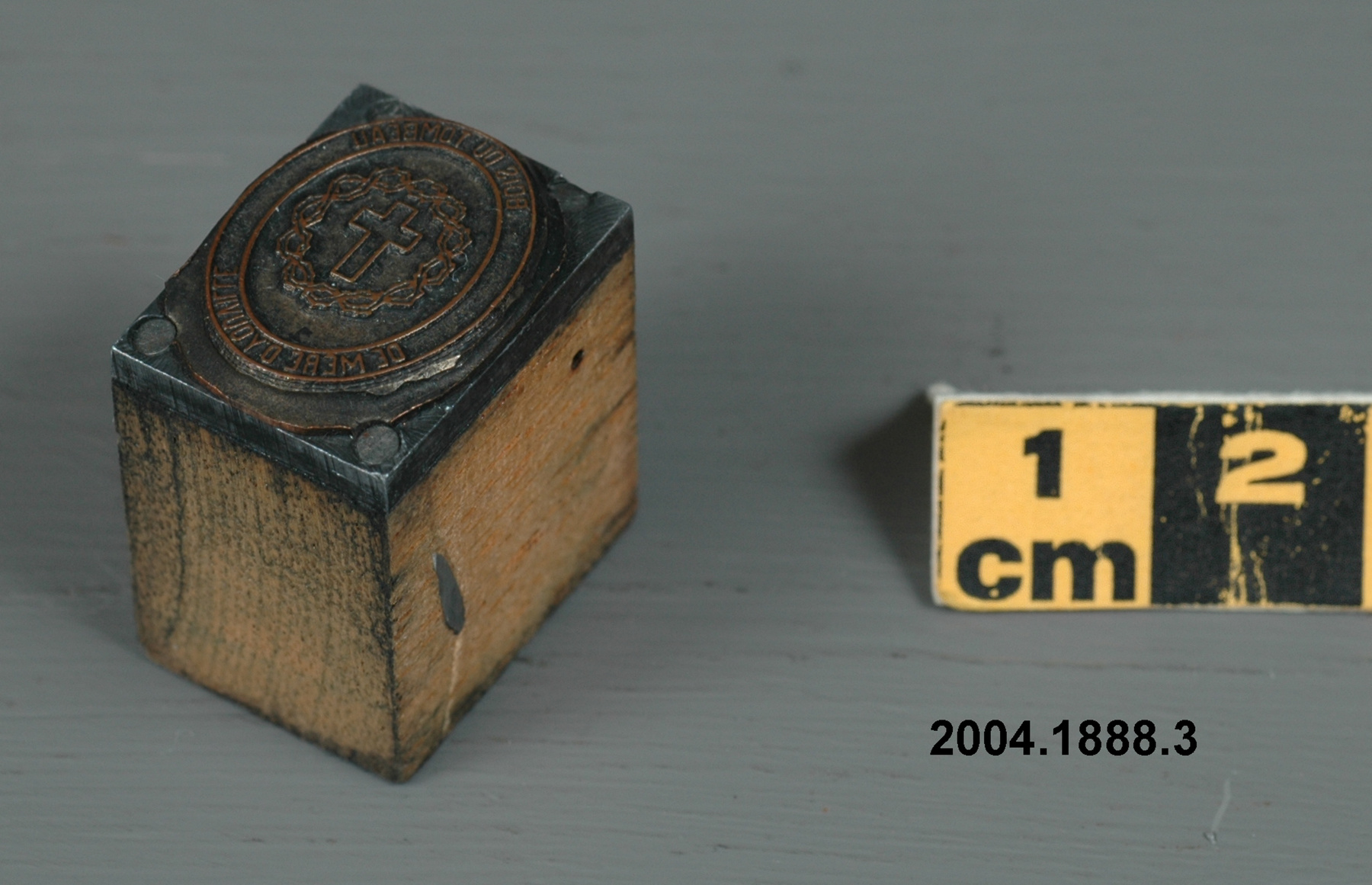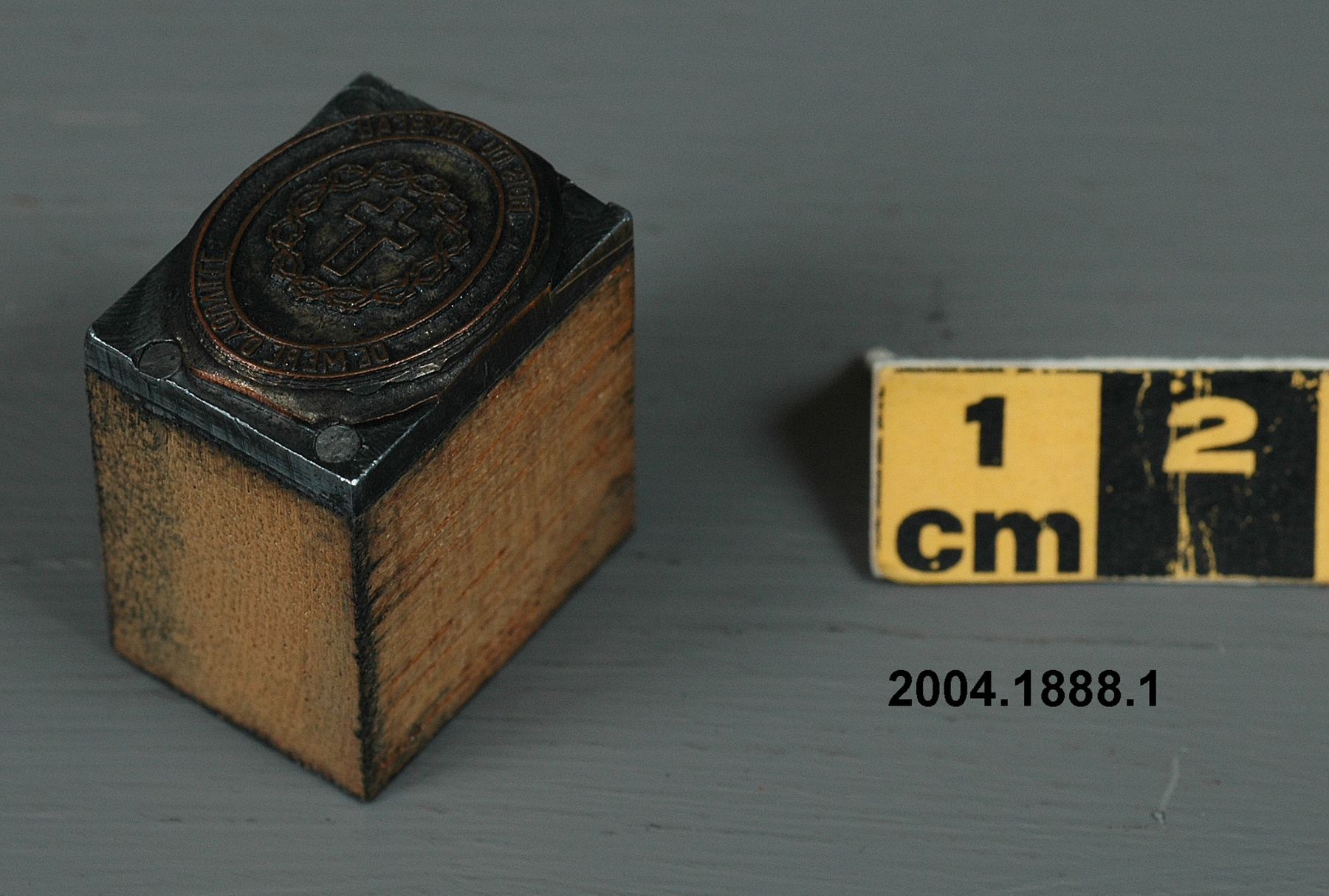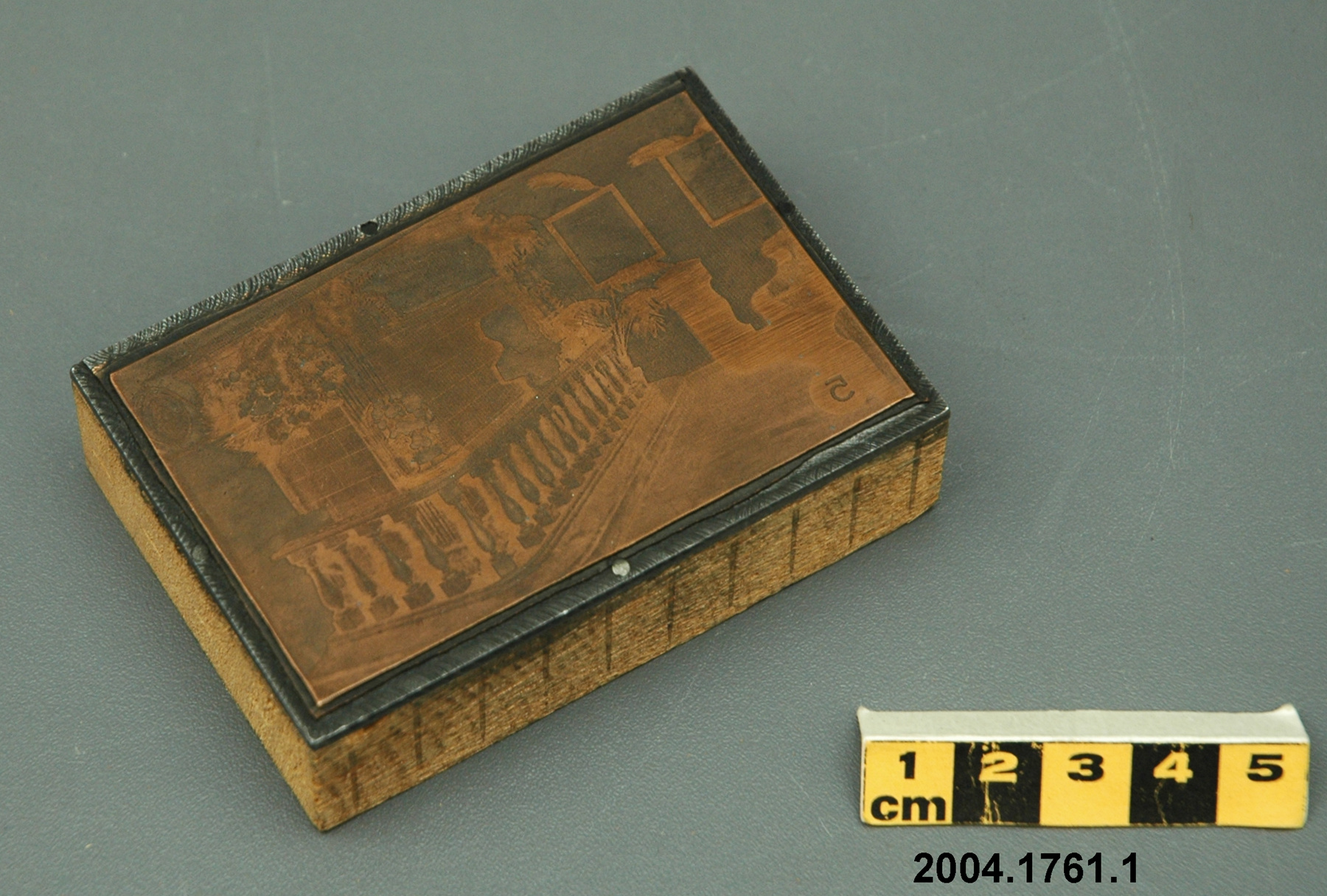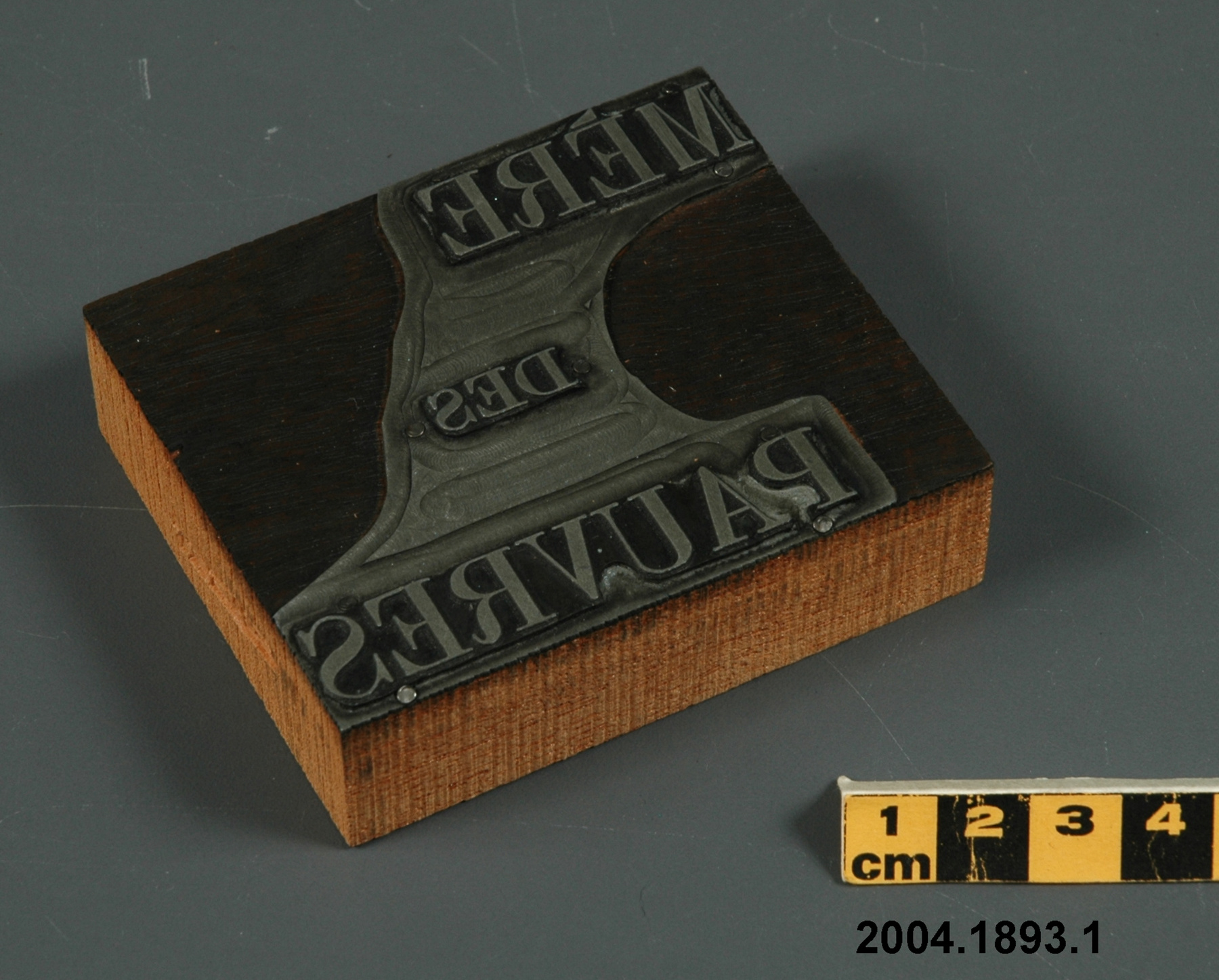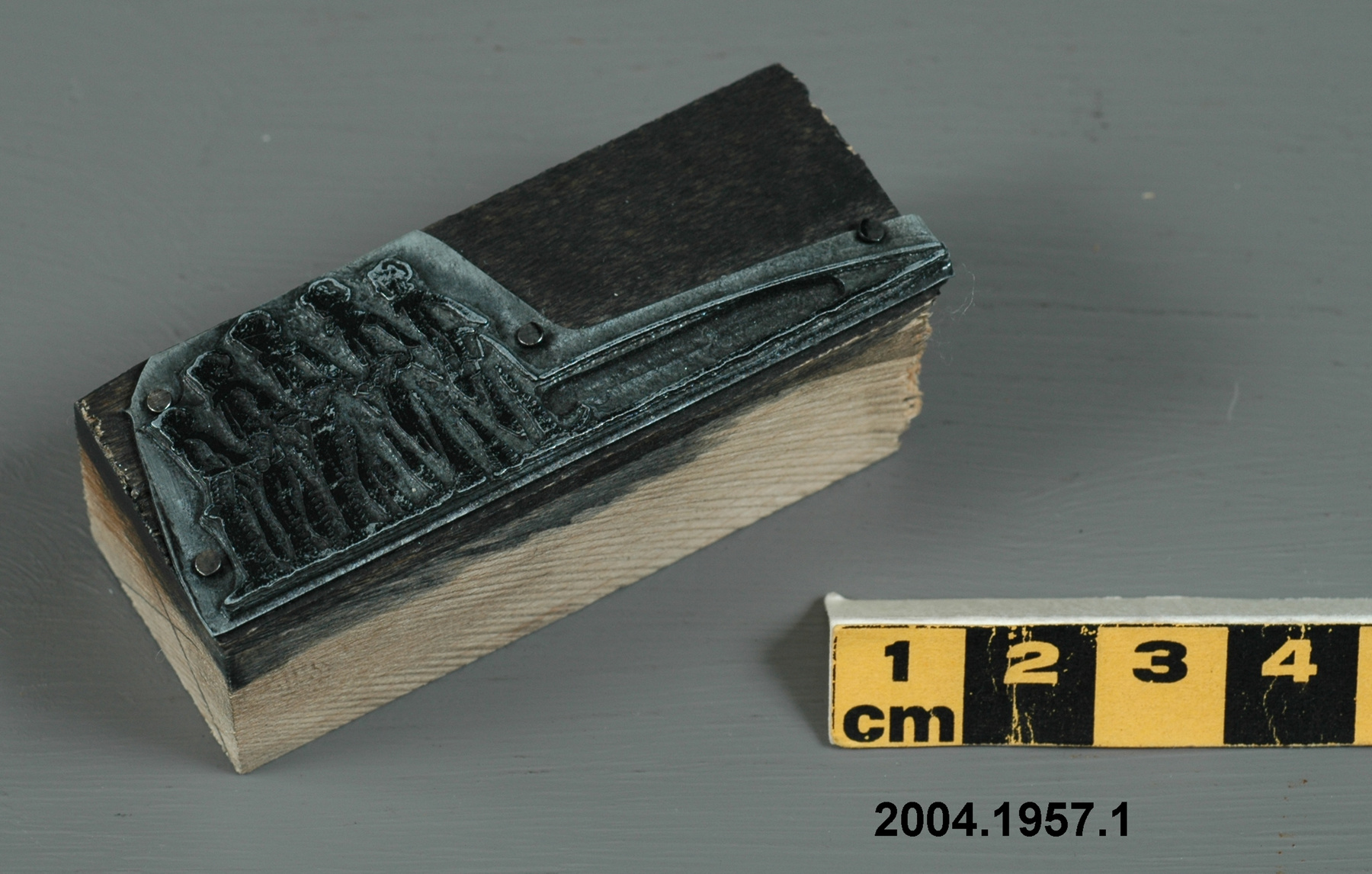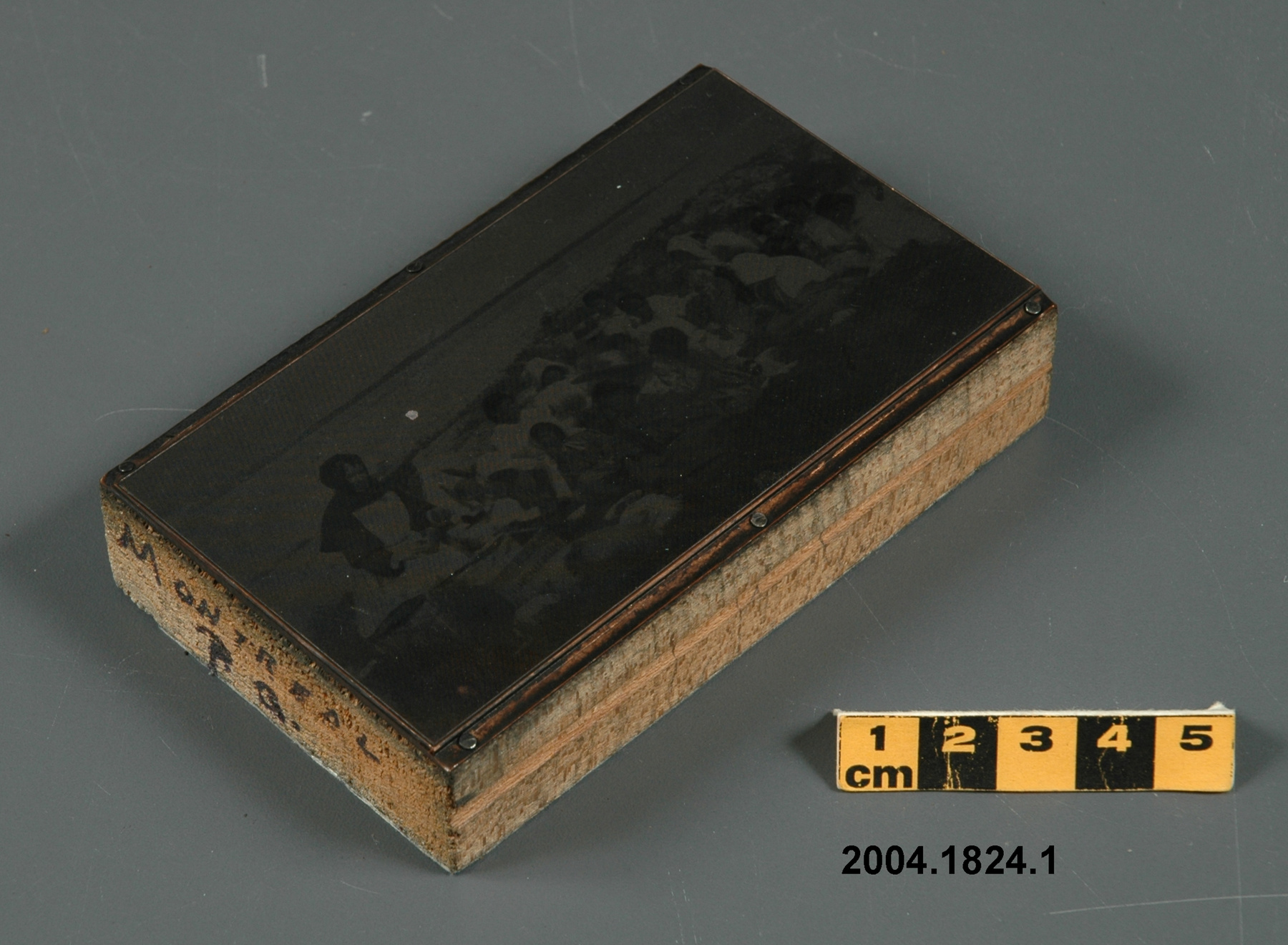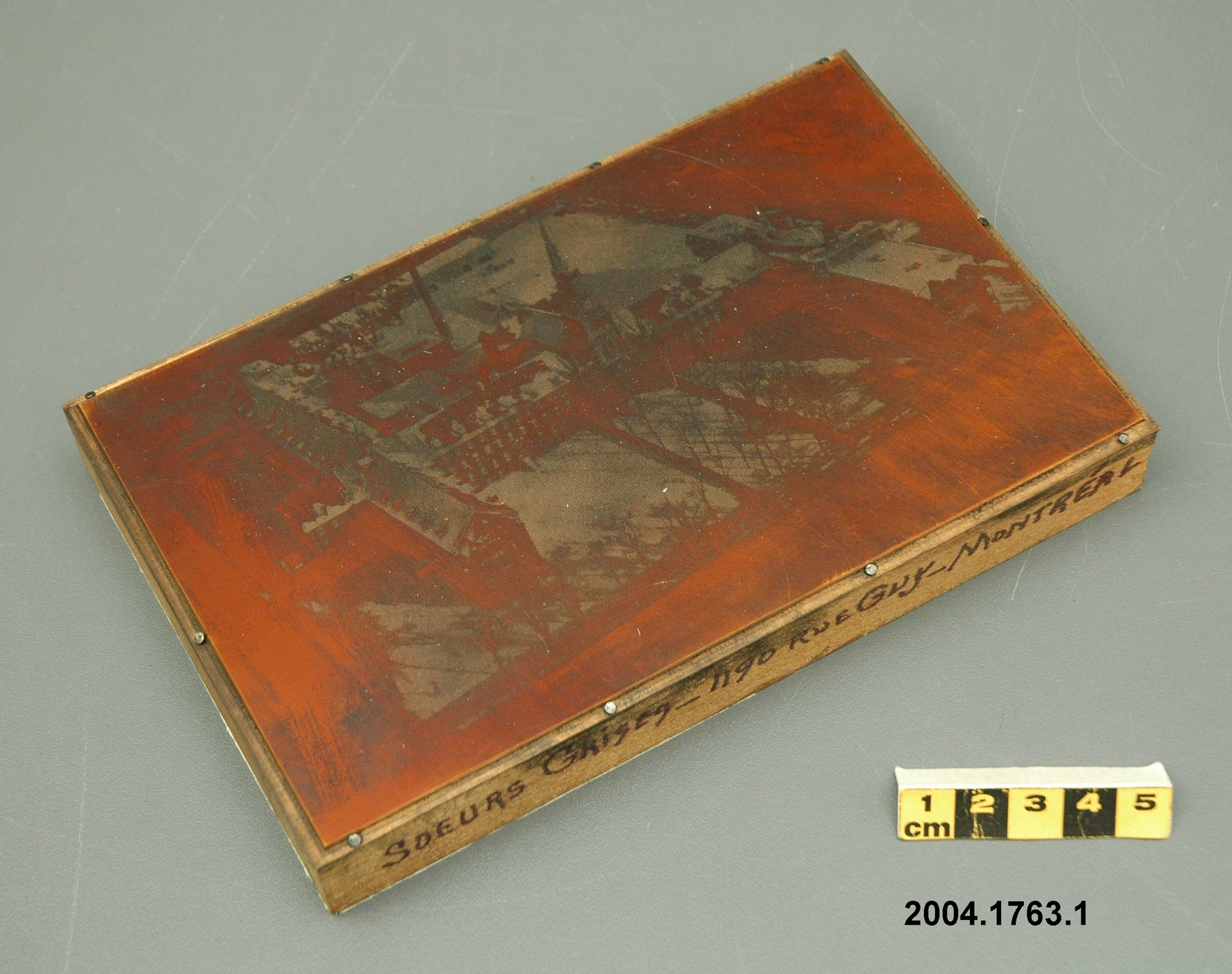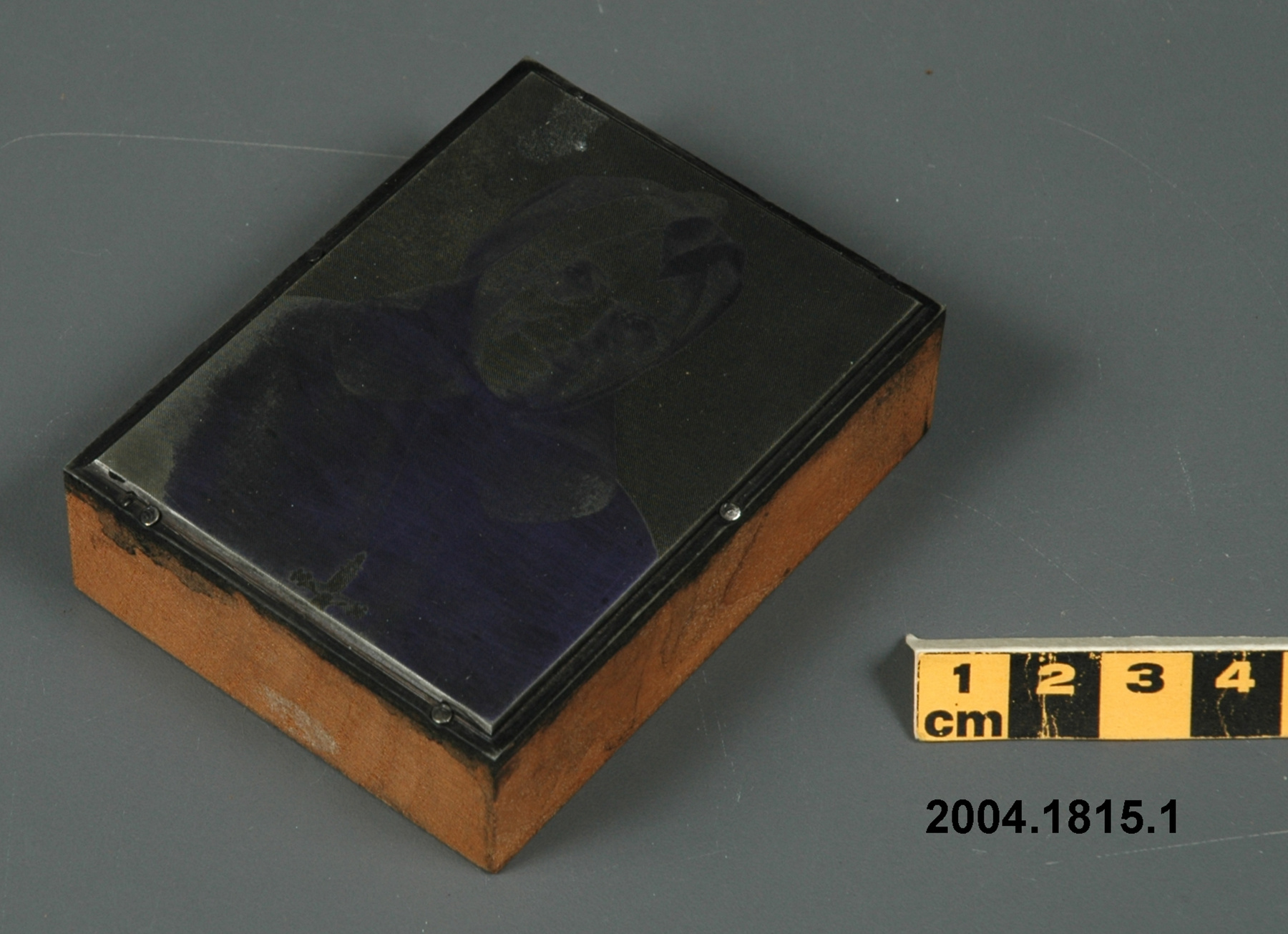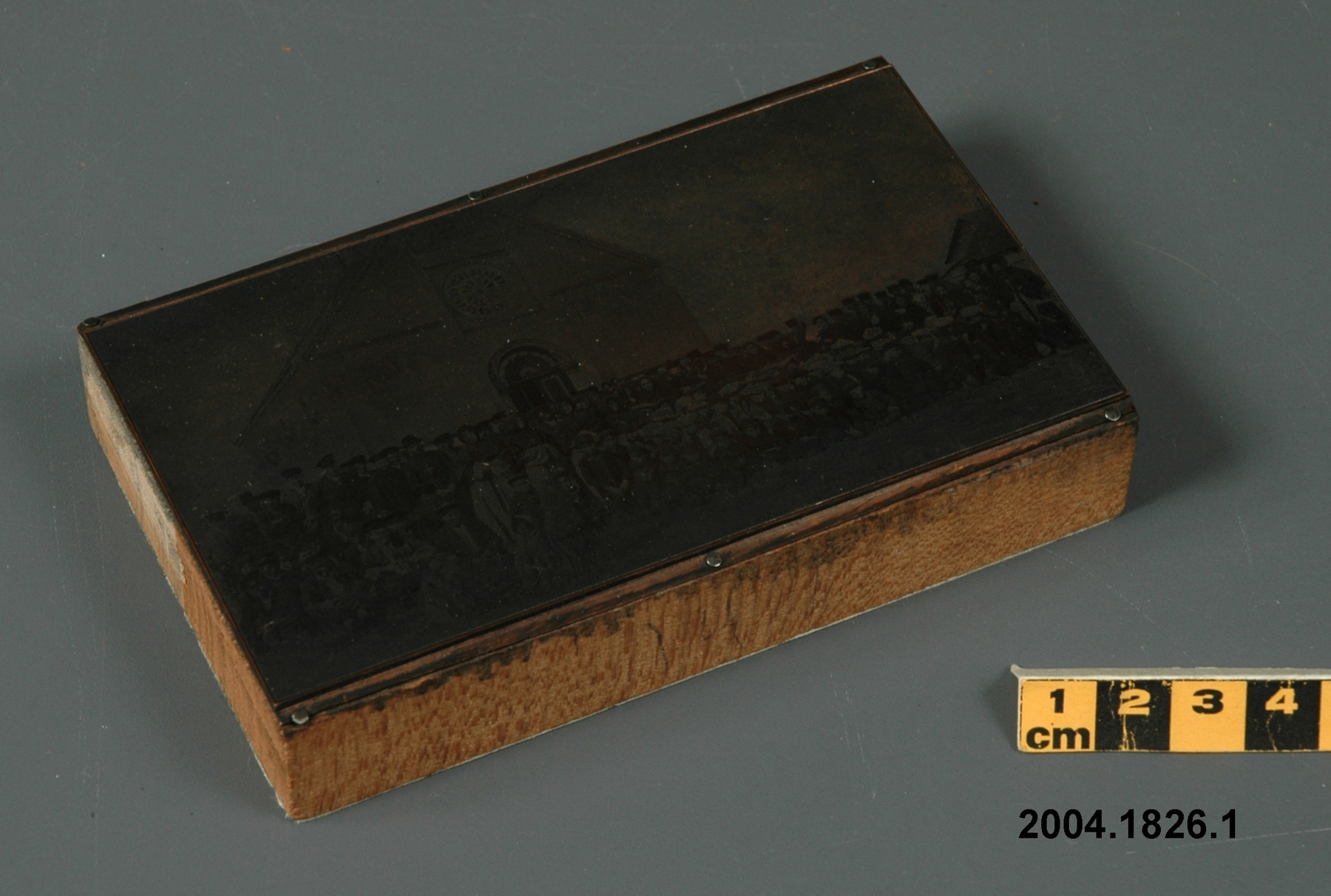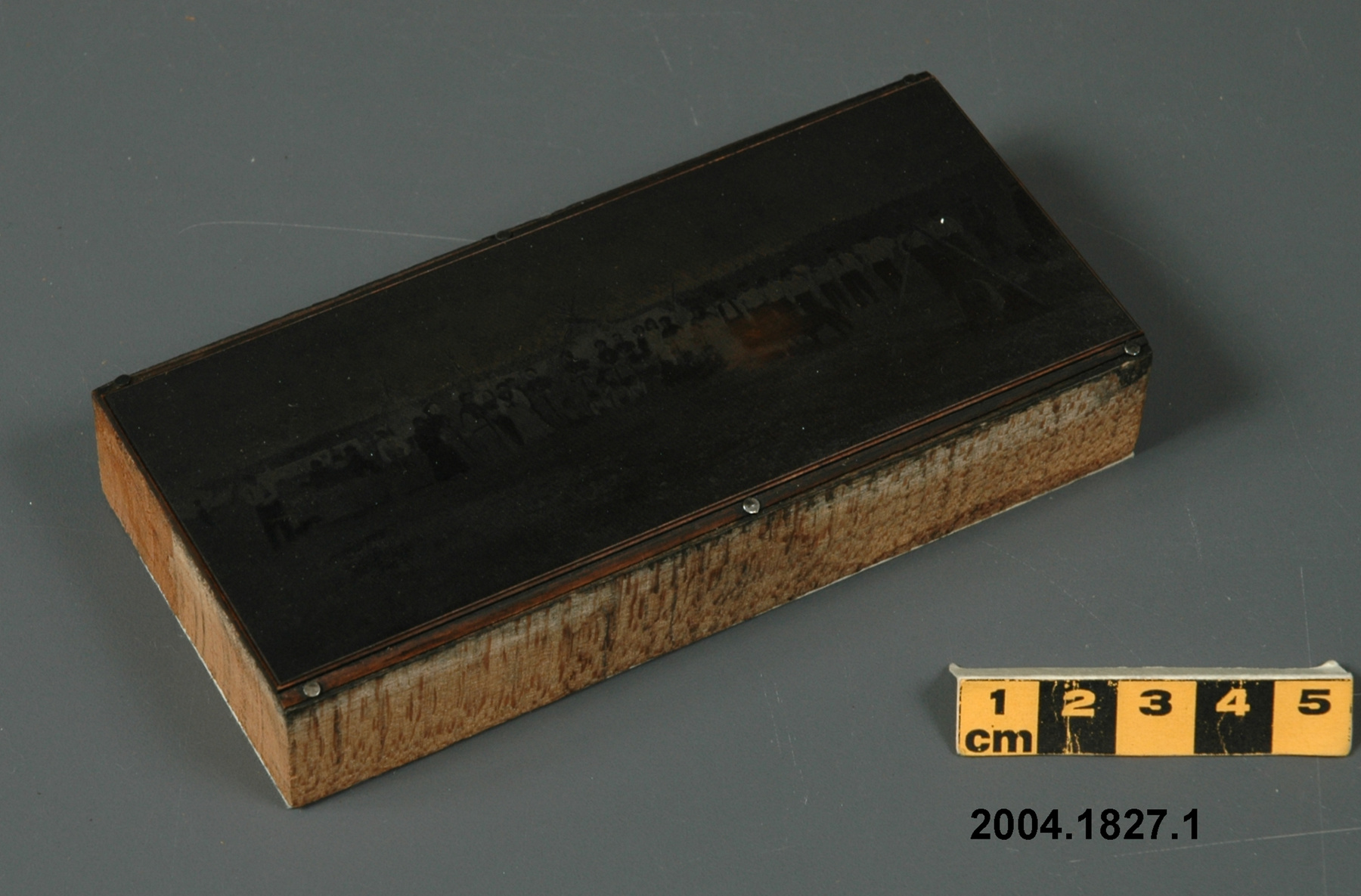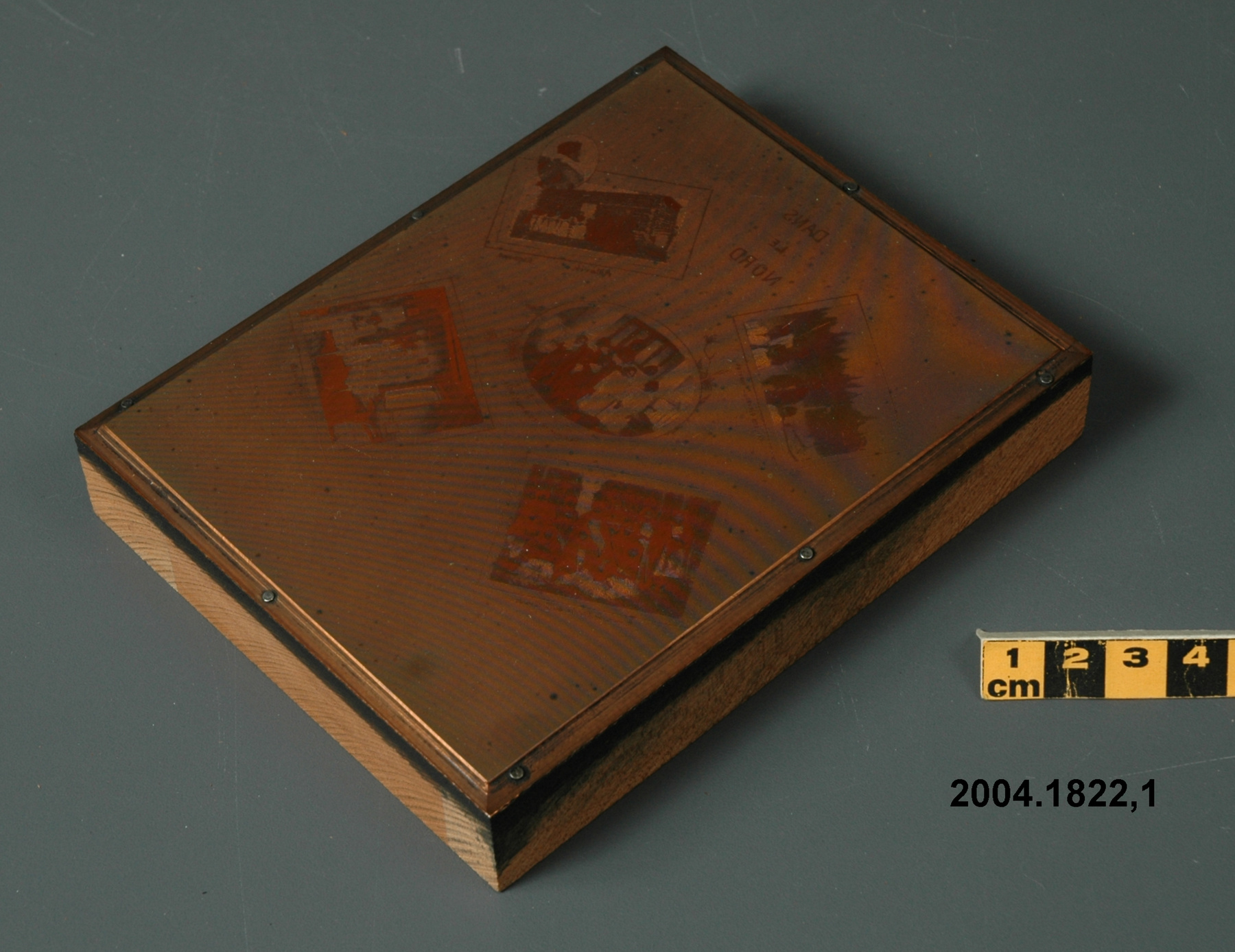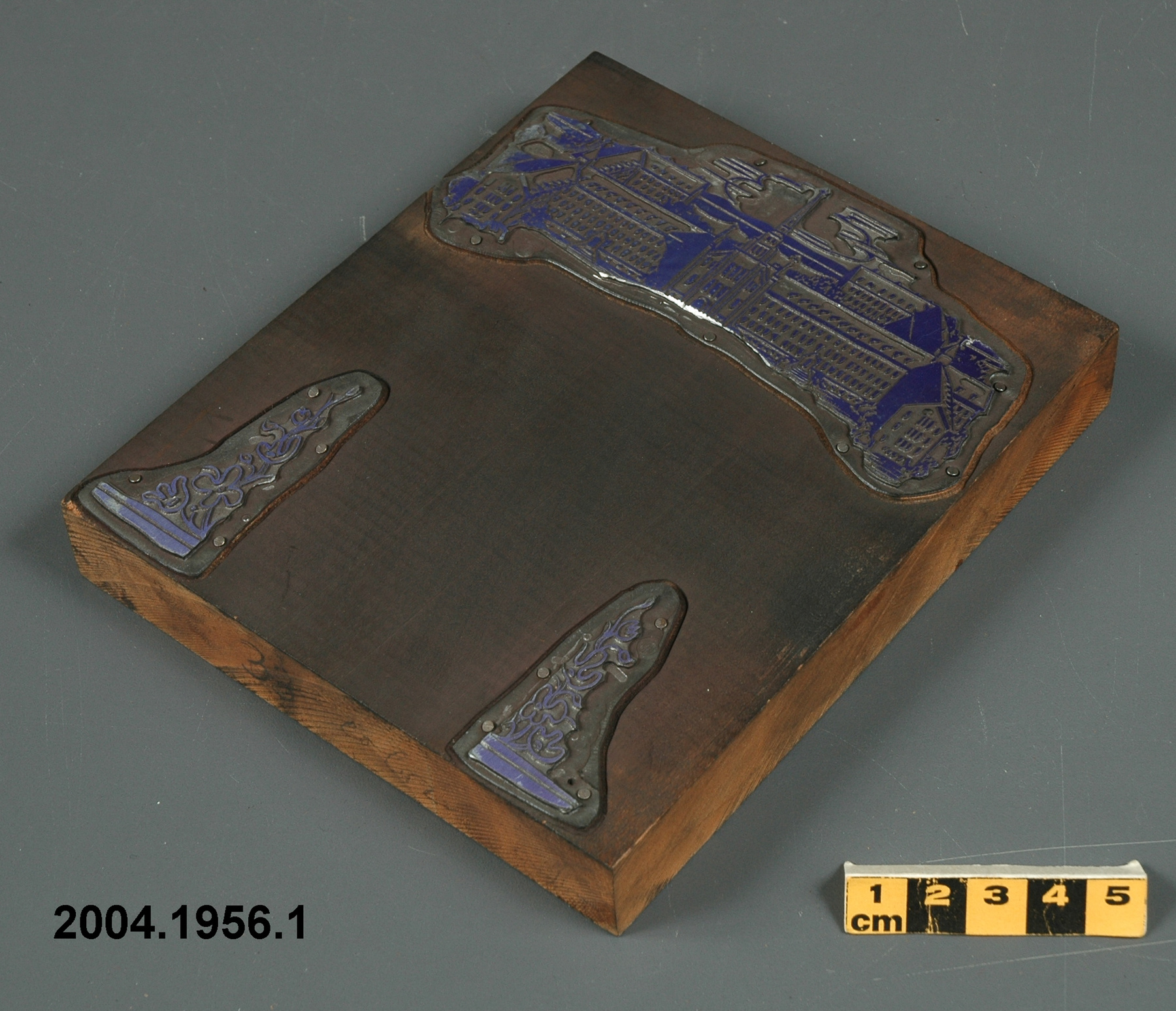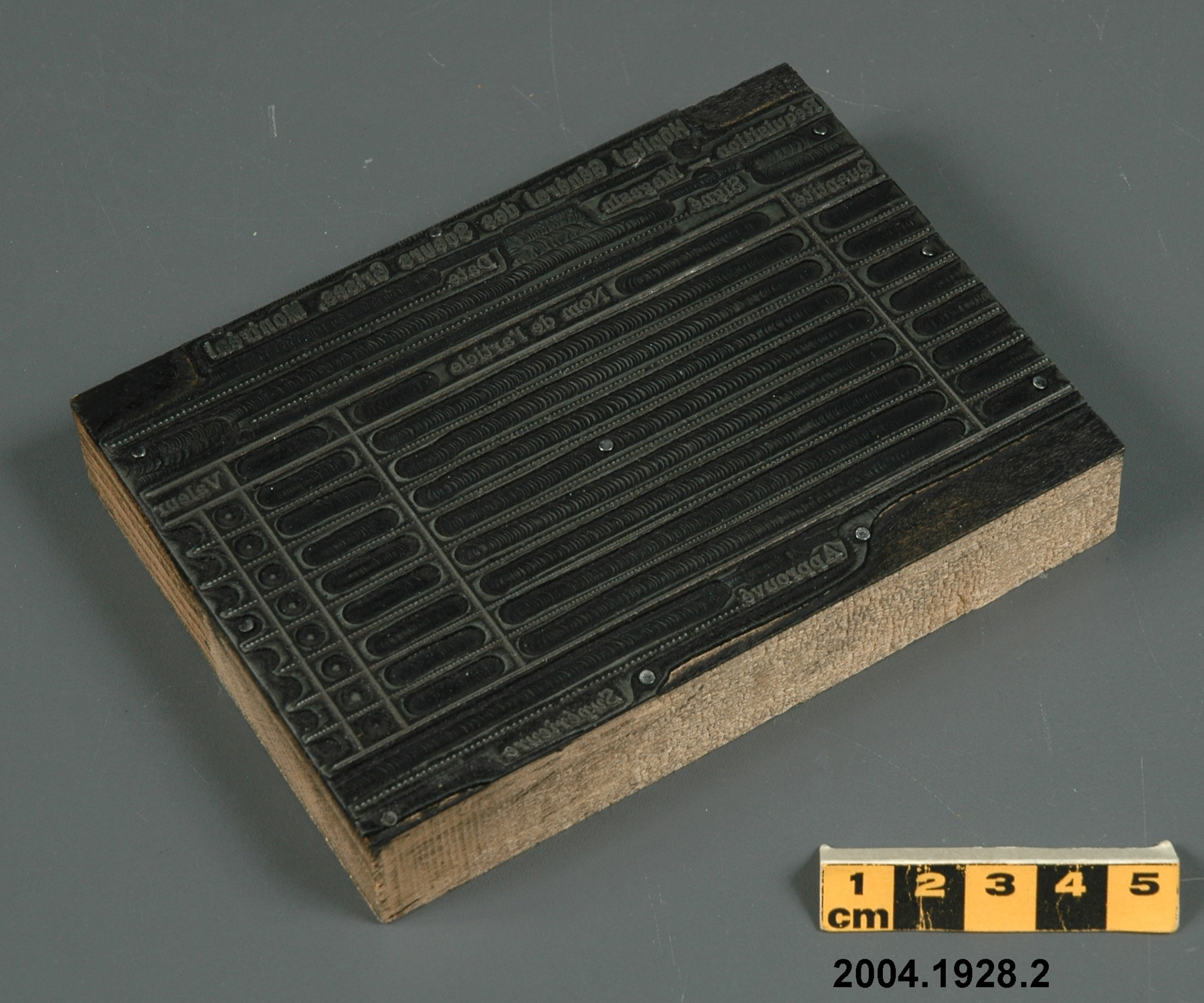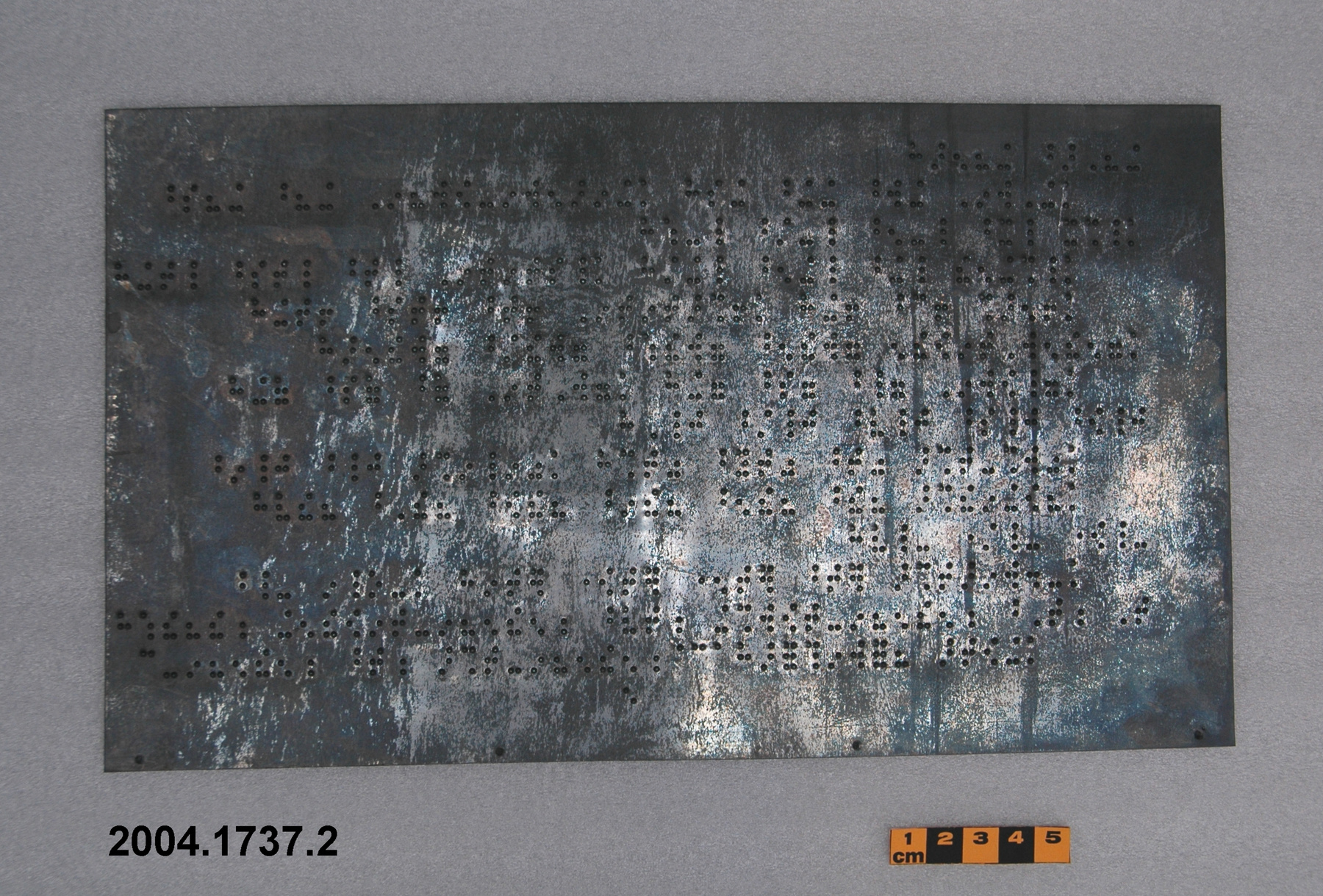Plate, printing
Use this image
Can I reuse this image without permission? Yes
Object images on the Ingenium Collection’s portal have the following Creative Commons license:
Copyright Ingenium / CC BY-NC-ND (Attribution-NonCommercial 4.0 International (CC BY-NC 4.0)
ATTRIBUTE THIS IMAGE
Ingenium,
2004.1737.002
Permalink:
Ingenium is releasing this image under the Creative Commons licensing framework, and encourages downloading and reuse for non-commercial purposes. Please acknowledge Ingenium and cite the artifact number.
DOWNLOAD IMAGEPURCHASE THIS IMAGE
This image is free for non-commercial use.
For commercial use, please consult our Reproduction Fees and contact us to purchase the image.
- OBJECT TYPE
- Braille
- DATE
- Unknown
- ARTIFACT NUMBER
- 2004.1737.002
- MANUFACTURER
- Unknown
- MODEL
- Unknown
- LOCATION
- Unknown
More Information
General Information
- Serial #
- N/A
- Part Number
- 2
- Total Parts
- 6
- AKA
- N/A
- Patents
- N/A
- General Description
- non-ferrous metal
Dimensions
Note: These reflect the general size for storage and are not necessarily representative of the object's true dimensions.
- Length
- 30.7 cm
- Width
- 17.7 cm
- Height
- N/A
- Thickness
- N/A
- Weight
- N/A
- Diameter
- N/A
- Volume
- N/A
Lexicon
- Group
- Printing
- Category
- Image carriers
- Sub-Category
- N/A
Manufacturer
- AKA
- Unknown
- Country
- Unknown
- State/Province
- Unknown
- City
- Unknown
Context
- Country
- Canada
- State/Province
- Quebec
- Period
- Unknown
- Canada
-
A printing plate from a collection used by the les Soeurs de la Charité de Montreal, the Sisters of Charity of Montreal (Soeurs Grises/Grey Nuns). The order was established by Mme Marguerite d'Youville in Montreal in 1737 to serve to poor and sick. The Grey Nuns run hospitals, orphanages, schools, homes for the aged, institutions for the blind, and other social services and works of charity in various parts of Canada and the United States. D'Youville was officially recognized as a Saint of the Roman Catholic Church in 1990. These plates were acquired by les Souers Grises from l'Institut Nazareth, which utilized them for printing the Institut's publications. L'Institut Nazareth is a co-educational school for blind children, founded in 1862 in Montreal by Benjamin-Victor Rousselot and the Grey Nuns. Music was a part of the general curriculum from the outset. The newspapers of the time describe annual concerts which introduced both first-rate performing talents and important new works to the Montreal public and a choir whose reputation led to tours of the province. Many considered the school the earliest conservatory in Montreal. The Institut Nazareth merged with the Institut Louis-Braille in June 1975, continuing thereafter as the Institut Nazareth et Louis-Braille, located in Longueuil, Quebec [Refs. 1-4]. - Function
-
A metal plate used in a printing press to transfer an image to paper, in this case by creating raised dots forming Braille lettering representing Latin abbreviations. - Technical
-
Examples of Braille embossed printing plates. Braille is a tactile system of raised dots representing letters of the alphabet. To read braille, the fingers gently glide over paper that has been embossed with the braille code. For note taking, a pointed instrument is used to punch out the dots on paper held in a metal slate. The readable raised dots appear on the other side of the paper. Braille has been an effective means of communication for people who are blind since 1829 when it was invented in Paris, France by Louis Braille. Louis Braille lost his sight at the age of three as a result of an eye injury. As a young boy at school, he became frustrated with the large and bulky raised letter alphabet used to learn reading and writing skills. Later in his life, a French artillery officer, Charles Barbier de la Serre, gave him the idea of reading by a tactile code. After many years of experimenting, Louis Braille developed a successful reading and writing system that today is used around the world. The basis of the braille system is known as a braille cell. The cell is comprised of six dots arranged in a grid of two dots horizontally by three dots vertically. The dots are conventionally numbered 1, 2, and 3 from the top of the left column and 4, 5, and 6 from the top of the right column. The presence or absence of dots gives the coding for the symbol. Dot height is approximately 0.02 inches (0.5 mm); the horizontal and vertical spacing between dot centers within a Braille cell is approximately 0.1 inches (2.5 mm); the blank space between dots on adjacent cells is approximately 0.15 inches (3.75 mm) horizontally and 0.2 inches (5.0 mm) vertically. A standard Braille page is 11 inches by 11.5 inches and typically has a maximum of 40 to 43 Braille cells per line and 25 lines. [Refs. 4-6]. - Area Notes
-
Unknown
Details
- Markings
- raised dots in patterns representing Braille letters
- Missing
- complete
- Finish
- grey
- Decoration
- N/A
CITE THIS OBJECT
If you choose to share our information about this collection object, please cite:
Unknown Manufacturer, Plate, printing, Unknown Date, Artifact no. 2004.1737, Ingenium – Canada’s Museums of Science and Innovation, http://collection.ingeniumcanada.org/en/item/2004.1737.002/
FEEDBACK
Submit a question or comment about this artifact.
More Like This


